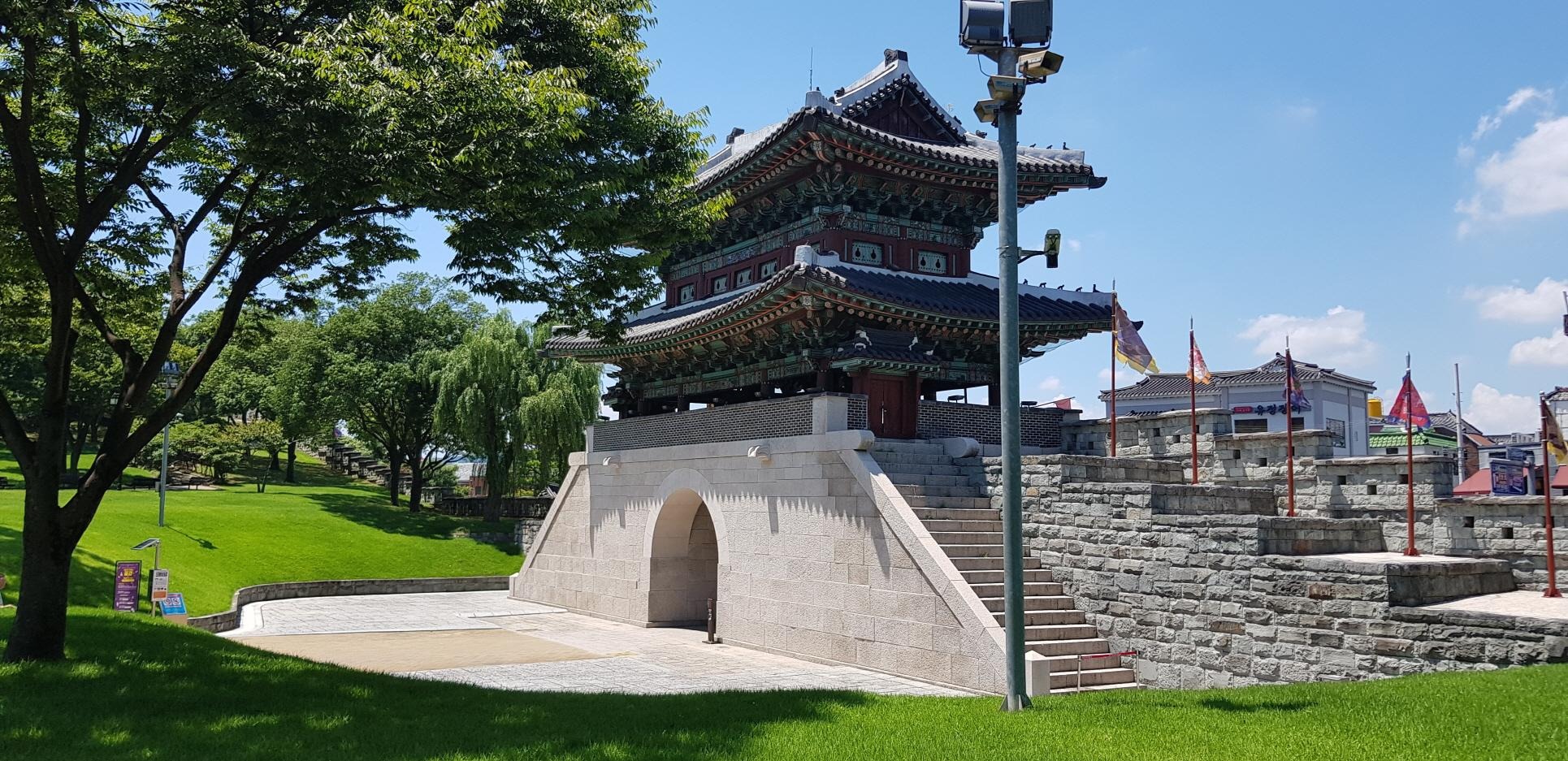Korea & Brake
3. King Onjo(Mongchontoseong Fortress, Seoul)_온조왕(몽촌토성, 서울) 본문
3. King Onjo(Mongchontoseong Fortress, Seoul)_온조왕(몽촌토성, 서울)
GBbrake 2019. 4. 26. 14:25The period of full-fledged establishment of the ancient kingdom on the Korean peninsula is the Three Kingdoms Period. The names of the three countries are Goguryeo, Baekje, and Silla. Goguryeo to the north of the Korean peninsula, Baekje to the west, and Silla to the east, respectively, were built around the first century B.C. and lasted about 700 years until the Three Kingdoms were reunified by the Silla in 668. Since there are relatively more historical data than before, it is classified as ancient Korean history and active research is being conducted.
Among these, Baekje is the country that dominated the western part of the Korean peninsula, including Seoul, where foreign tourists visiting Korea can easily check the ruins. Although it disappeared from history 1,500 years ago, relevant artifacts are still being excavated, and Mongchontoseong in the Olympic Park and Pungnaptoseong are one of Baekje's representative sites.
Onjo is the son of Jumong who founded Goguryeo as the founder of Baekje. Thus, Onjo was the prince of Goguryeo, and we can consider Goguryeo and Baekje as the family nations which was founded by a family. For more information about King Onjo, please refer to the Reference room in my blog.(https://gbbrake.tistory.com/202)
한반도에 본격적인 고대왕국이 수립된 시기는 삼국시대이며 세 나라의 이름은 고구려, 백제, 신라이다. 한반도의 북쪽에는 고구려, 서쪽에는 백제, 그리고 동쪽에는 신라가 각각 약 기원전 1세기경에 세워지고 668년 신라에 의해 삼국이 통일될 때까지 약 700여년 지속된 시기이며 이전에 비해 남아있는 사료가 비교적 많은 편이라 한국 고대사로 분류되어 활발한 연구가 이루어지고 있다.
이 중 백제는 현재의 서울을 비롯한 한반도의 서부를 지배했던 국가로서 한국을 방문하시는 외국인 관광객들이 관련 유적들을 가장 쉽게 확인해 볼 수 있다. 비록 1,500년전에 역사속에서 사라지기는 하였지만 관련 유물들이 현재도 발굴되고 있으며 올림픽공원 내의 몽촌토성, 풍납토성 등이 백제의 대표적인 유적지 중 하나이다.
온조는 백제건국의 시조로서 고구려를 세운 주몽의 아들이다. 따라서 온조는 고구려의 왕자였으며 고구려와 백제는 한 집안에서 건국한 가족 국가라고도 볼 수 있겠다. 온조왕에 대한 자세한 내용은 자료실을 참고하시기 바란다.(https://gbbrake.tistory.com/202)
The Mongchontoseong fortress in the Olympic Park visited this time is presumed to be the 'Hanam Wiryeseong', and it is believed that the Pungnaptoseong was used as the royal castle during normal times, and if crisis situation was occurred, then evacuated to the Mongchontoseong to prepare for the invasion of the enemy.
Mongchontoseong is located in Songpa-gu, Seoul and parking is available in the Olympic Park. However, public transportation is convenient and the area near Jamsil, Songpa-gu is crowded with lots of cars so using public transportation would be recommended.
이번에 방문하게 된 올림픽공원 내의 몽촌토성은 하남위례성으로 추정되는 곳으로서 평시에는 풍납토성을 왕성으로 이용하다가 유사시에 몽촌토성으로 대피하여 적의 침입을 대비했던 것으로 보여진다.
몽촌토성은 서울시 송파구에 위치하며 올림픽공원 내의 주차장 이용이 가능하나 대중교통이 잘 되어 있고 송파구 잠실 인근은 평소에 차량이 많아 혼잡하므로 대중교통 이용을 추천 드린다.
Address : 424 Oryun-dong Olympic Road, Songpa-gu, Seoul
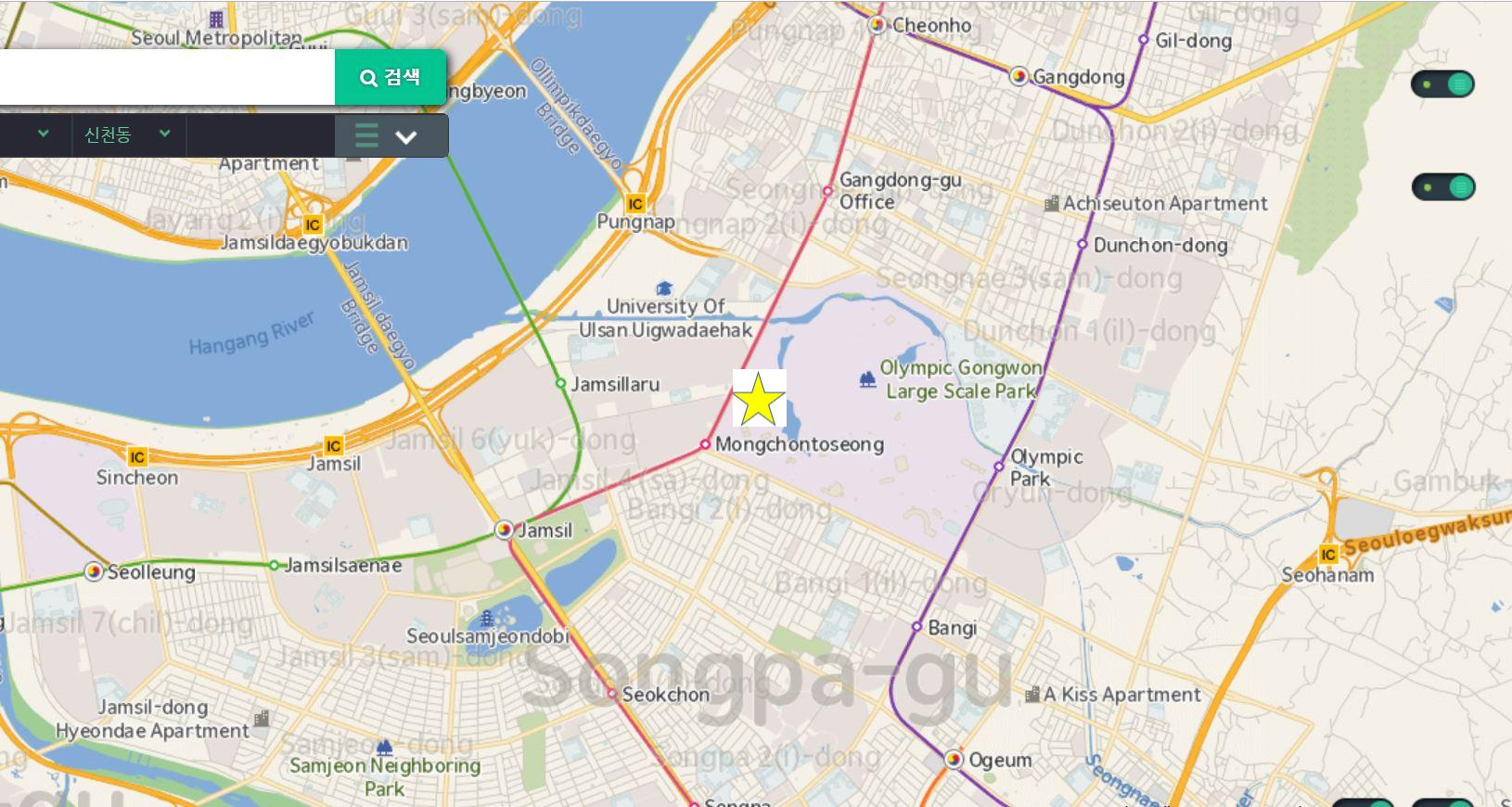
The World Peace Gate, the symbol of Olympic Park. It was built to commemorate the 88 Seoul Olympics, and it was a sculpture that made my heart flutter every time I had a picnic here when I was a kid.
올림픽공원의 상징인 평화의 문. 88서울올림픽을 기념하기 위해 세워졌으며 필자가 어릴 적 이곳으로 소풍 올때마다 마음을 설레게 했던 조형물이다.

Seoul City started construction of Olympic Park in 1984 to pray for the successful hosting of the Seoul Olympics, however, the construction was stopped for a time because Mongchontoseong, the fortress of early Baekje, was excavated.
서울시에서 성공적인 서울올림픽 개최를 기원하기 위해 1984년에 올림픽공원 착공을 했는데 이곳에서 백제 초기의 토성인 몽촌토성이 발굴되면서 공사가 한 때 중단되었다.
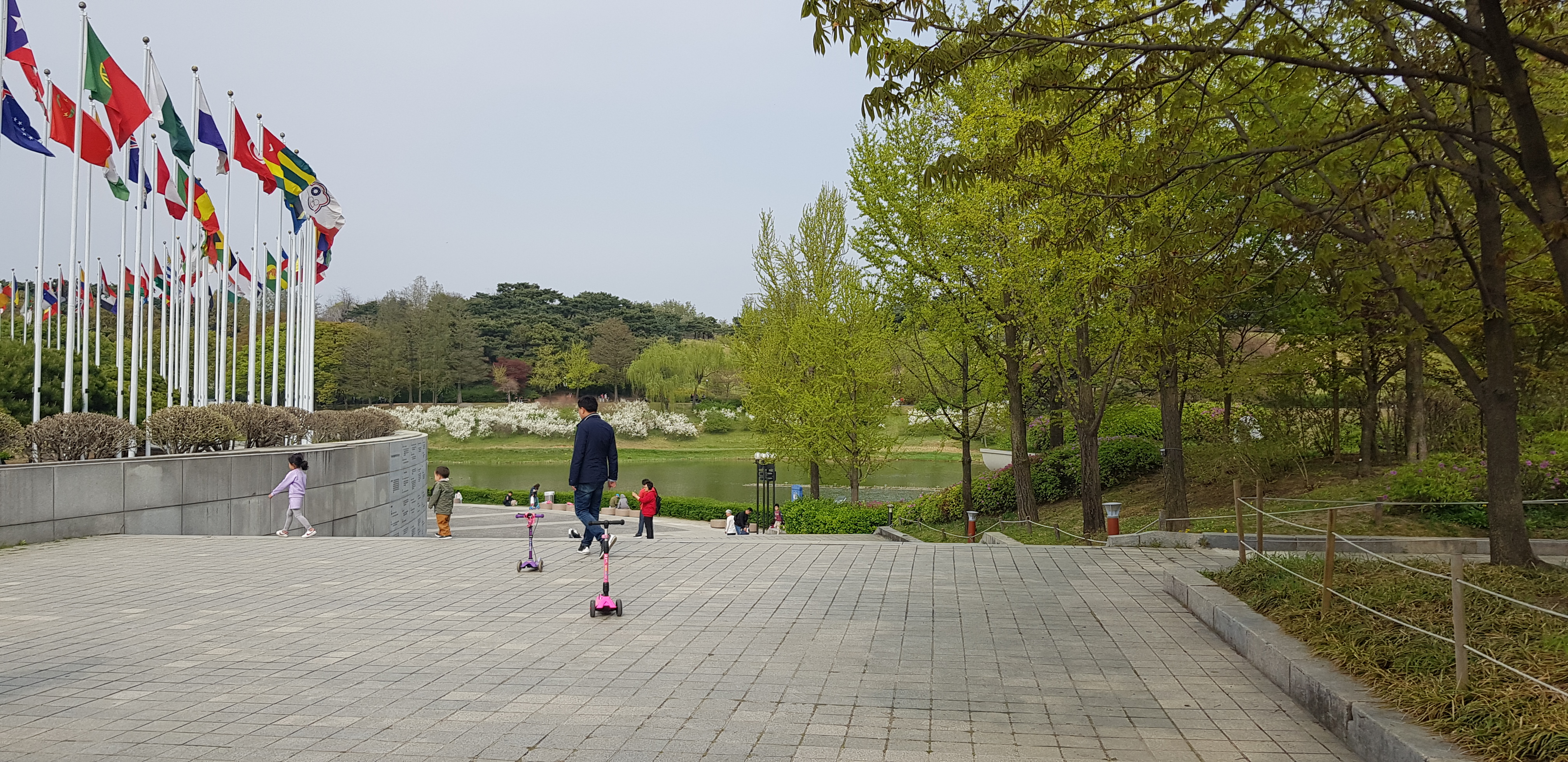
After several discussions, it was decided to create a park in order to preserve Mongchontoseong, and construction was resumed and officially opened in 1986.
수 차례의 논의끝에 몽촌토성을 보존하는 차원에서 공원을 조성하는 것으로 결정되고 공사가 재개되어 1986년에 공식 개장하였다.
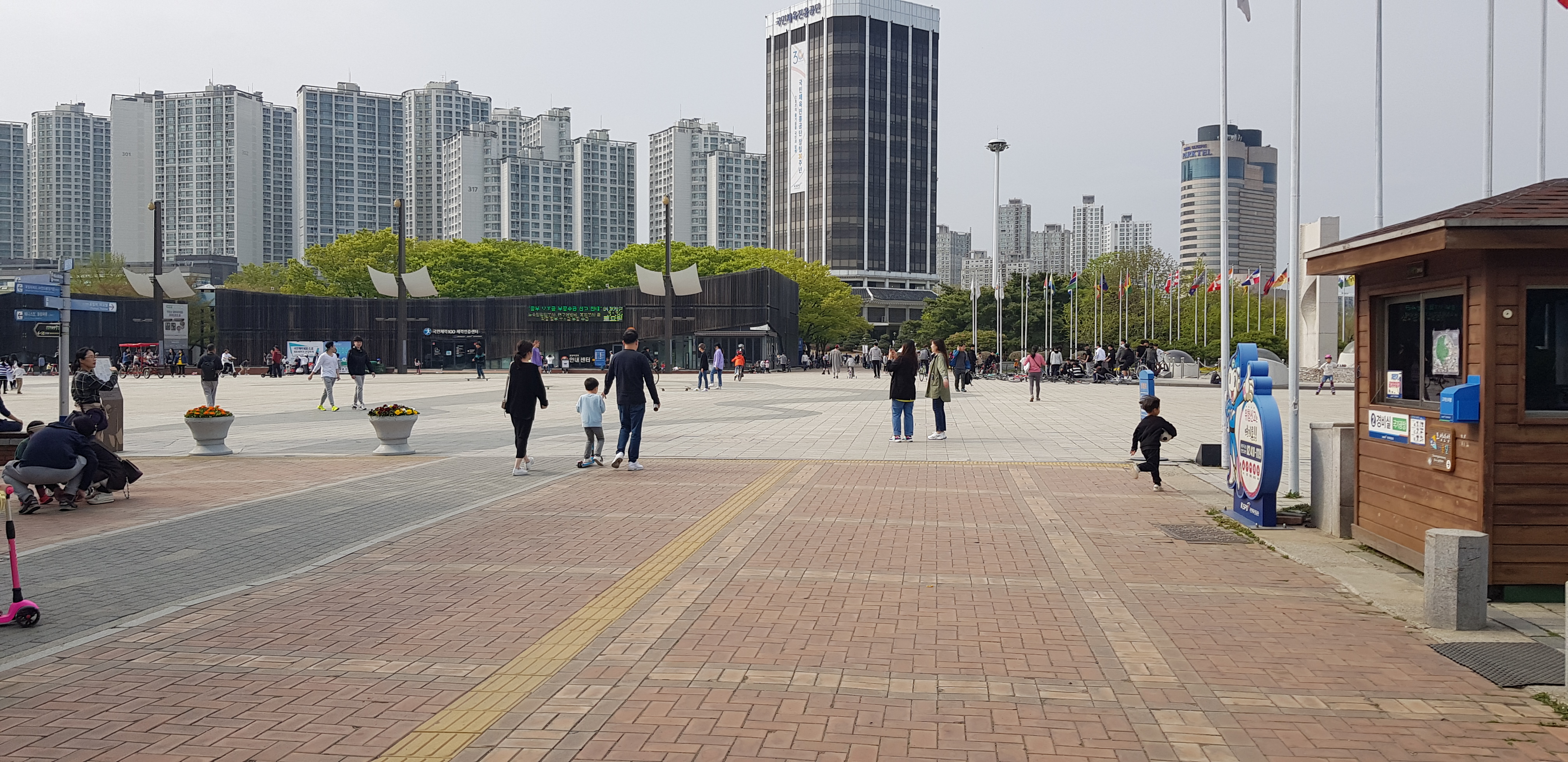
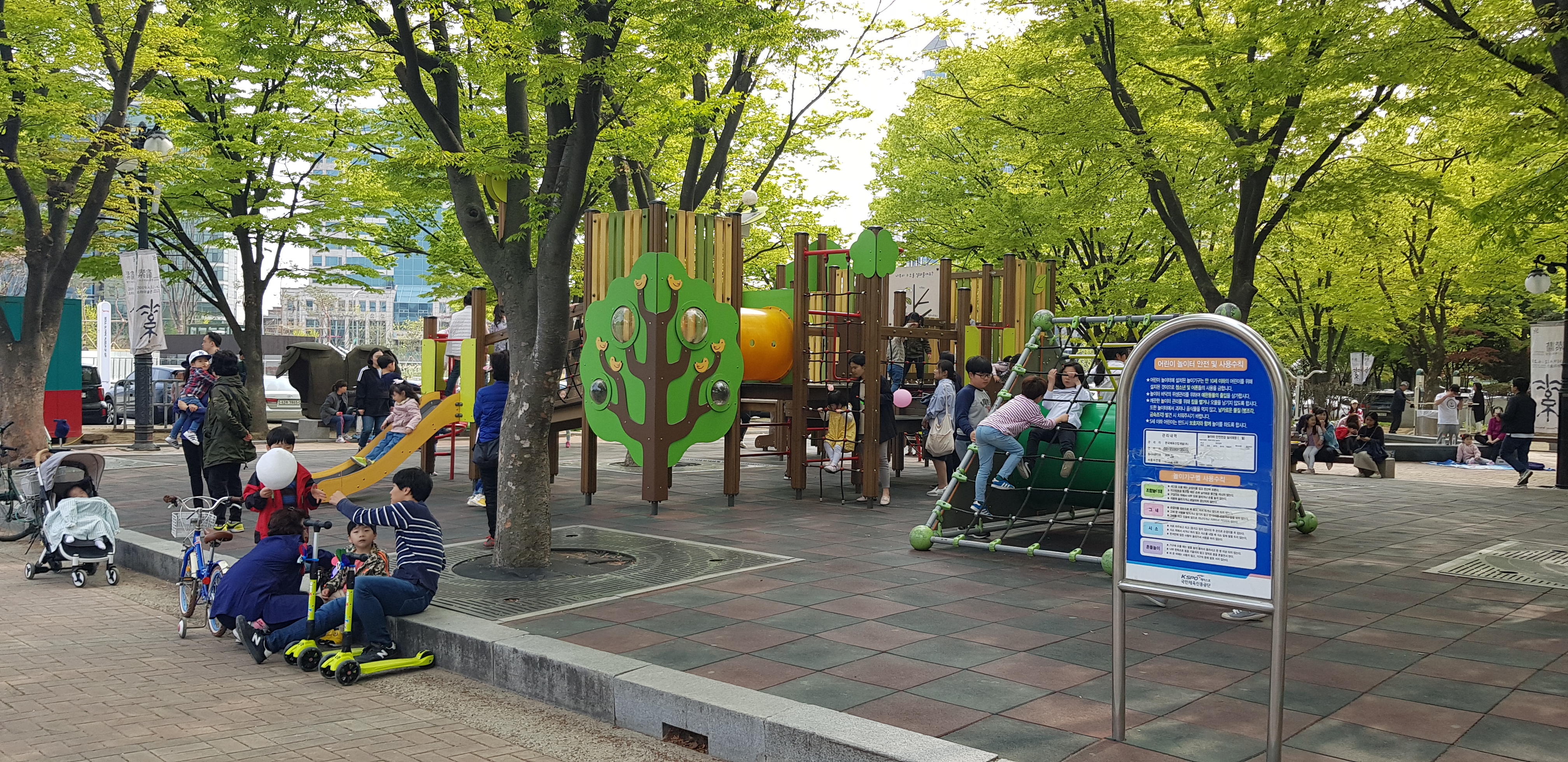
I would like to evaluate that decision was a skill of God. At present, all around the park has been developed hugely, surrounded by forests of buildings, and one of the most expensive districts in Seoul.
필자는 이러한 결정이 신의 한 수였다고 평가하고 싶다. 현재 공원 주위는 모두 엄청난 개발이 이루어져서 빌딩숲에 둘러싸여 있고 서울에서 지가가 가장 비싼 지역중 한 곳이다.
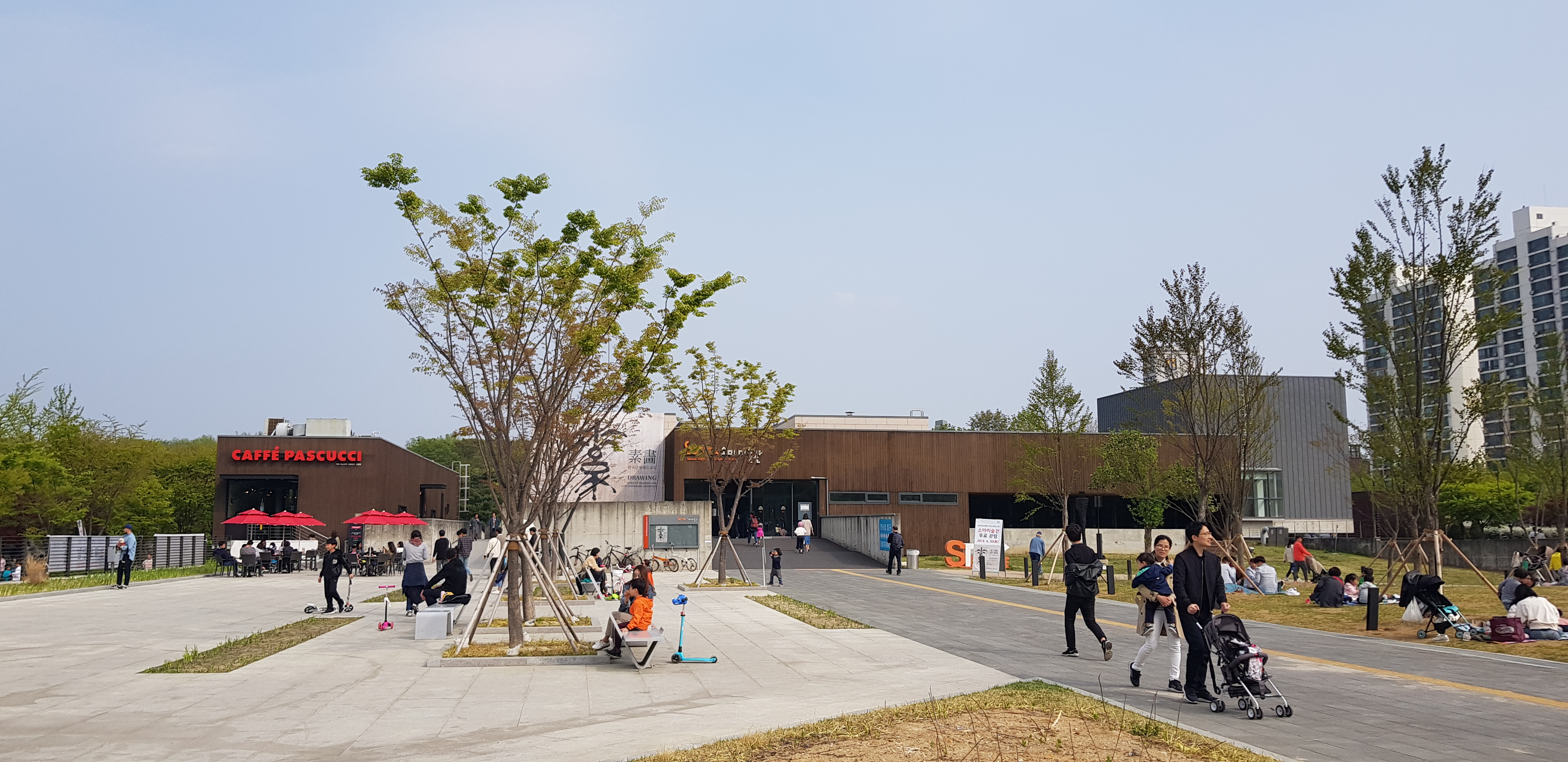
If the Olympic Park had not been established, it seems that the buildings or apartments are built in there, as in the surroundings, and the historically important ruins might been destroyed and buried under the ground forever.
만약 올림픽공원이 조성되지 않았다면 아마도 이곳은 주변과 마찬가지로 빌딩 또는 아파트가 들어서면서 역사적으로 매우 중요한 유적들이 파괴되고 땅 밑에 영원히 묻혀 버렸을 수도 있었을 것이다.
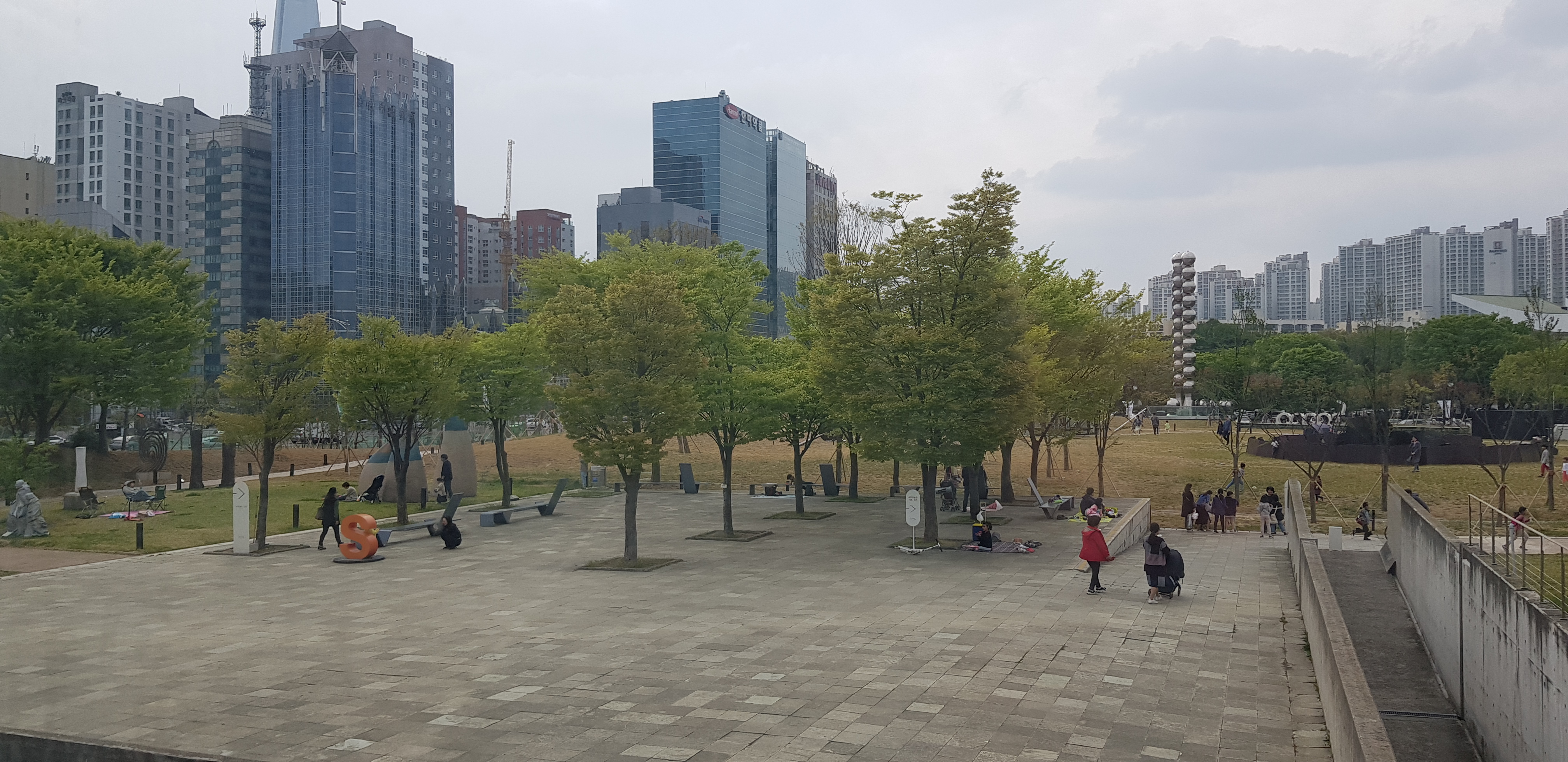
I thought that it was an important decision to prepare enough green space in the city and to preserve the precious relics of Hanseong Baekje.
도심 내 충분한 녹지공간을 마련함과 더불어 한성백제의 소중한 유물들을 보존할 수 있는 중요한 결정이었다고 생각한다.

It is Soma Art Museum in the park. Starting with an outdoor sculpture park inside the park, it opened in 2004 and is displaying various works.
공원내에 있는 소마미술관이다. 공원 내의 야외 조각공원을 시작으로 2004년에 개관하였으며 각종 작품들을 전시하고 있다.
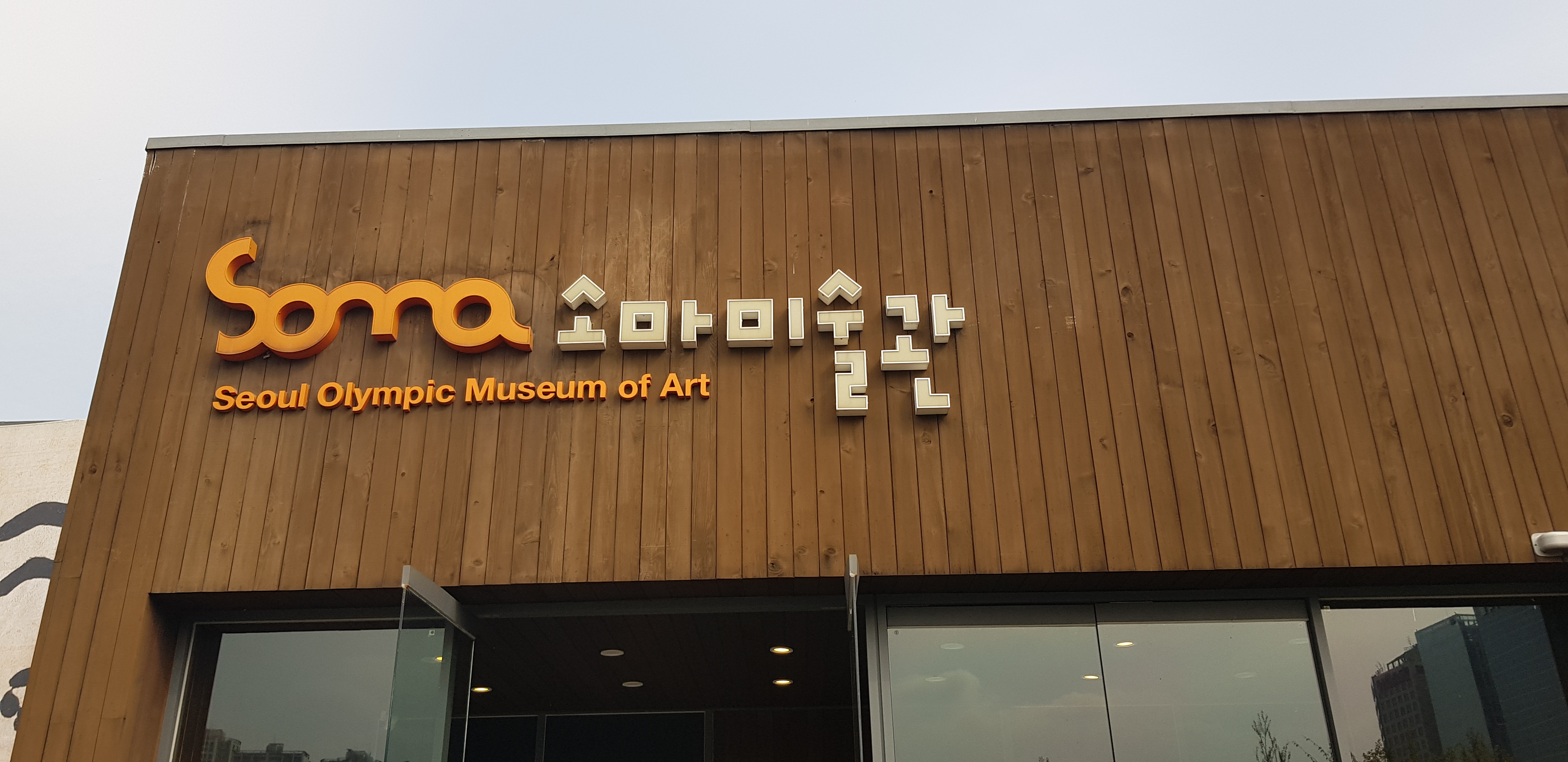
Photographs inside the museum were banned so, unfortunately, I could not include them in the blog. When I visited, there were a variety of sketches, including the croquis drawn with pencils, and there are many works in the spacious exhibition room. When you come to Olympic Park, please stop by here.
미술관 내부의 사진촬영은 금지되어 아쉽게도 블로그에 담아내지는 못했다. 필자가 방문했을 당시 연필로 그려낸 크로키를 포함한 다양한 스케치들이 전시되어 있었으며 넓은 전시실에 많은 작품들이 있으니 올림픽 공원에 오시면 꼭 한번 들러 보시기 바란다.
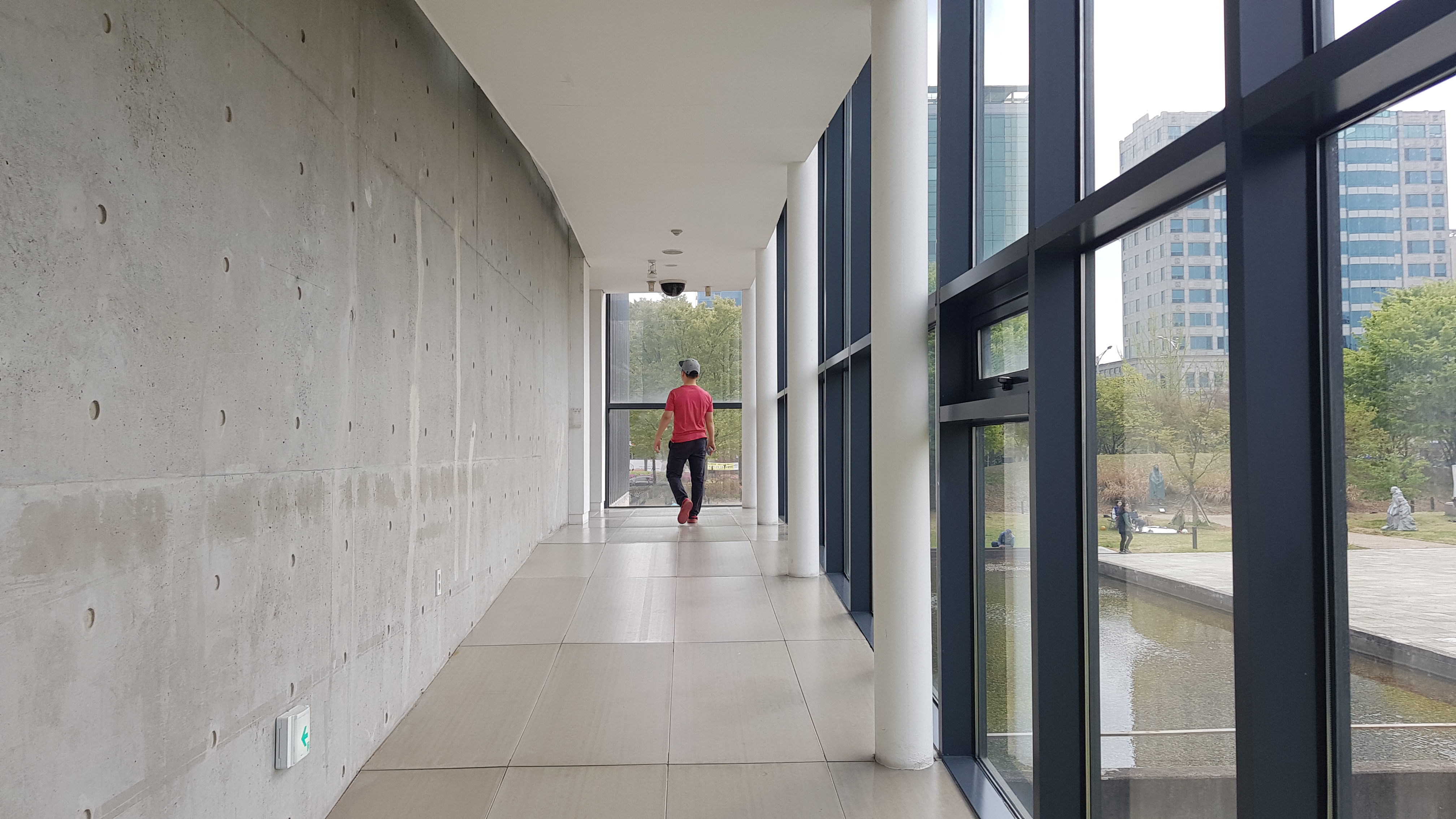
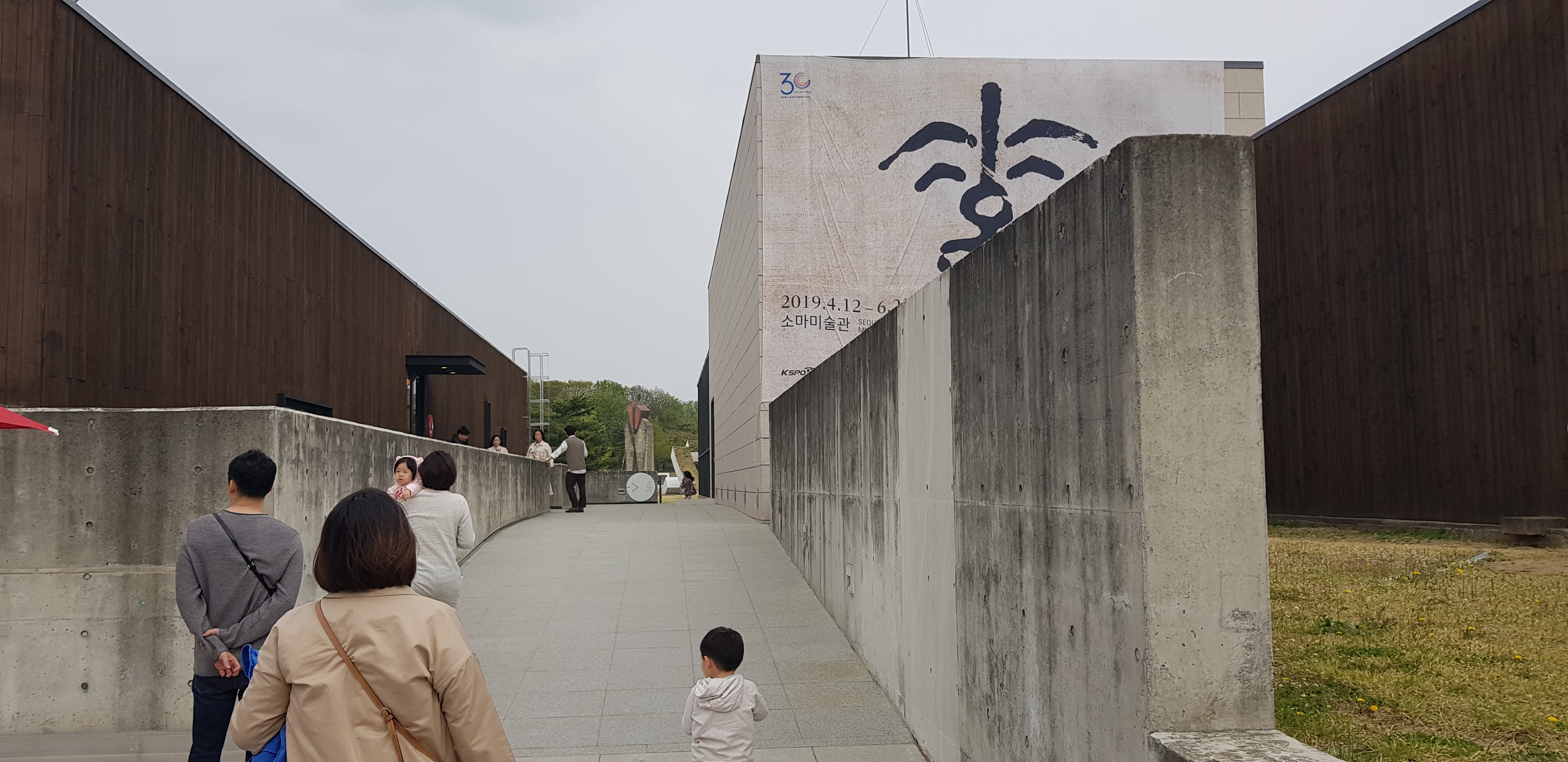
When you leave the museum and walk forward with your back toward The World Peace Gate, you can see various sculptures on the lawn. Sculpture Park.
미술관을 나와 평화의 문을 등지고 걸어가면 잔디밭에 여러 조형물들이 전시되어 있다. 조각공원이다.
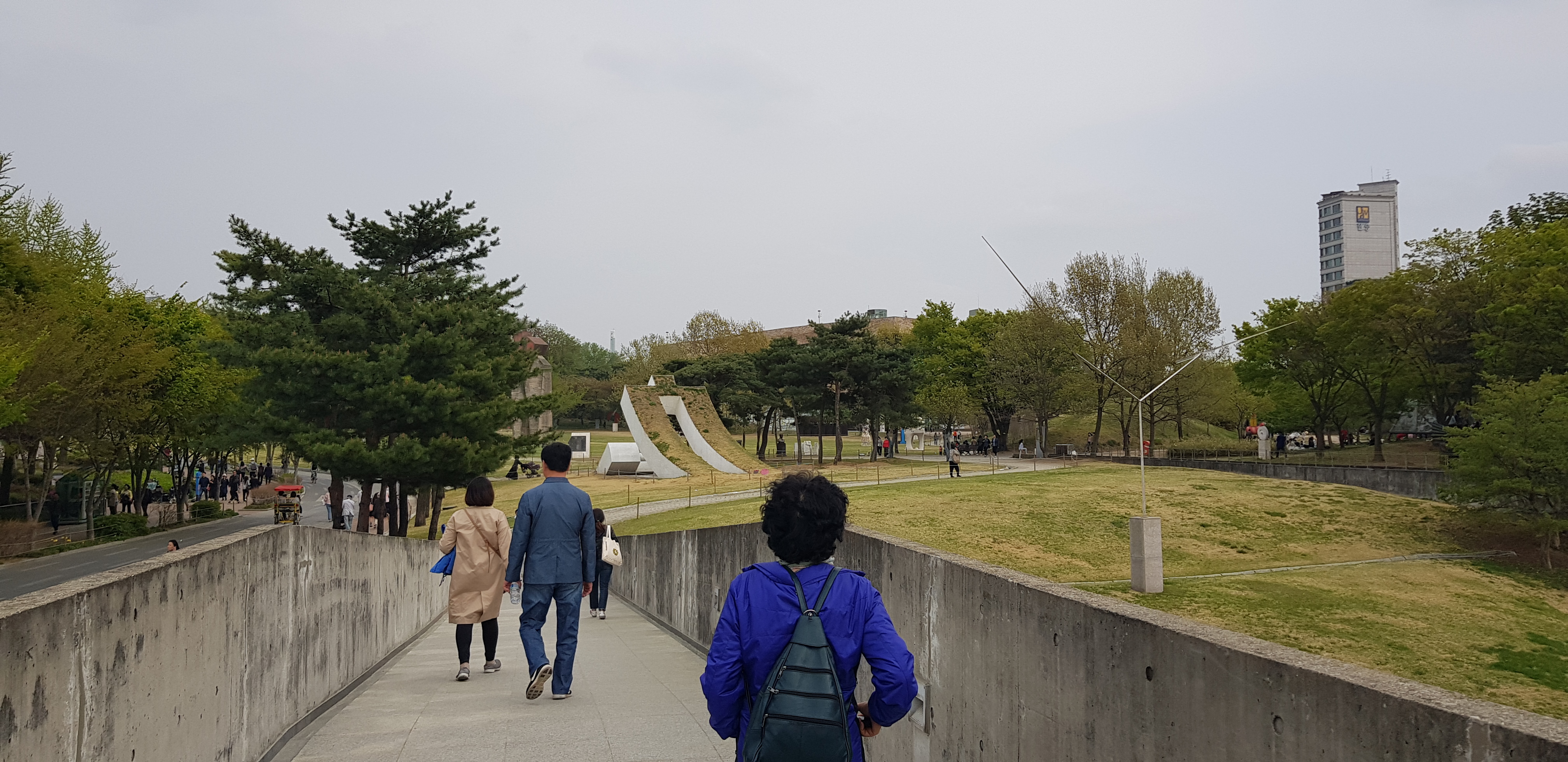


Hanseong Baekje Museum is located at the end of the sculpture park.
조각공원이 끝나는 지점에 한성백제 박물관이 자리하고 있다.

Baekje built Hanam Wiryeseong in the lower part of the Han River of Seoul, the capital of the republic of Korea, and made it the capital until the capital was moved to Woongjin in 475 after the founding (BC.18). The early Baekje of this period is called Hanseong Baekje.
백제는 건국 후(BC.18)~475년 웅진으로 수도를 옮길 때까지 현재 대한민국의 수도 서울지역인 한강 하류에 하남위례성을 건설하여 도읍으로 하였으며 이 시기의 초기백제를 ‘한성백제’라고 부른다.

Seoul, which was the capital for about 500 years out of 700 years of Baekje history, was studied mainly focused on the Joseon Dynasty until the recent date. The reason is the capital of Joseon was also Seoul, and cultural assets were buried in the upper and lower strata of the same area at a time interval of about 1000 years. It was difficult to unearth the Baekje ruins of 1500 years ago, so research progress was also slow.
백제역사 700년 중에서 약 500년간이나 수도의 위치에 있었던 이곳 서울이 최근까지도 조선시대를 중심으로 연구가 되었던 것은, 조선의 수도도 역시 서울이었으며 문화재들이 한 지역에 약 1000년이라는 시간적 간격을 두고 동일 지역의 위 아래 지층에 묻혀 있었기 때문이다. 1500년 전의 백제 유적들을 발굴하기가 어려우니 당연히 연구진행도 더딜 수밖에 없었다.

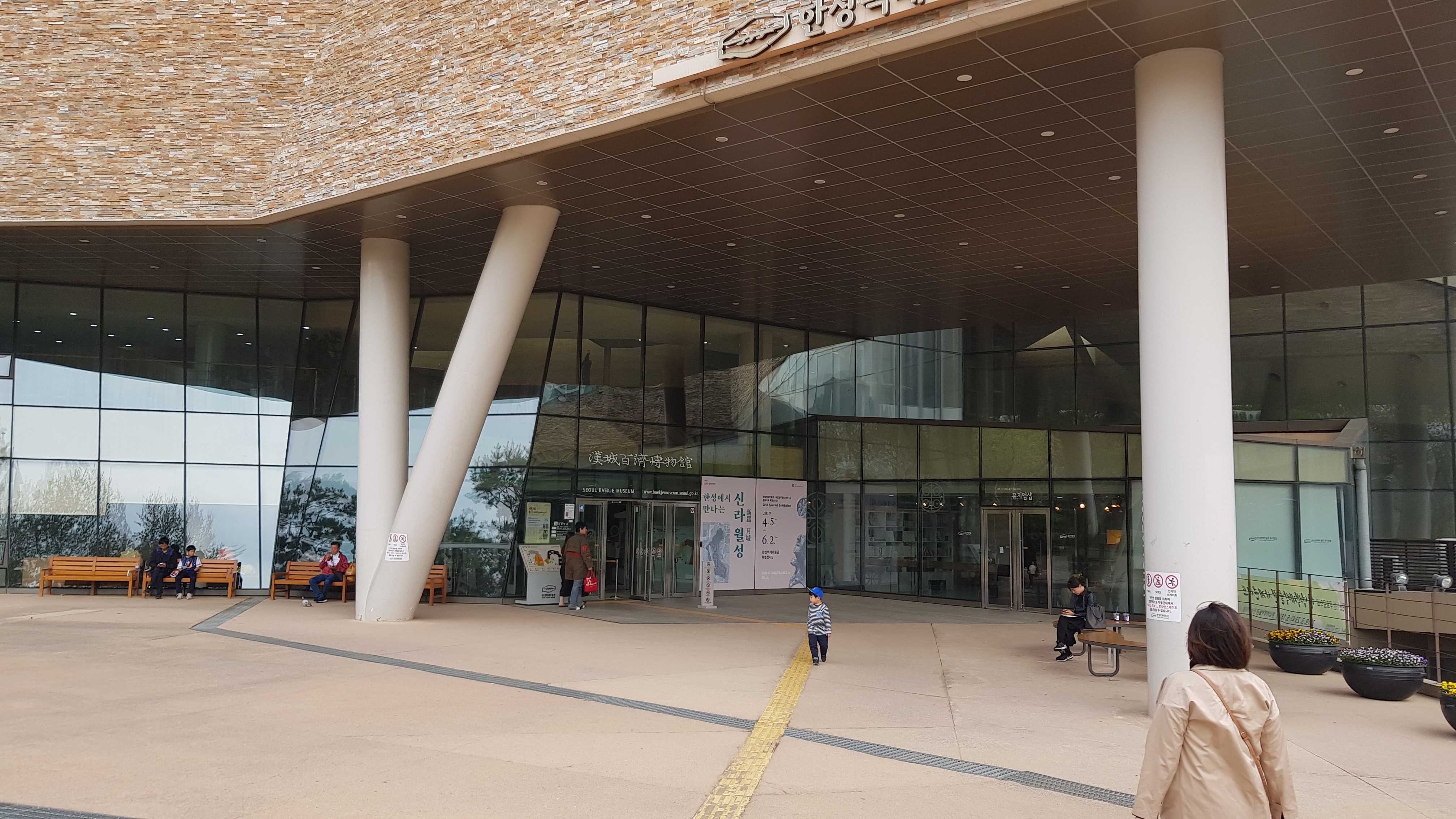

Before the museum was built, it was made up of hills and 1st floor of the building was built on the same level as the hill. As you enter the entrance to the museum, you will see the 1st basement level.
박물관이 세워지기 전 이곳은 언덕으로 이루어져 있었으며 언덕과 동일한 높이를 1층으로 하여 건물이 지어졌다. 따라서 박물관 입구로 들어가면 지하 1층이 나온다.
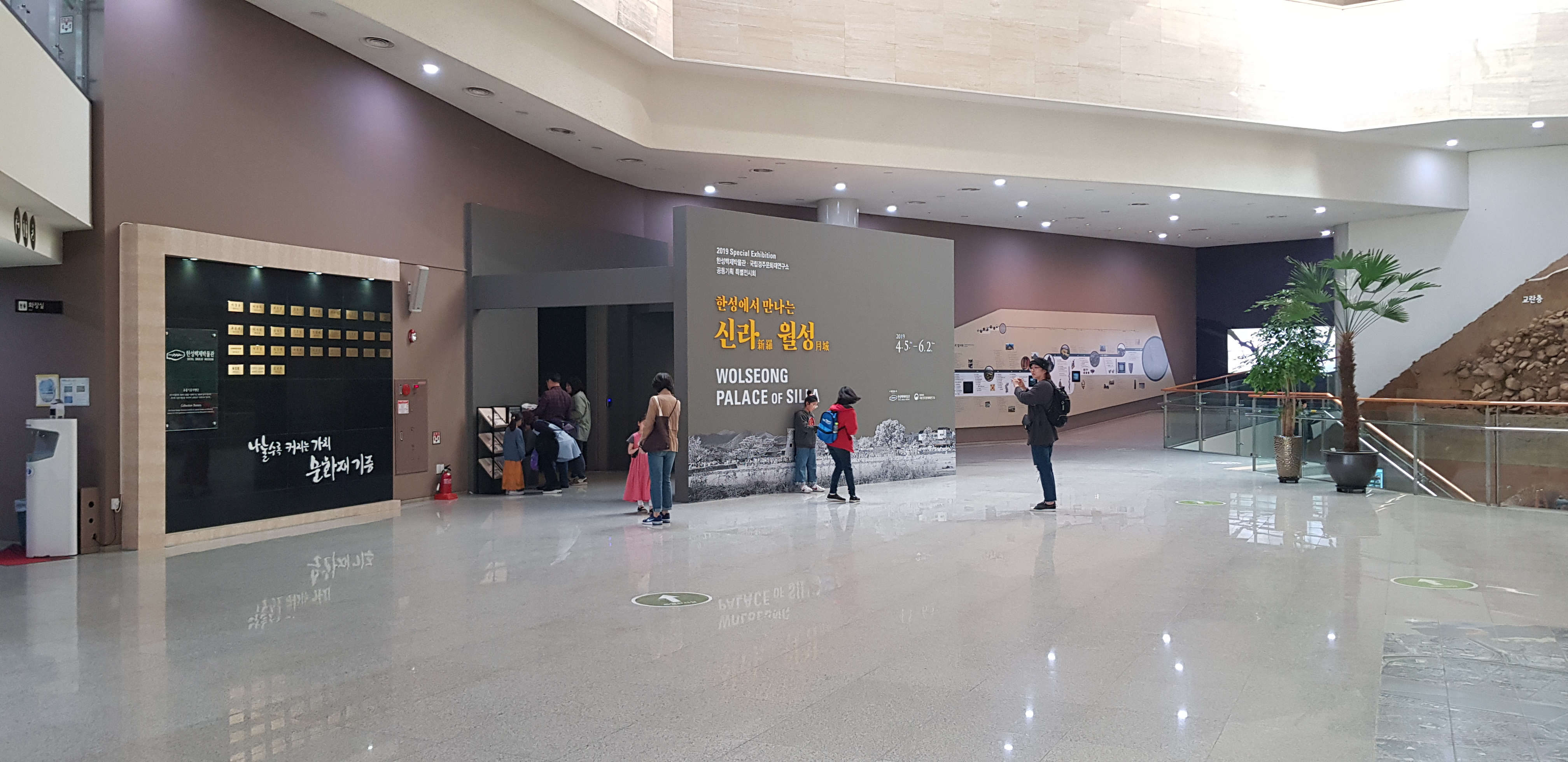
The cross section of Pungnaptoseong, earthen ramparts in the Baekje era which remains to this day together with Mongchontoseong, is reproduced.
몽촌토성과 함께 백제시대의 토성으로 현재까지 남아있는 풍납토성의 단면을 재현해 놓았다.
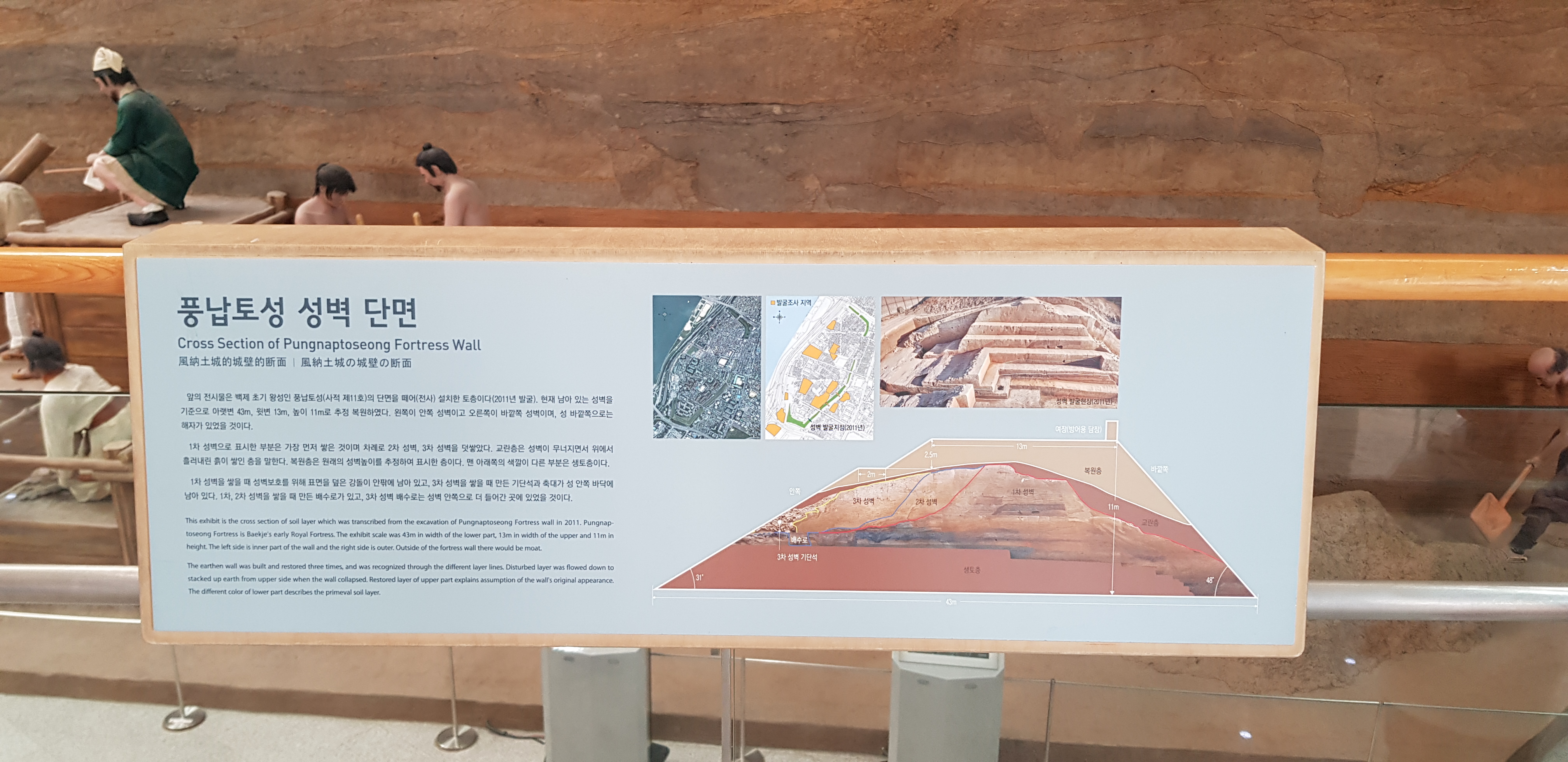
The interior of the museum consists of several exhibition rooms, which collect and display relics related to Hanseong Baekje.
박물관 내부는 몇 개의 전시실로 구성되어 있고 한성백제와 관련된 유물들을 모아서 전시하고 있다.
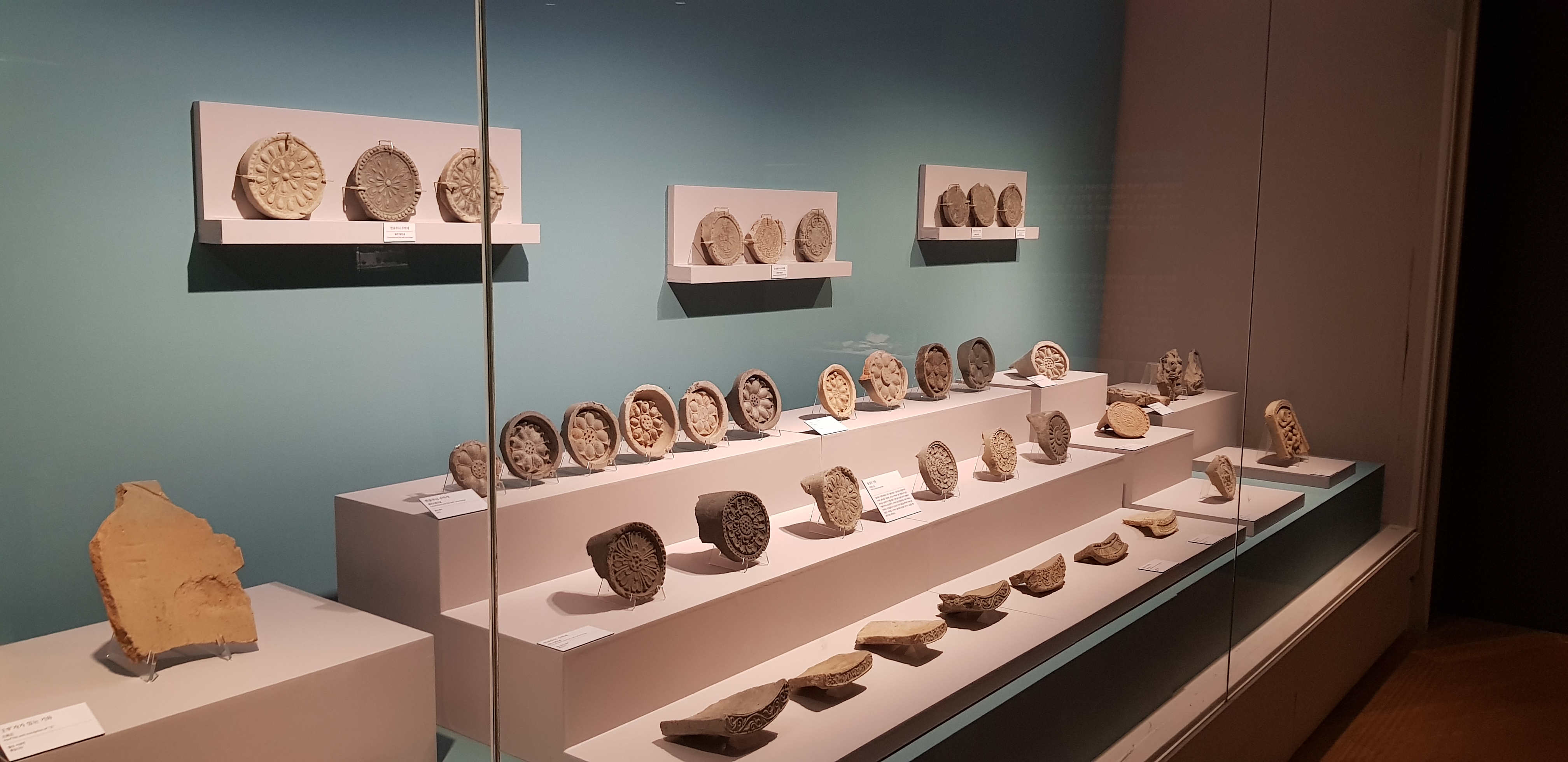
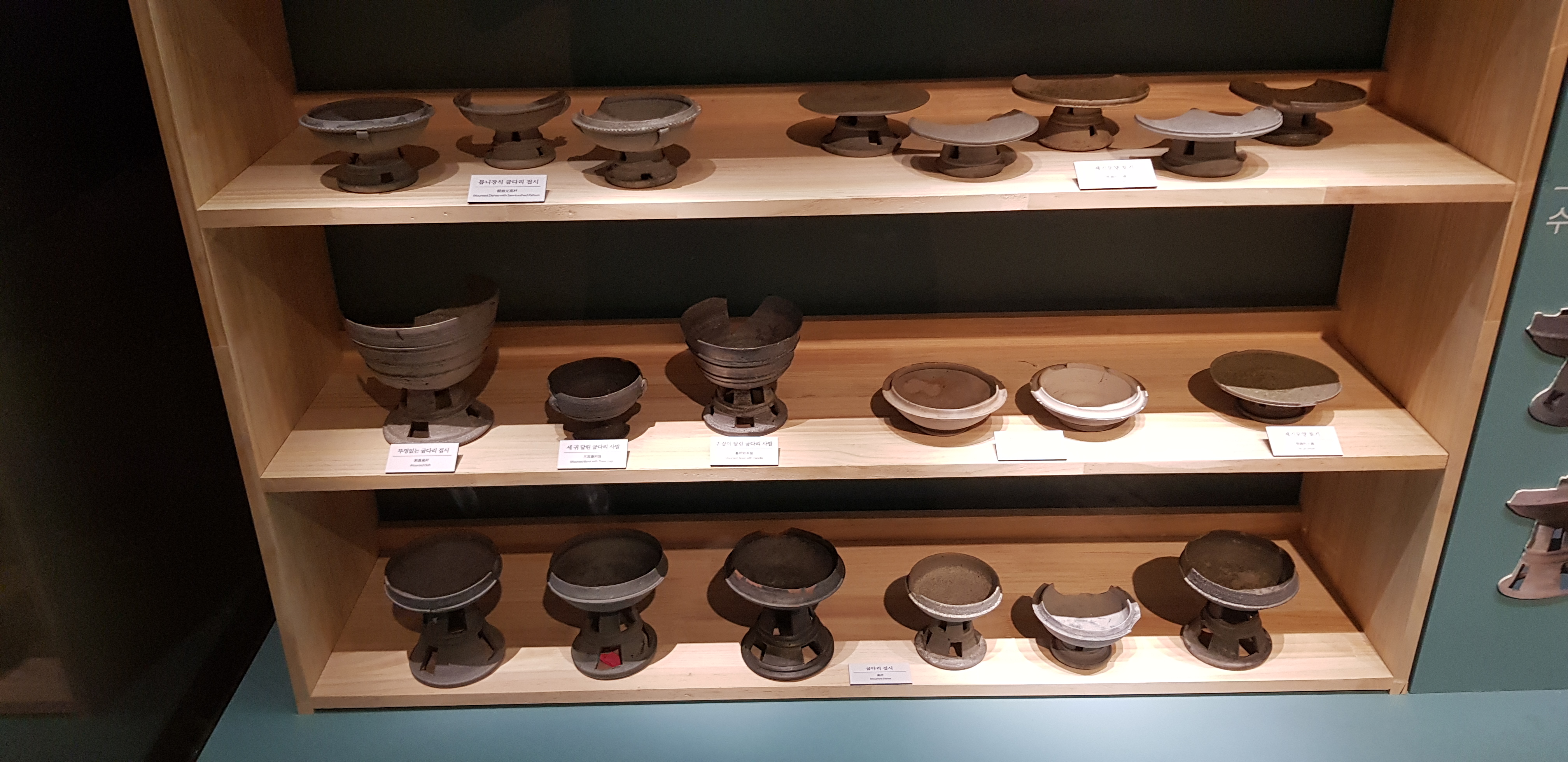


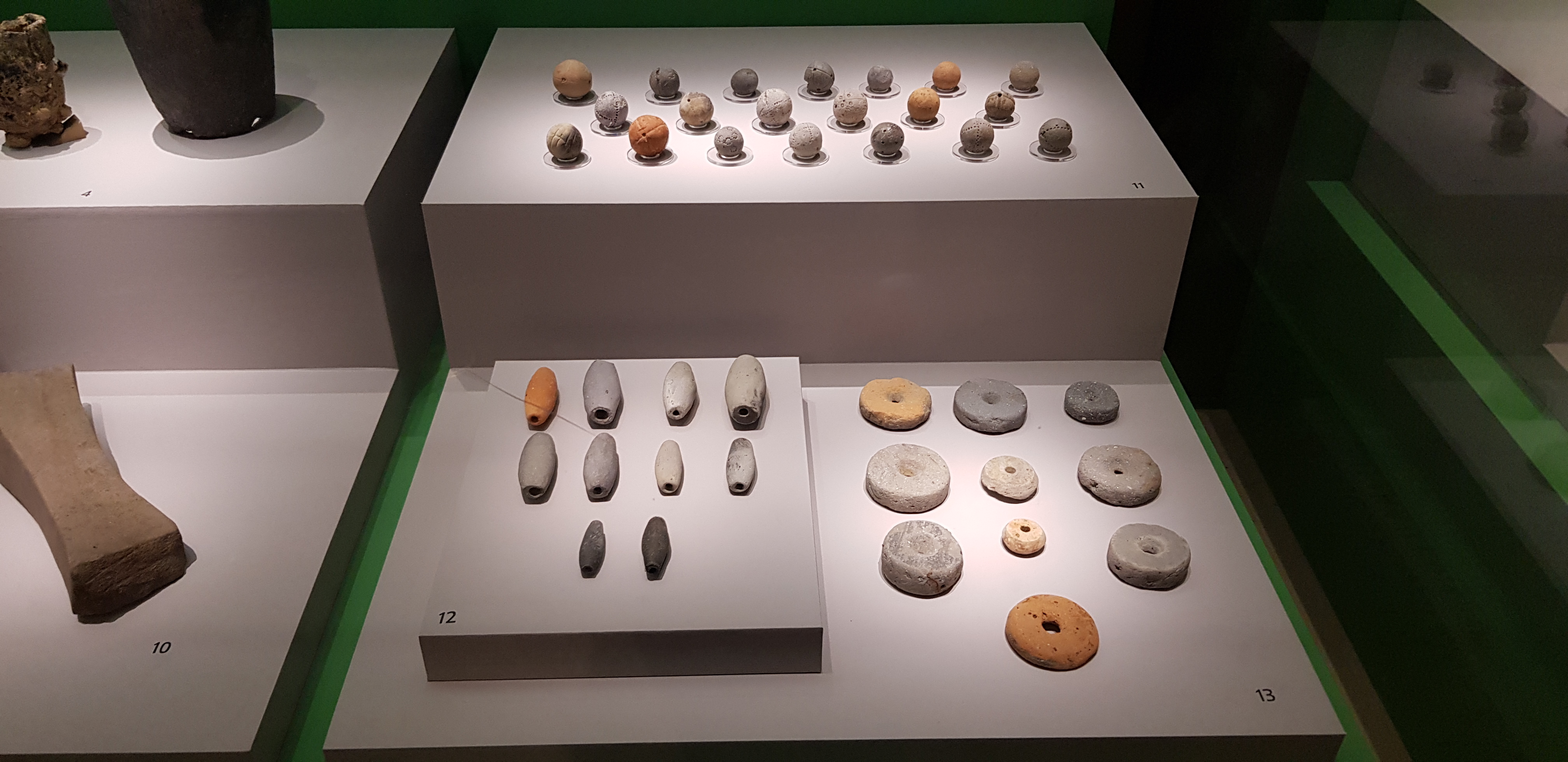


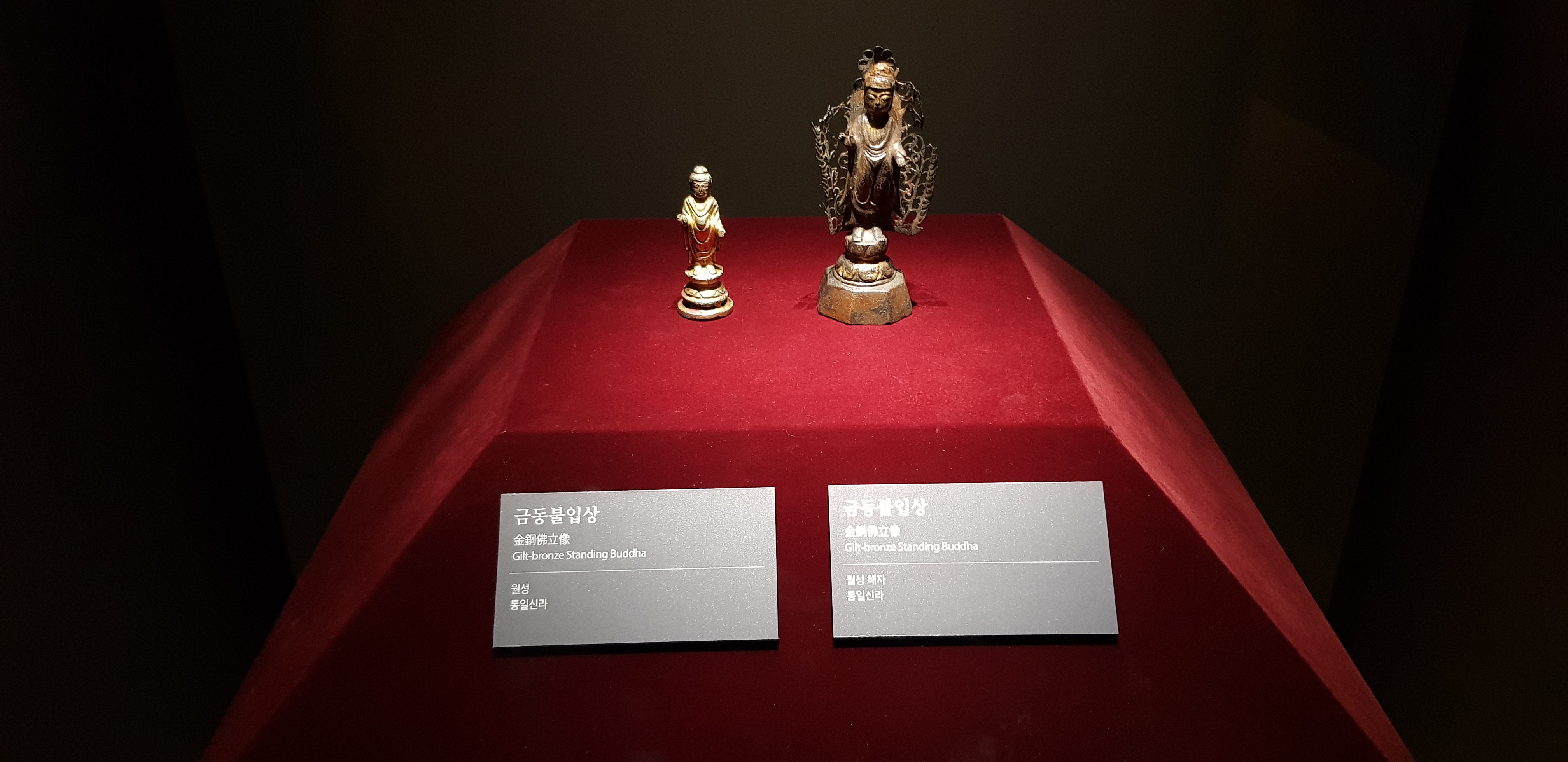
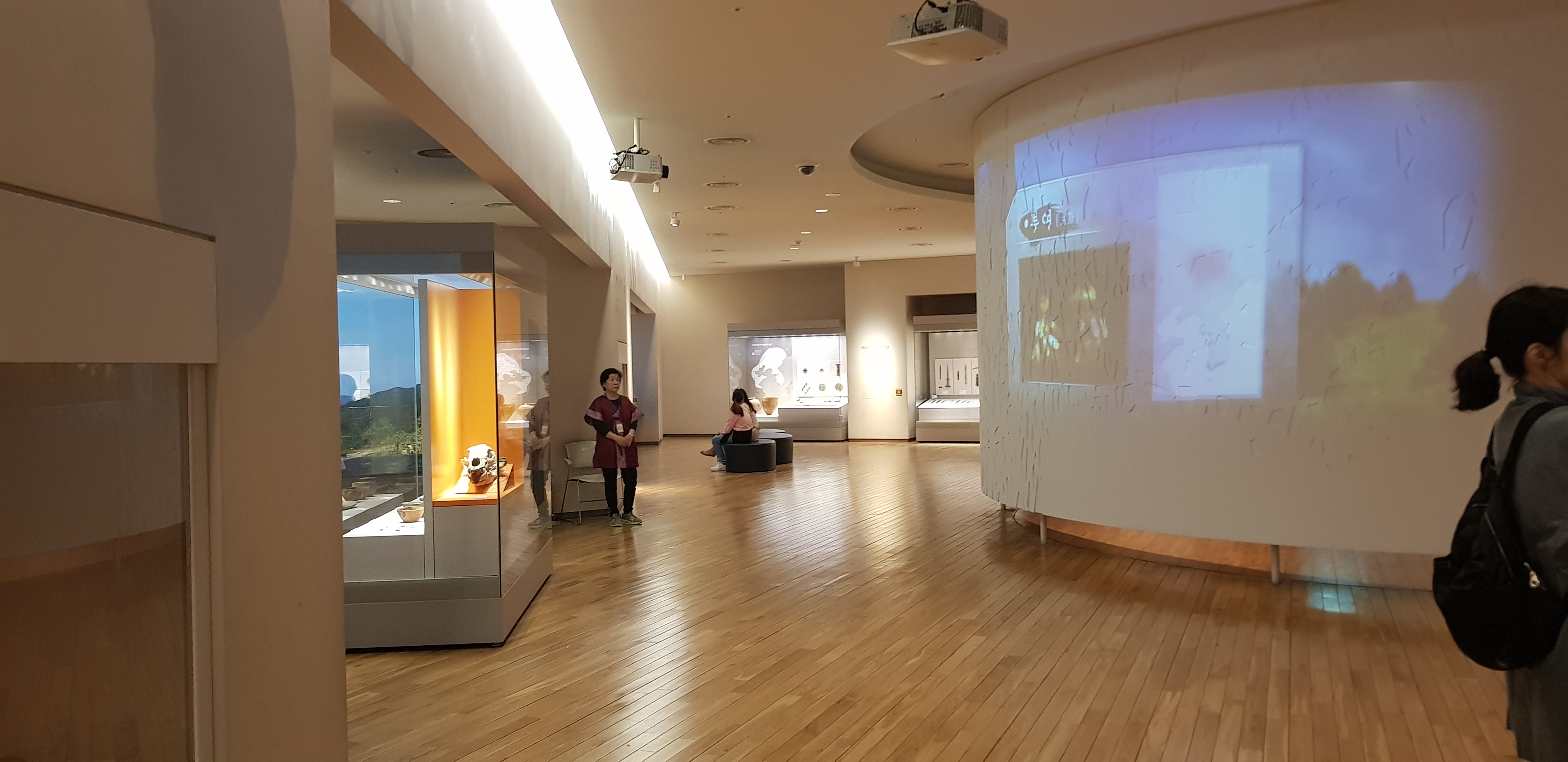
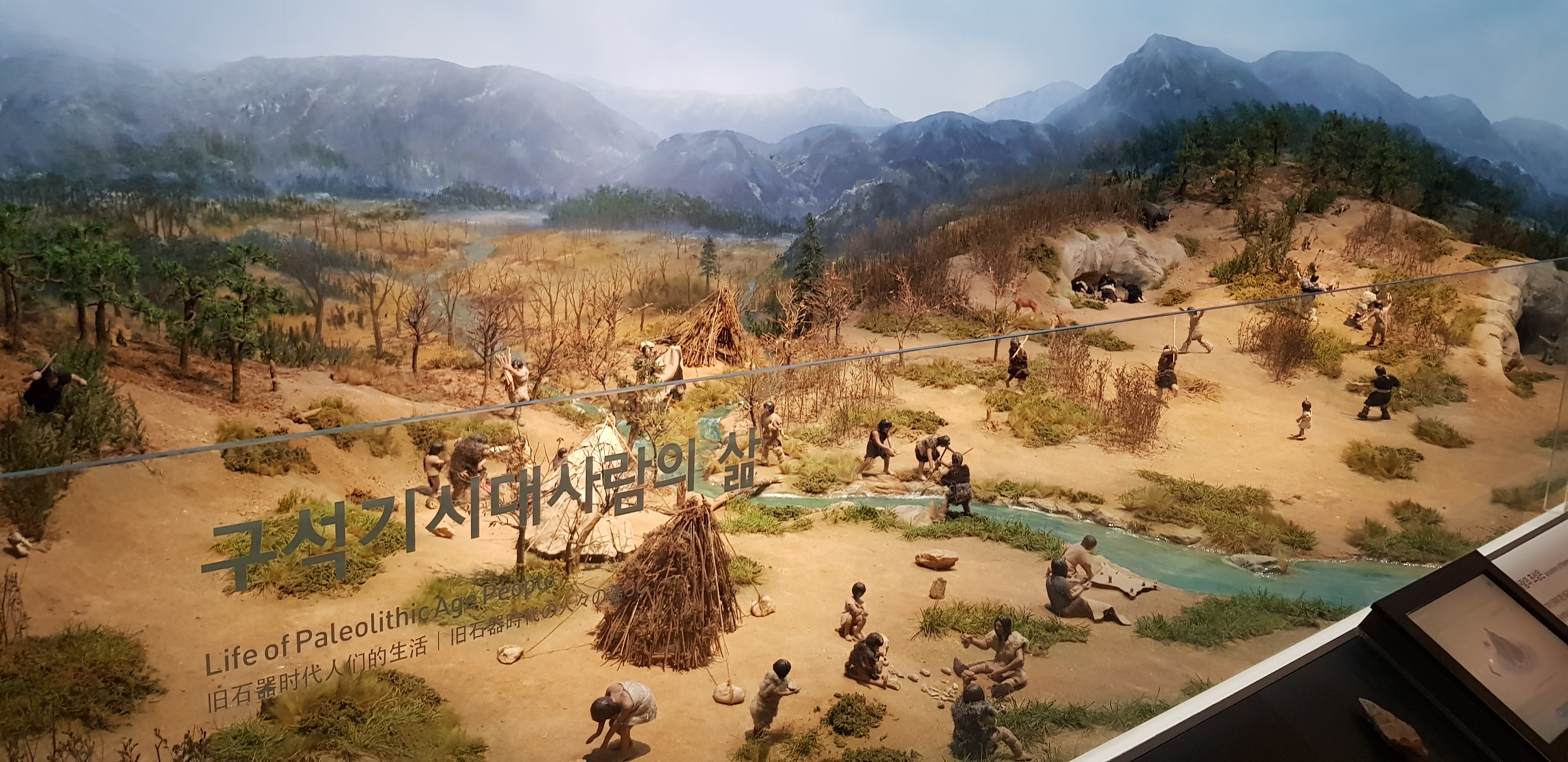

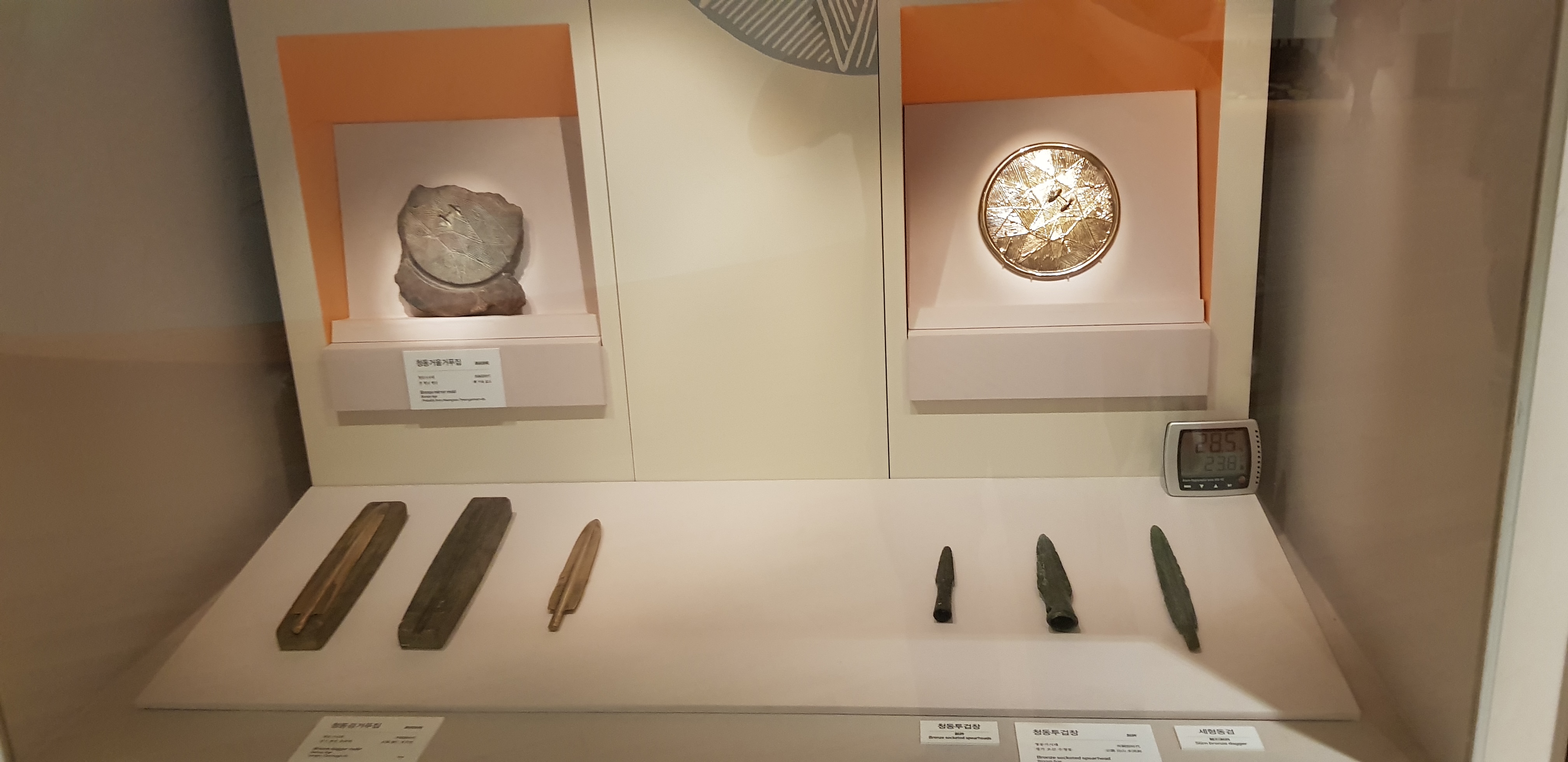
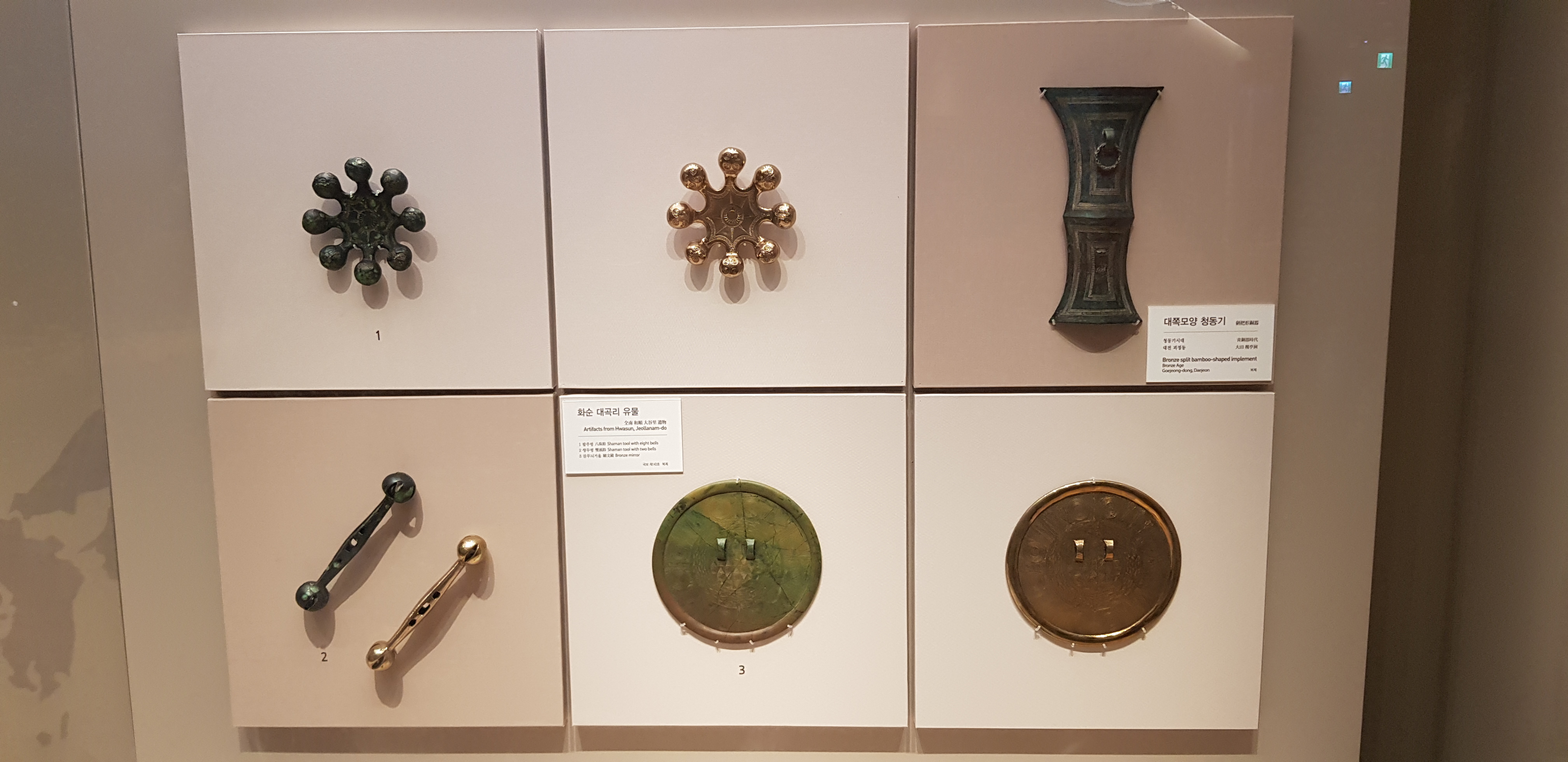
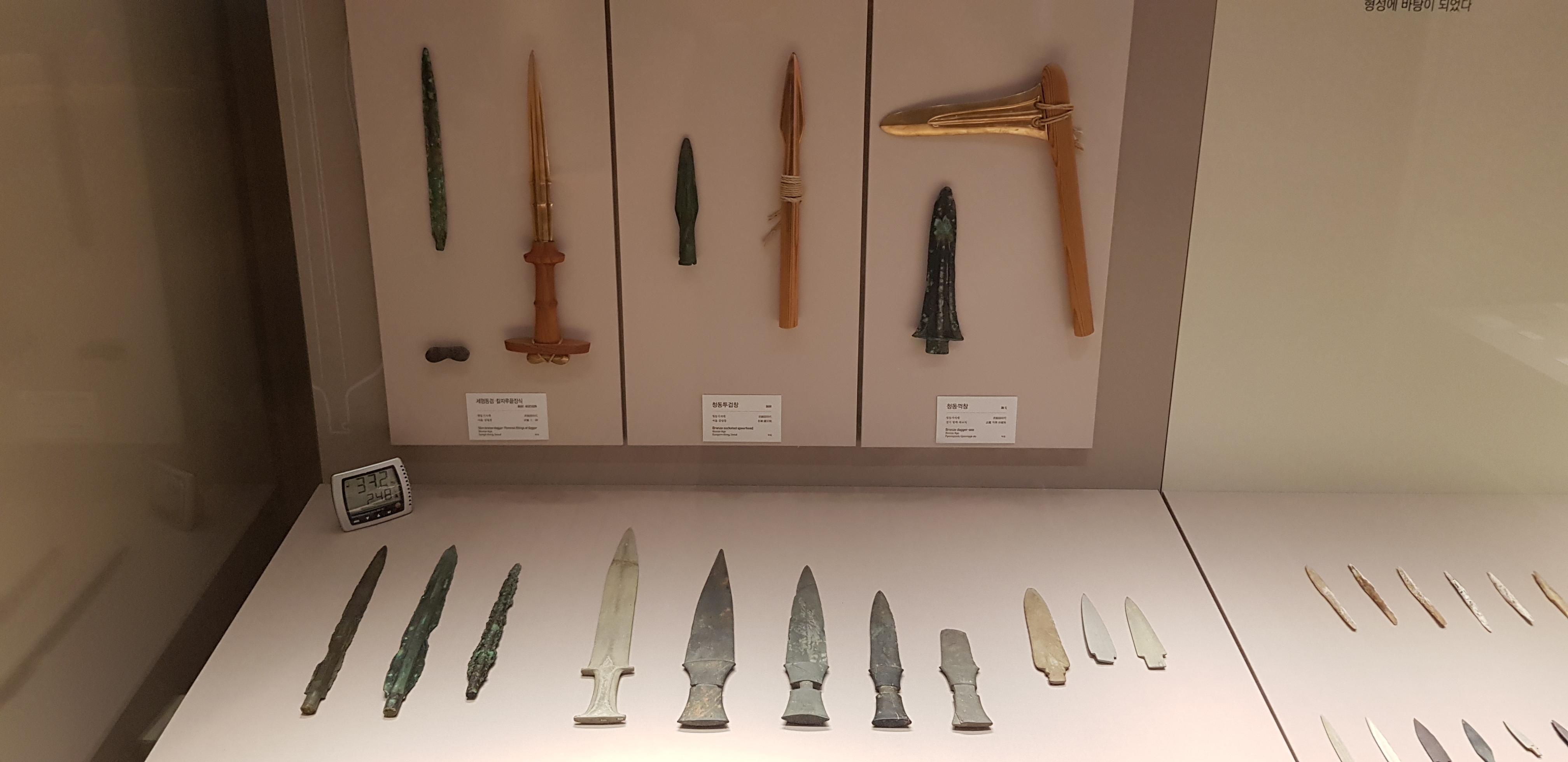
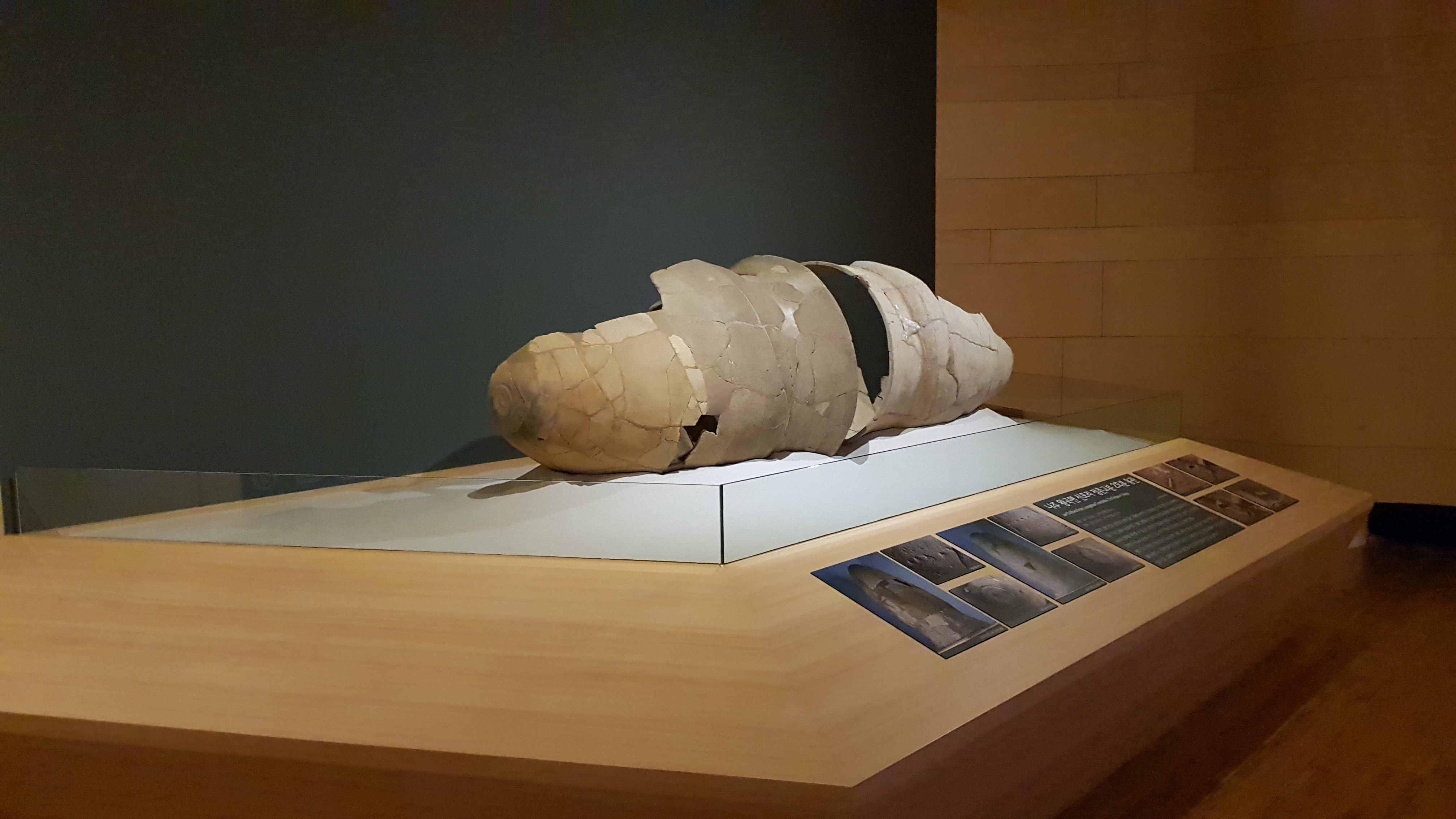
Before Baekje became the master of the western part of the Korean peninsula, the land was divided into 54 Mahan Federations and Baekje was also one of the 54 countries.
백제가 한반도 서부의 주인이 되기 전 이 땅은 마한 54개국 연맹체로 나누어져 있었으며 백제도 54개국 중의 하나였다.
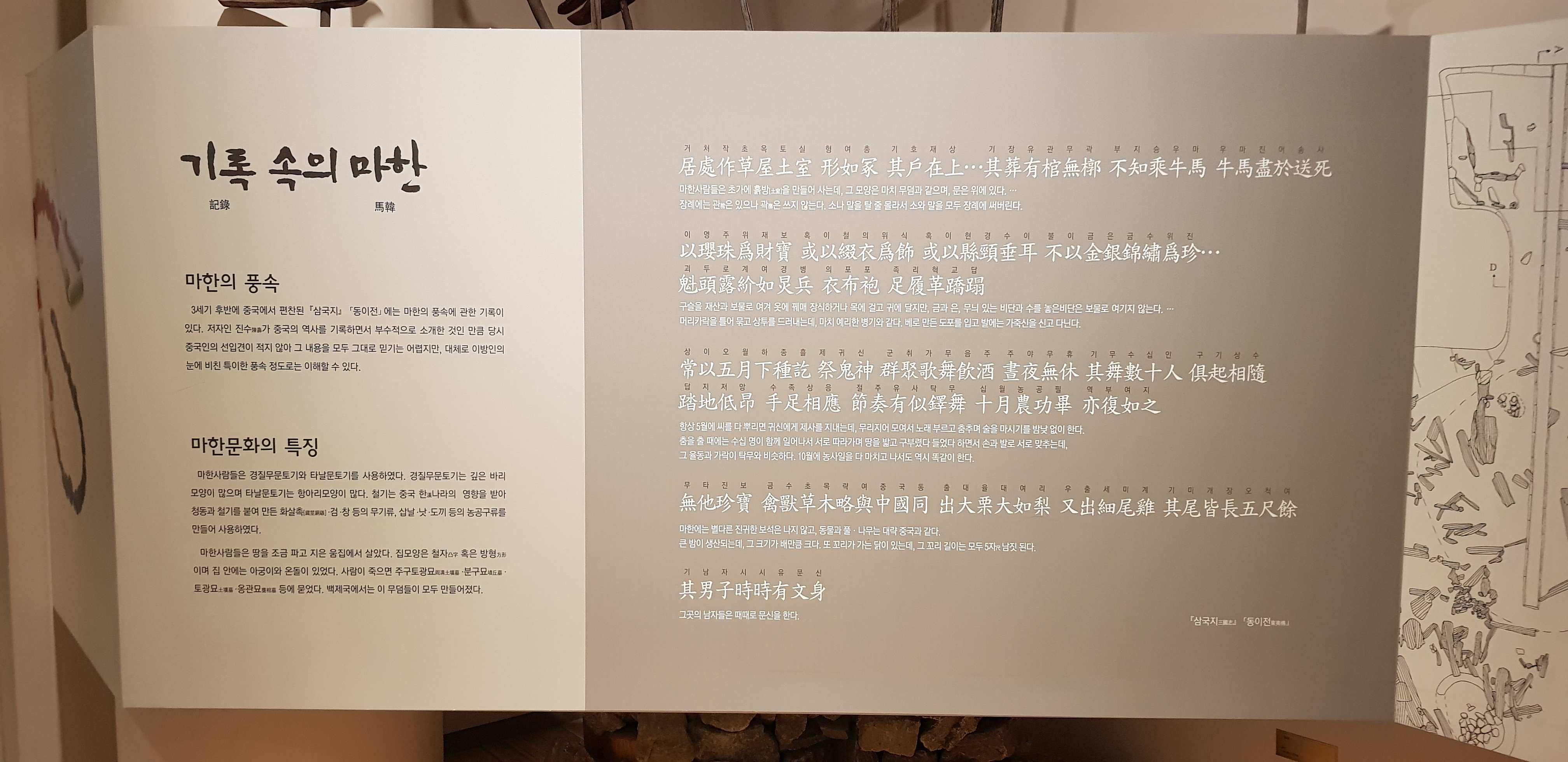
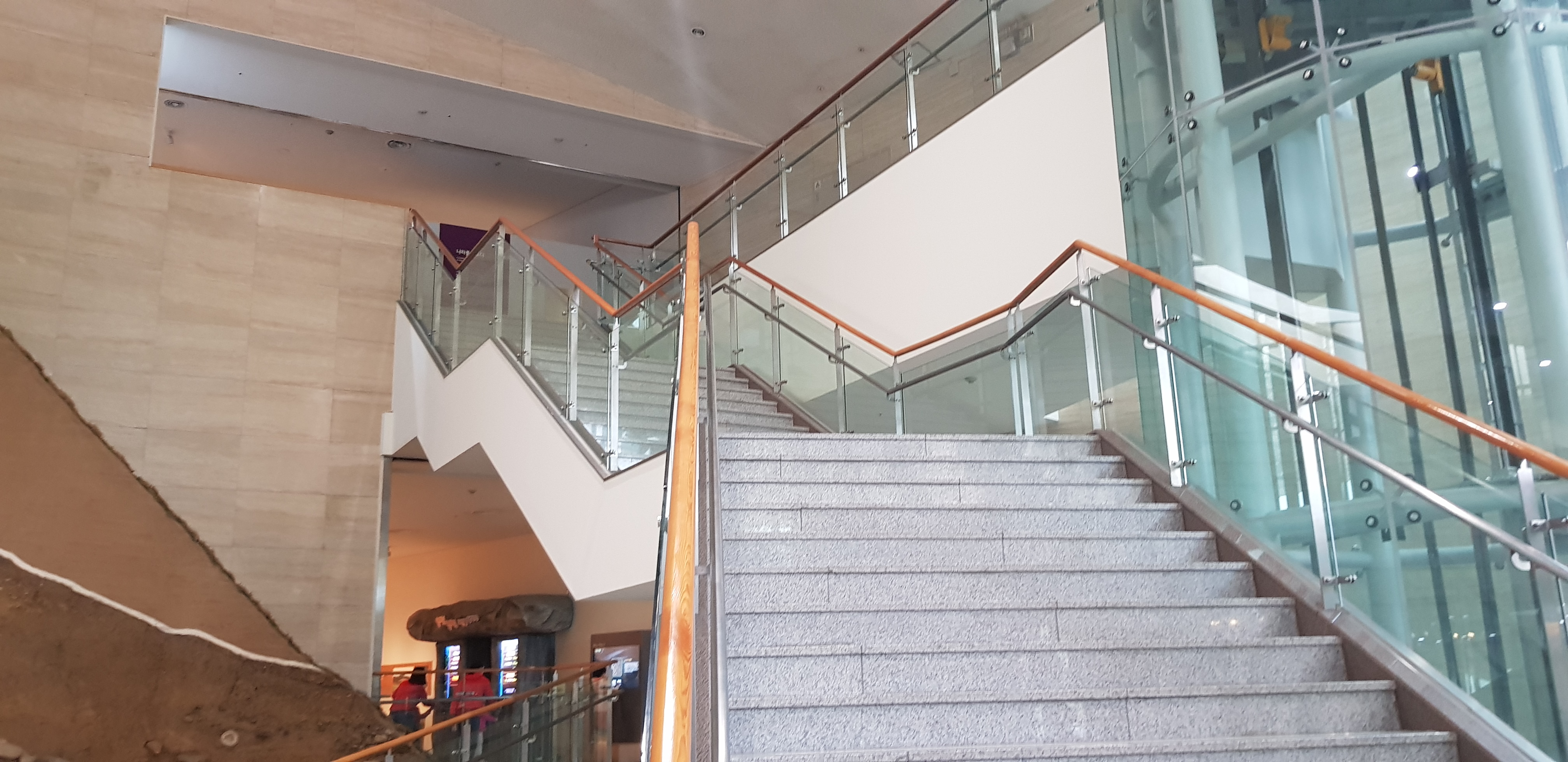
As time passed, Baekje grew in power, and the King Geunchogo unified Mahan completely in the mid-fourth century. Finally the western part of the Korean peninsula became the territory of Baekje.
세월이 흐르면서 백제가 힘을 키우게 되고 4세기 중엽 근초고왕이 마한을 완전히 통일하게 되면서 한반도 서부는 백제의 영역이 되었다.
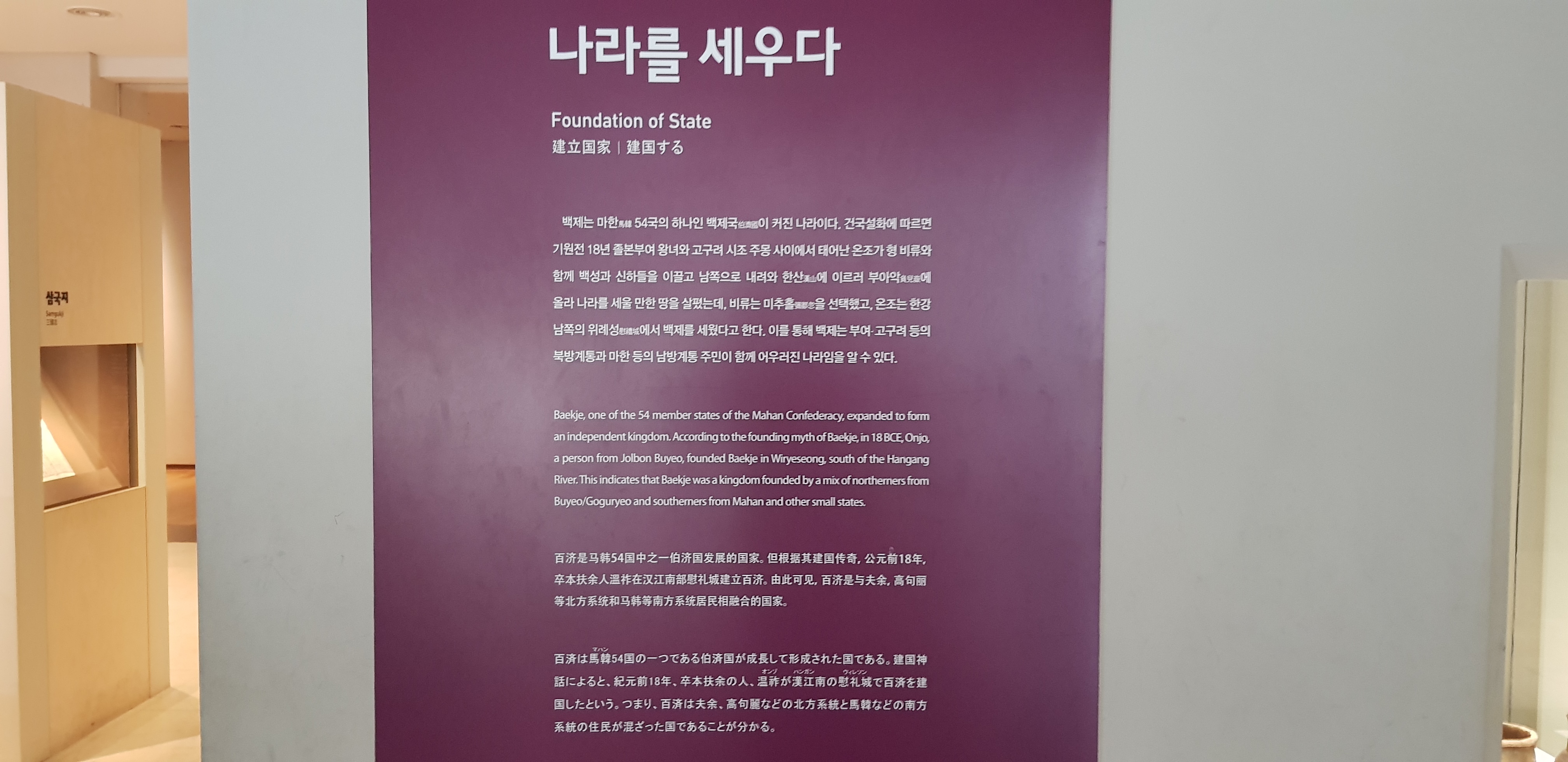

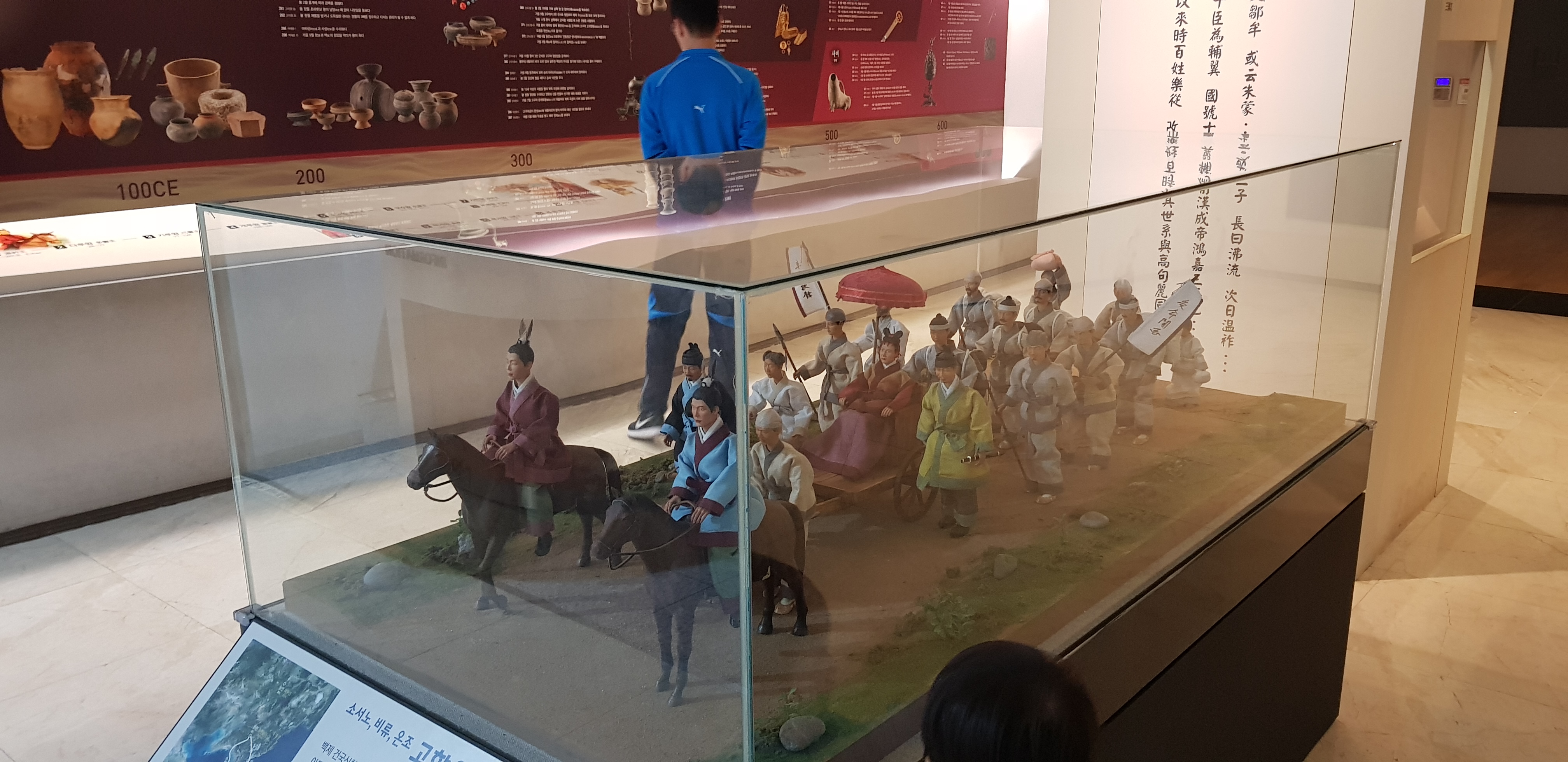

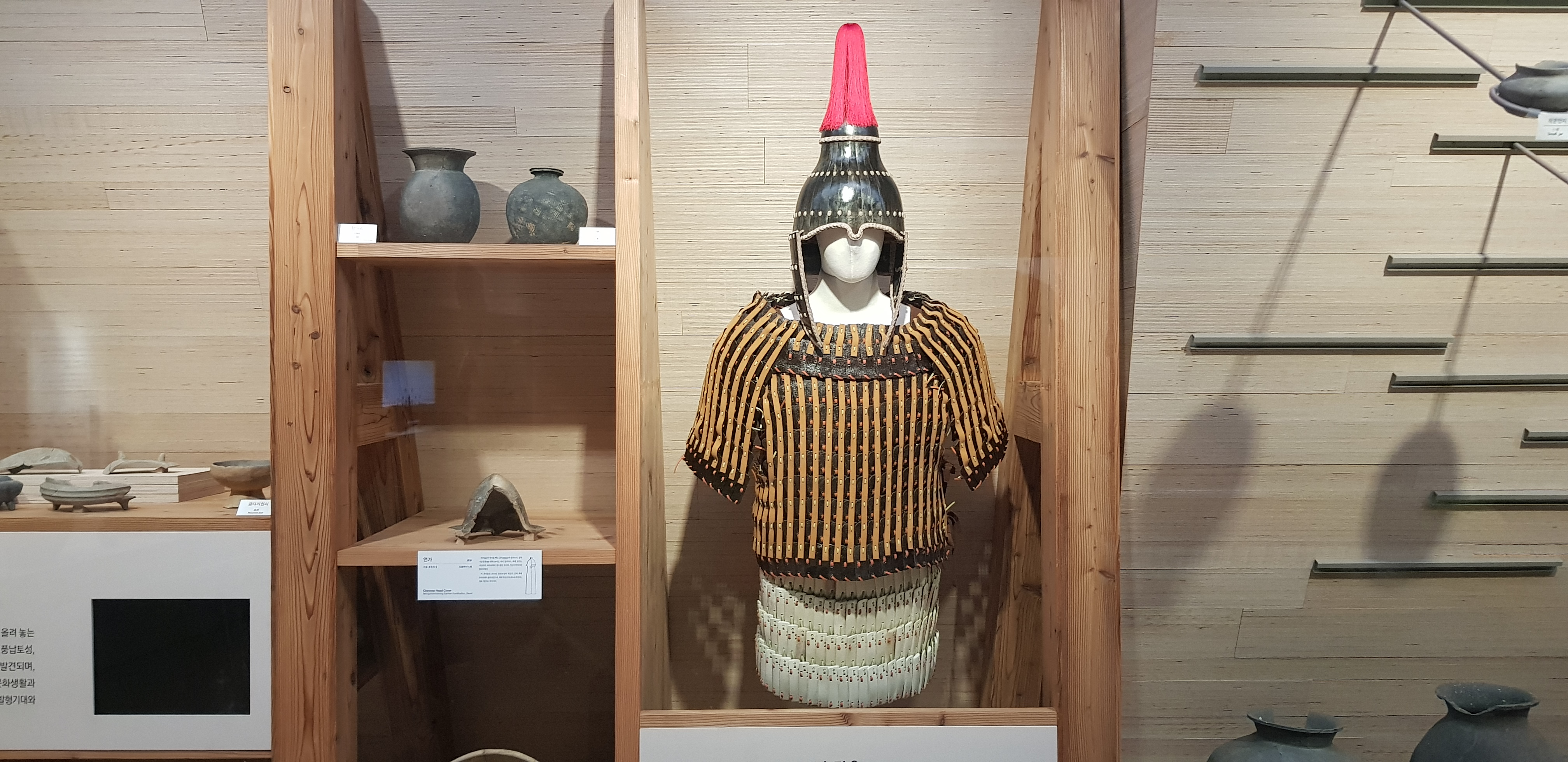
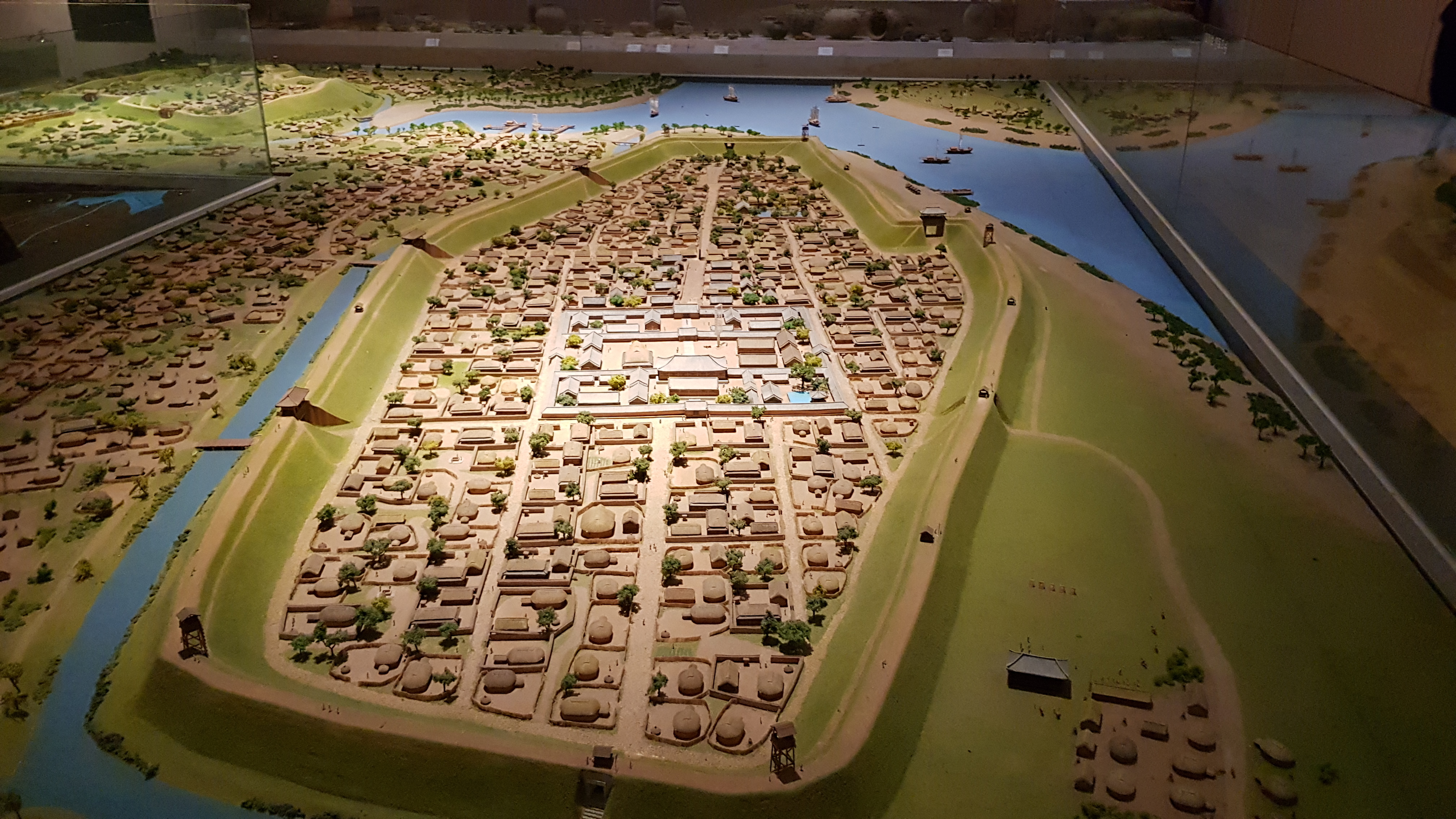
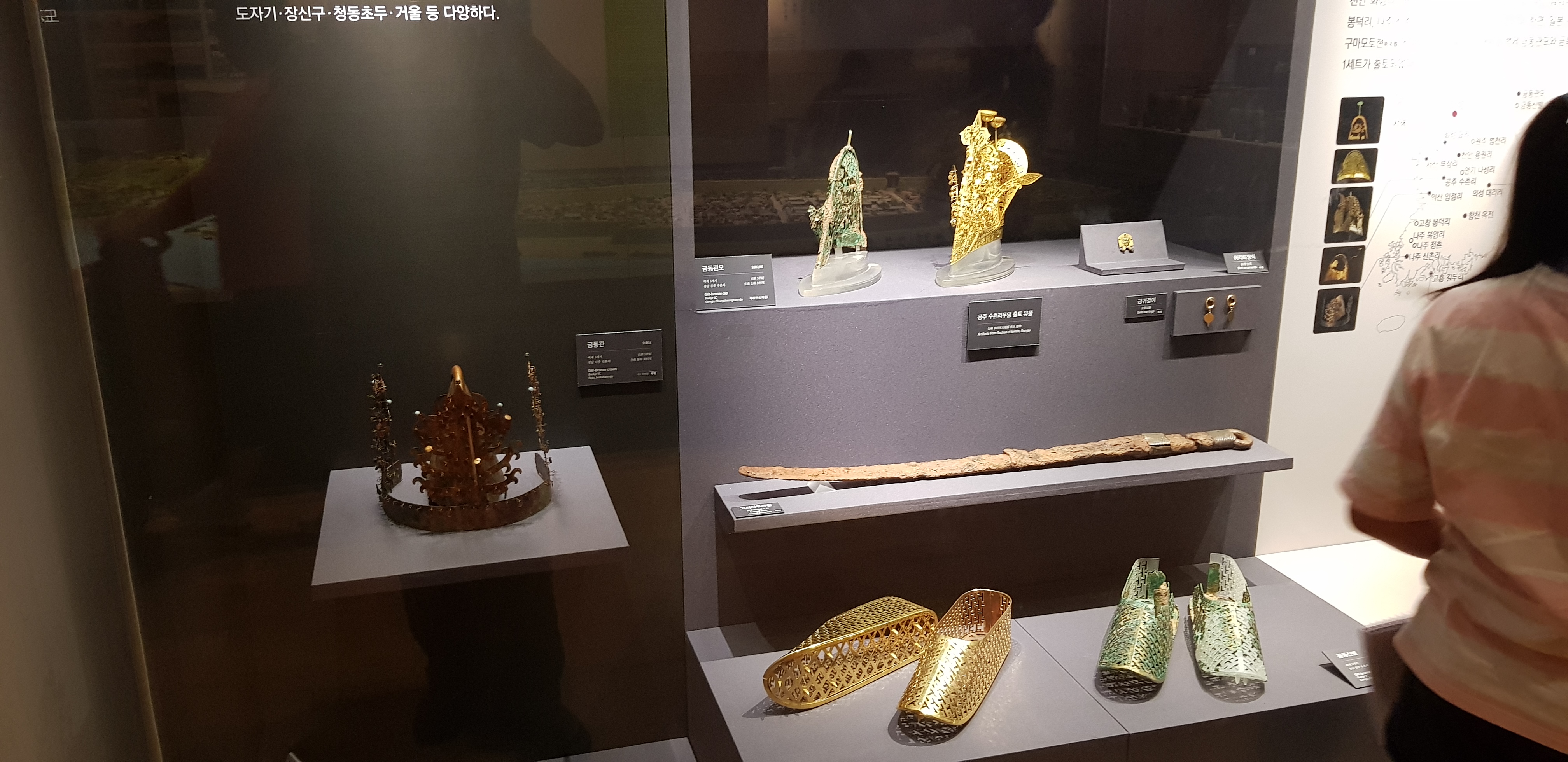
On the wall inside the exhibition room on the second floor, people who shine Baekje are drawn.
2층 전시실 내부의 벽에 백제를 빛낸 사람들이 그려져 있는데
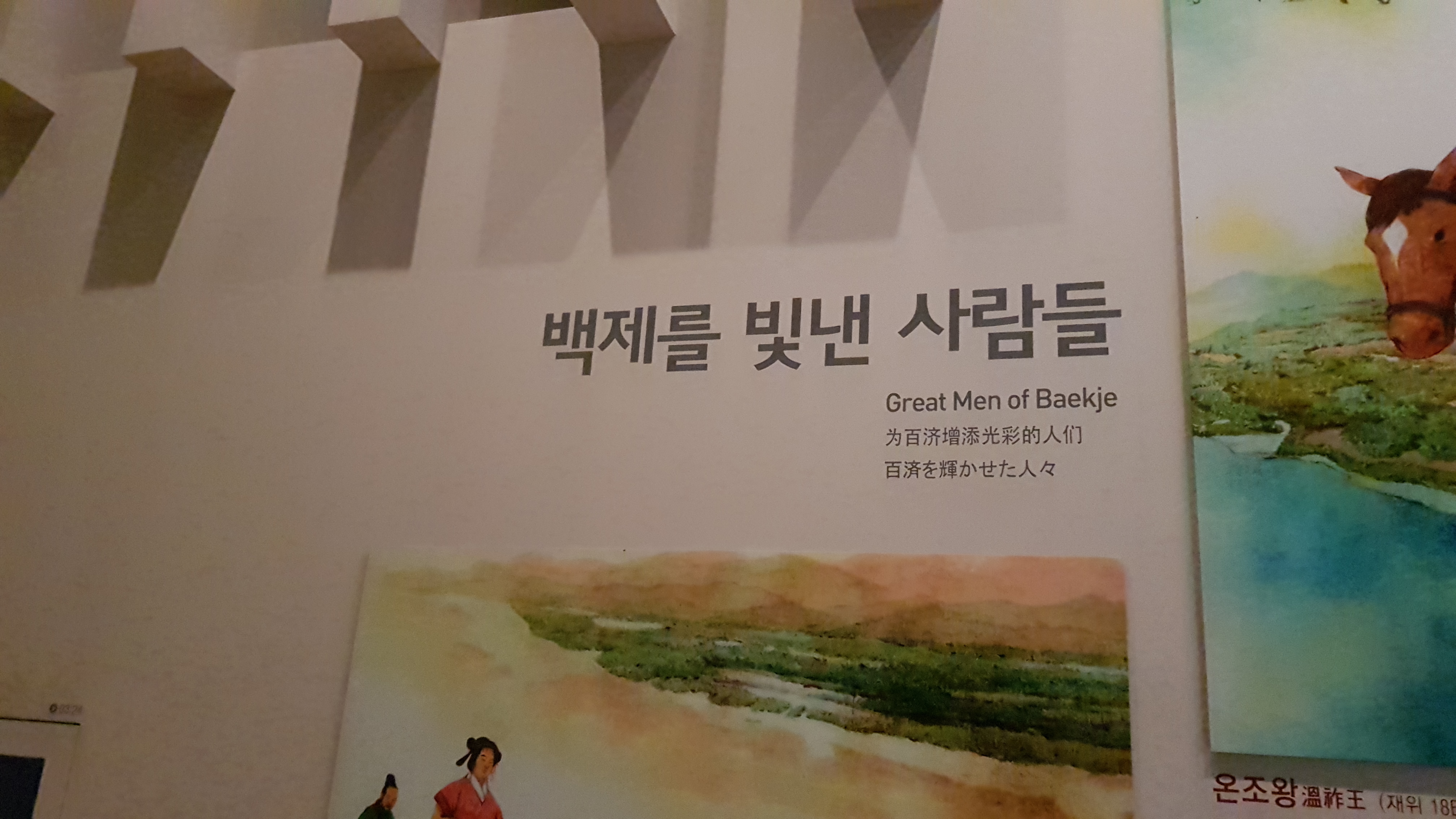
King Onjo, who is today's hero and the founder of Baekje, comes first. He is brother of Yuri, the 2nd king of Goguryeo, and came to the south with his mother, So Seo-no and his brother Prince Biryu. They settled on the Han river area and established Baekje. Goguryeo and Baekje were both rooted in Buyeo, one of the ancient nations that existed in the northern part of the Korean peninsula.
오늘의 주인공 건국 시조인 온조왕이 제일 처음 나온다. 고구려 2대왕인 유리왕의 동생으로서 어머니 소서노, 형 비류왕자와 같이 남쪽으로 내려와 이곳 한강유역에 터를 잡고 백제를 건국하였다. 고구려와 백제는 모두 한반도의 북부에 존재했던 고대국가 중 하나인 부여를 뿌리로 하는 국가들이었다.
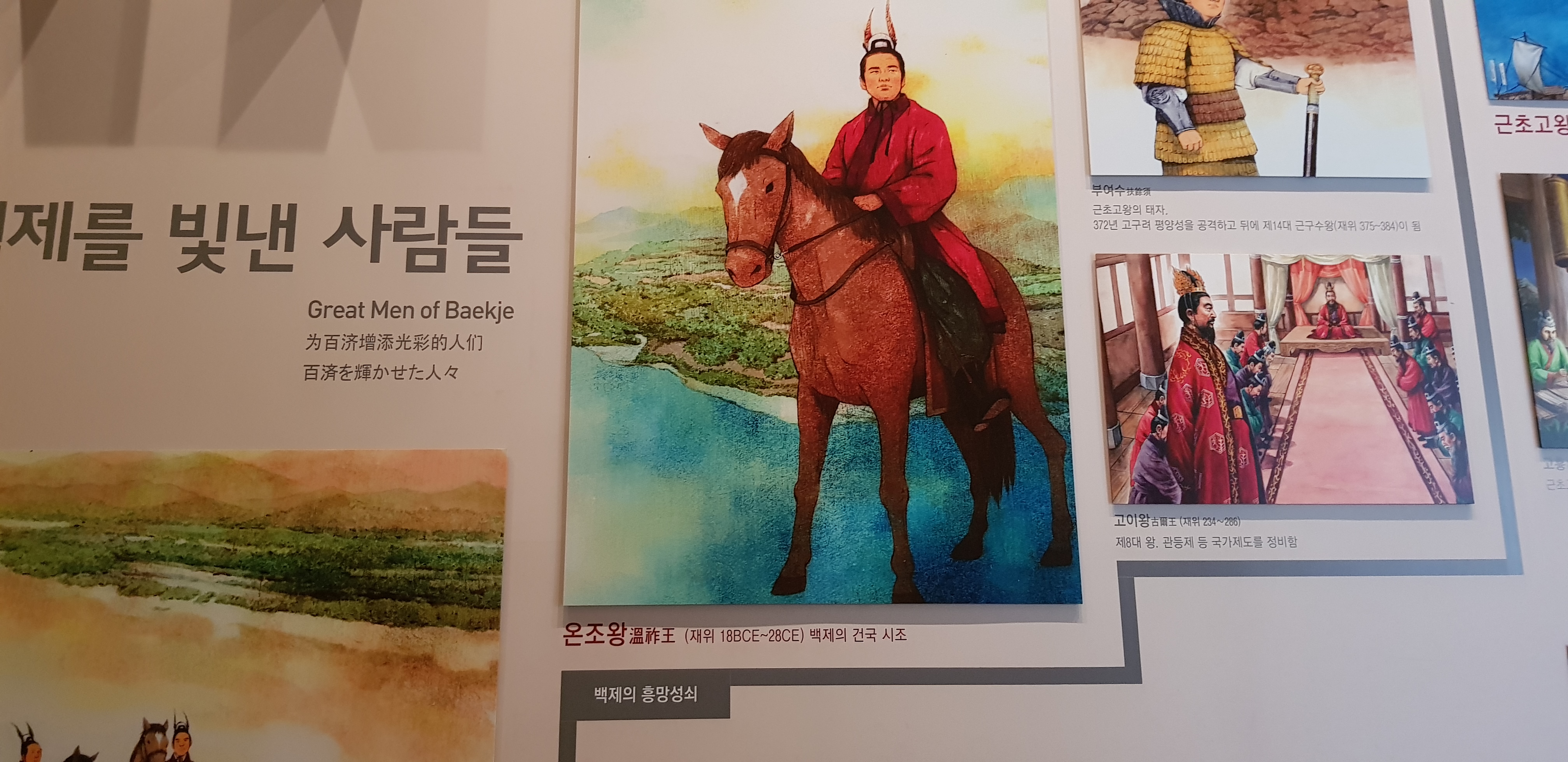


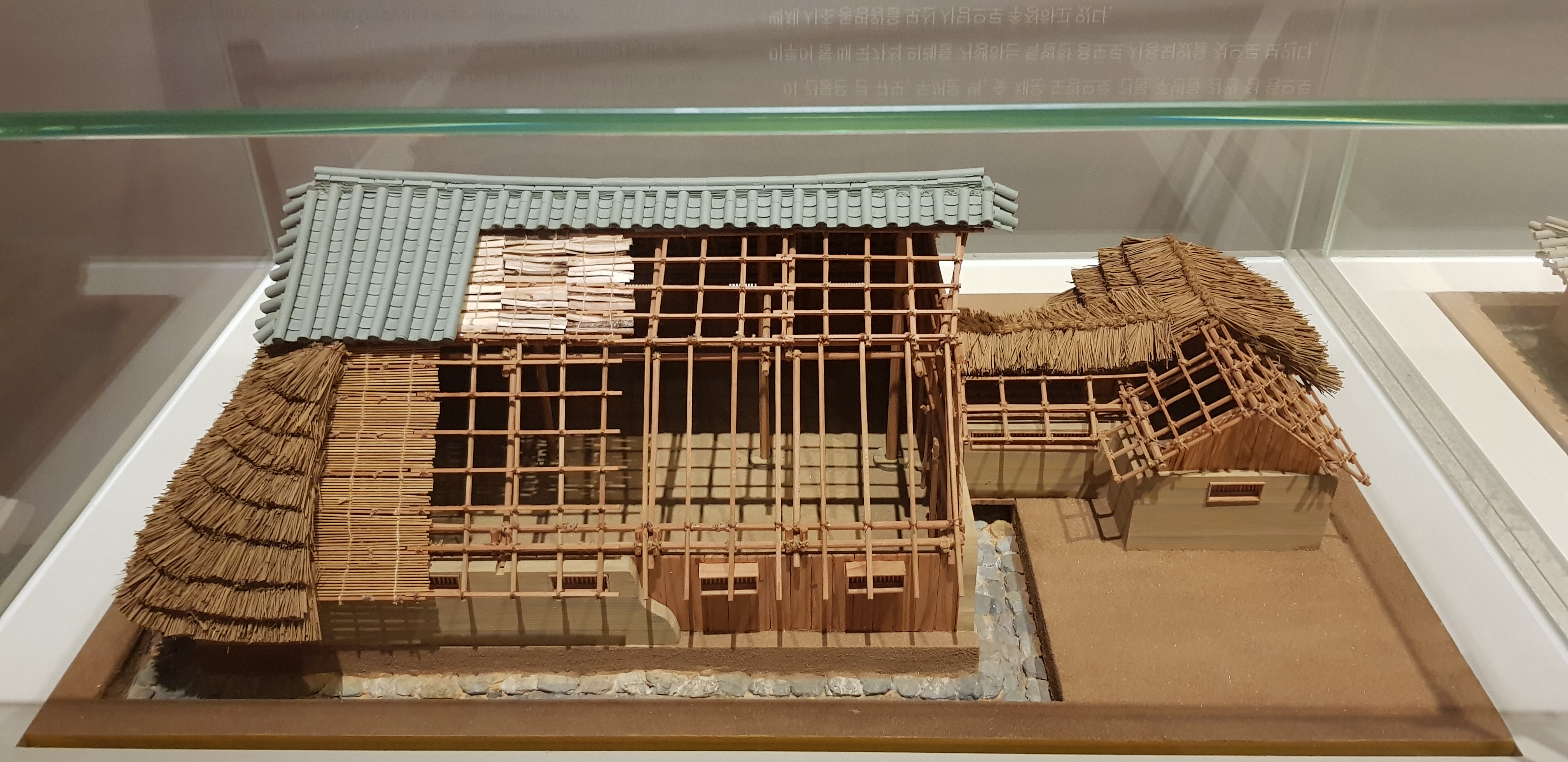
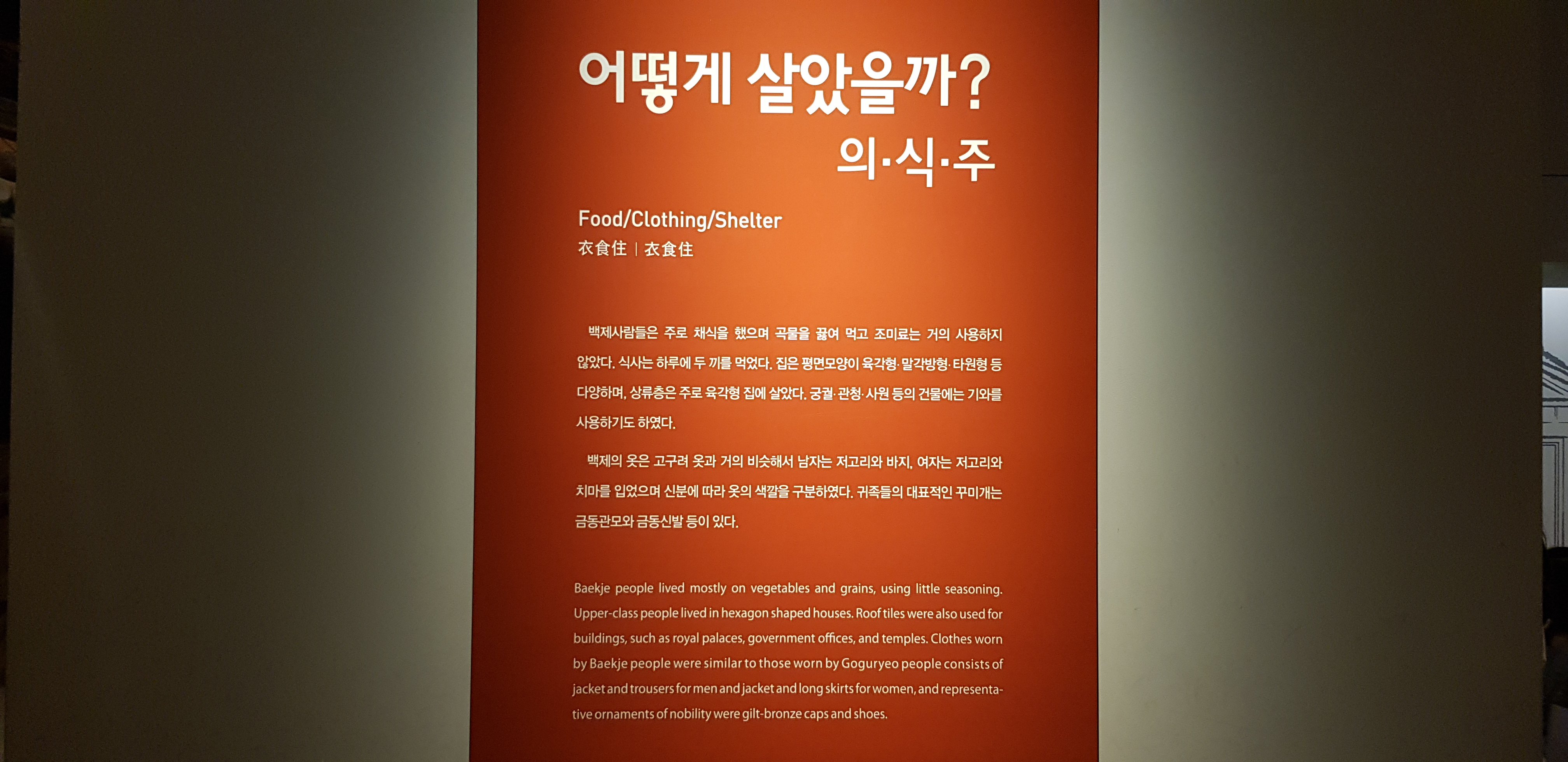

It is a go board called 'MokHwaJaDanGiGuk' presented to Japan by King Euija, the last king of Baekje. The museum exhibits imitations and the originals are in the treasure house of the Japanese royal family. It is incredibly sophisticated that could not be believed to have been made 1,400 years ago.
백제 마지막 왕인 의자왕이 일본에 선물한 '목화자단기국' 이라는 바둑판이다. 박물관에 전시된 것은 모조품이며 진품은 일본 왕실의 보물보관 창고에 있다. 1,400년 전에 제작된 것이라고는 믿어질 수 없을 정도로 제작기법이 정교하다.

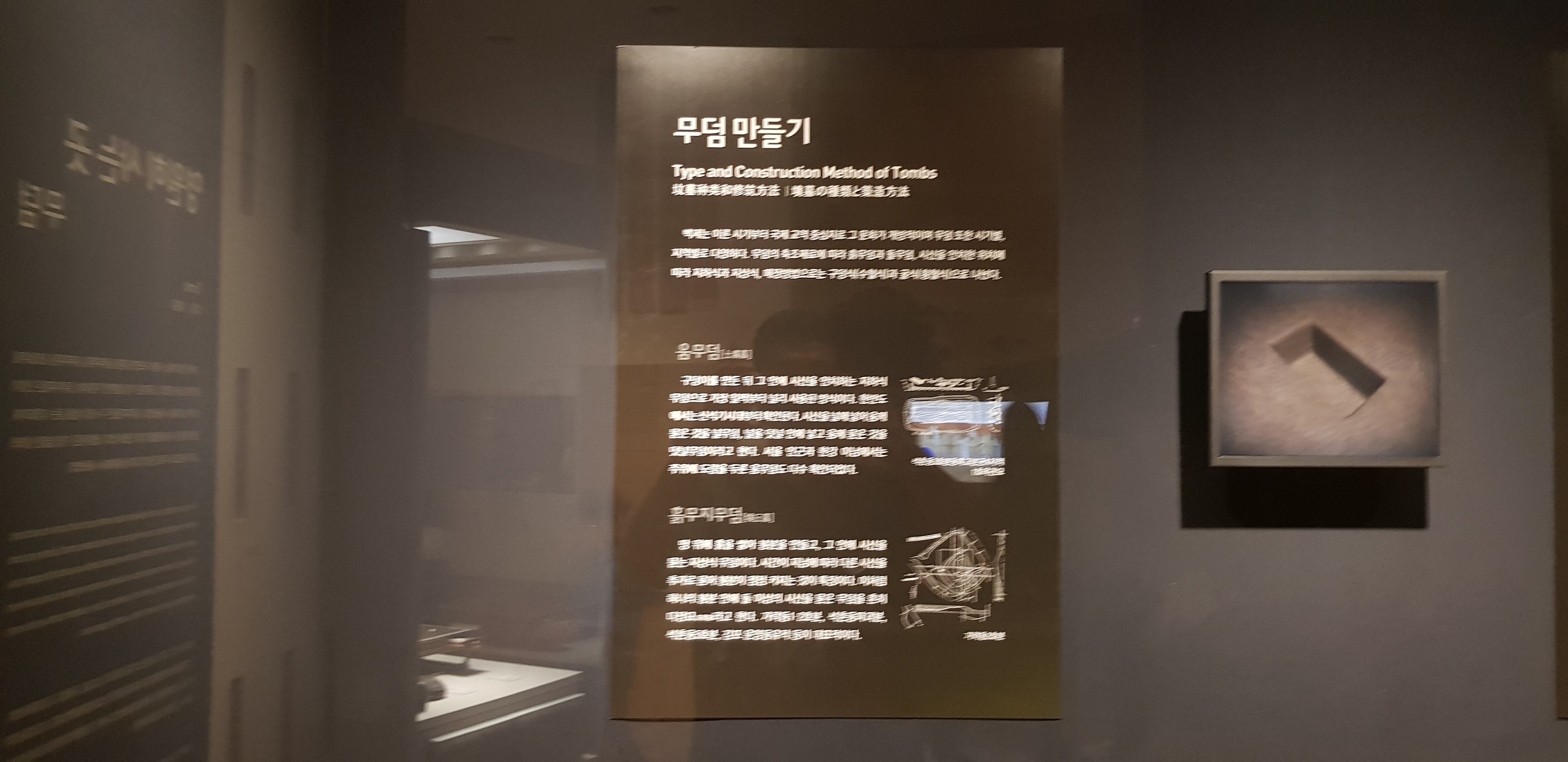
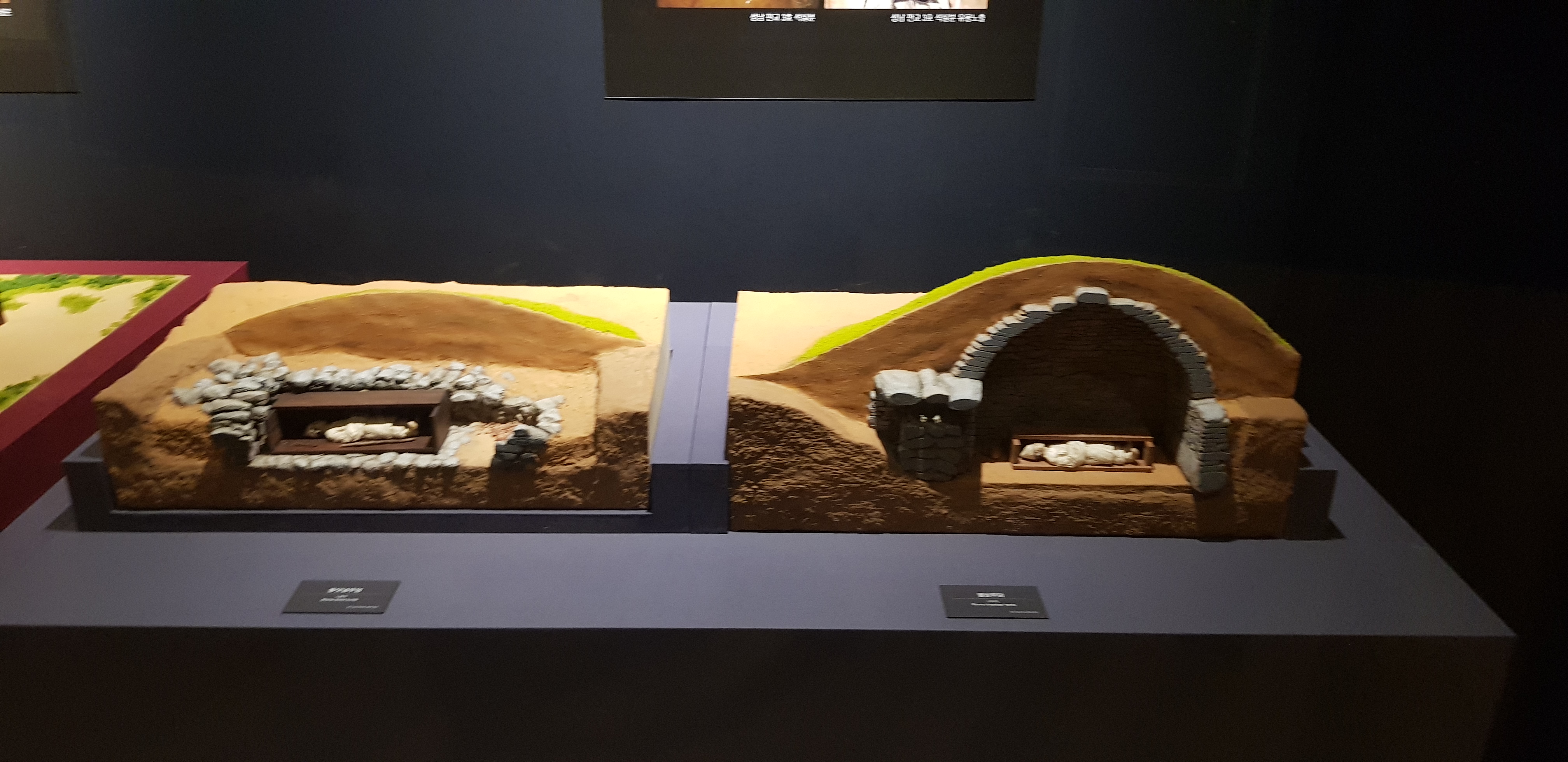
Baekje was the most active maritime activity among the three countries of the Three Kingdoms era, and developed the country through maritime trade with China and other countries.
백제는 삼국시대의 3 나라 중에서 해상활동이 가장 활발하였으며 중국을 비롯한 다른 나라들과의 해상무역을 통해 국가를 발전시켰다.
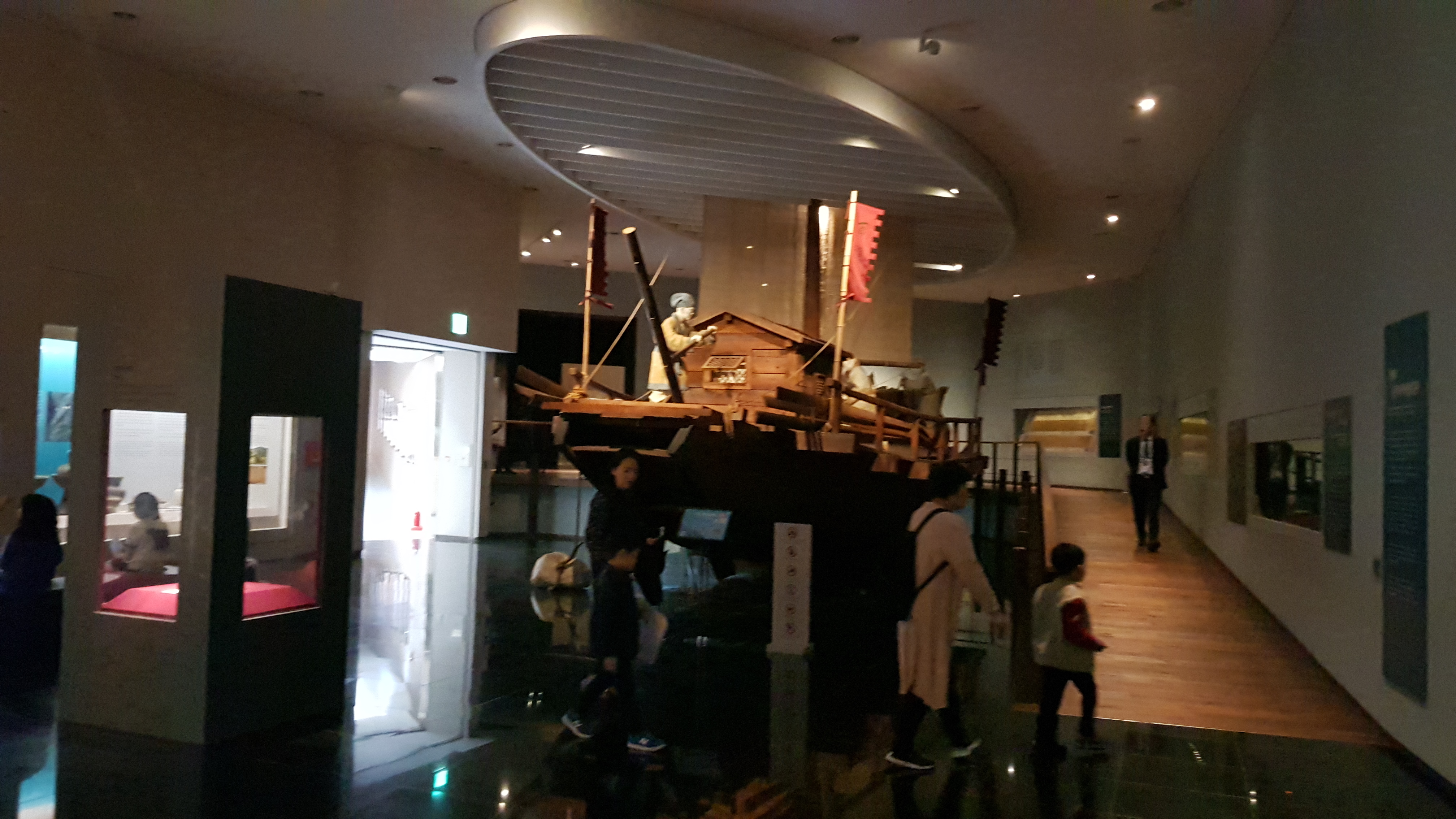



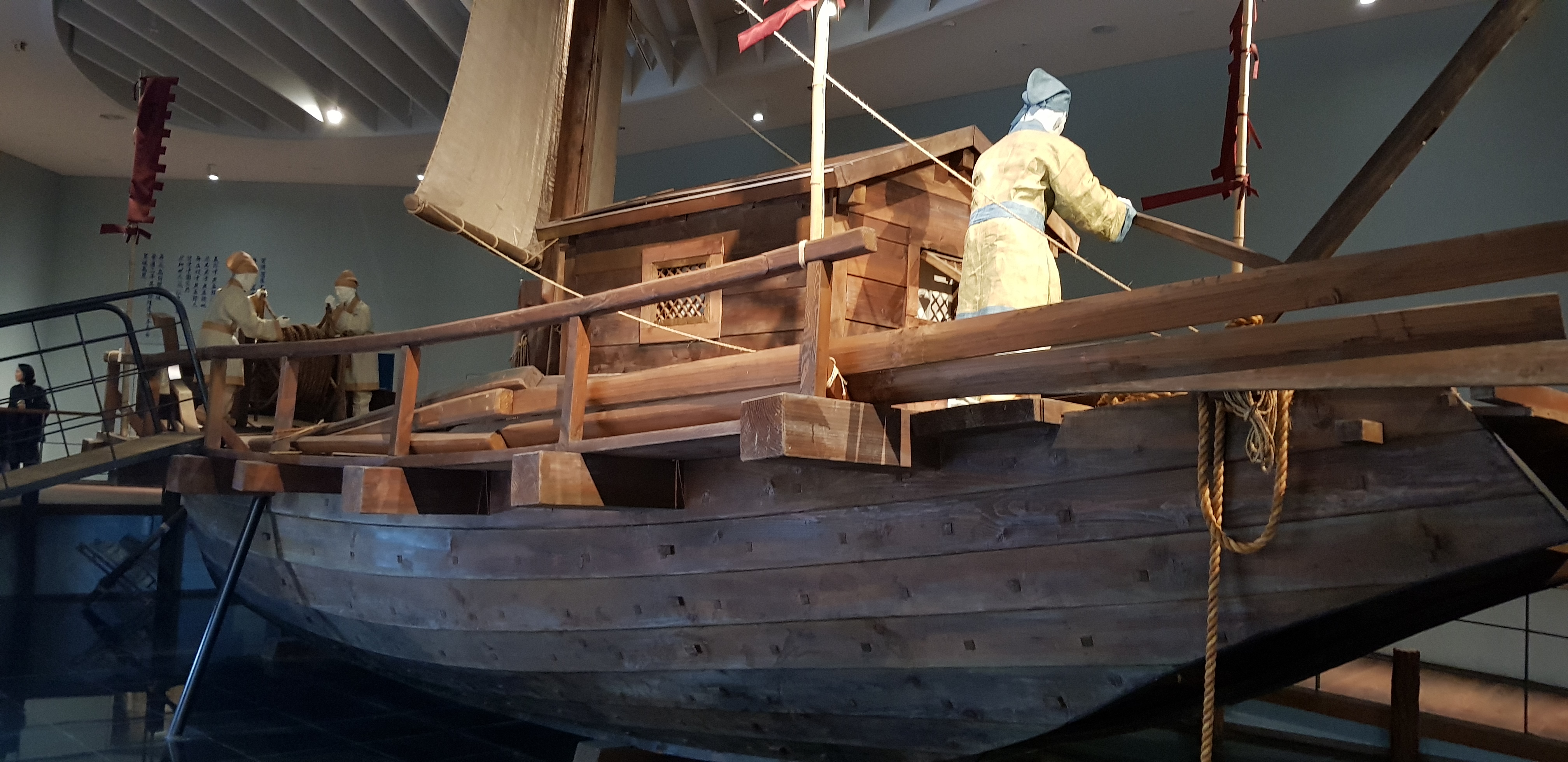
Seven-Branched Sword is one of the most famous artifacts of Baekje. It is a controversial issue between Korean and Japanese historians, but it is Korea's position that it is the Sword of State that King of the Baekje granted to the Japanese king. This is an excellent work that shows Baekje's advanced iron smelting technology.
백제의 가장 유명한 유물 중 하나인 칠지도. 한 일 양국 역사학자 사이에서 논란이 되고 있지만 백제왕이 일본왕에게 하사한 보검이라는 것이 한국측의 입장이다. 백제의 발달된 철 제련기술을 보여주는 우수한 작품이다.

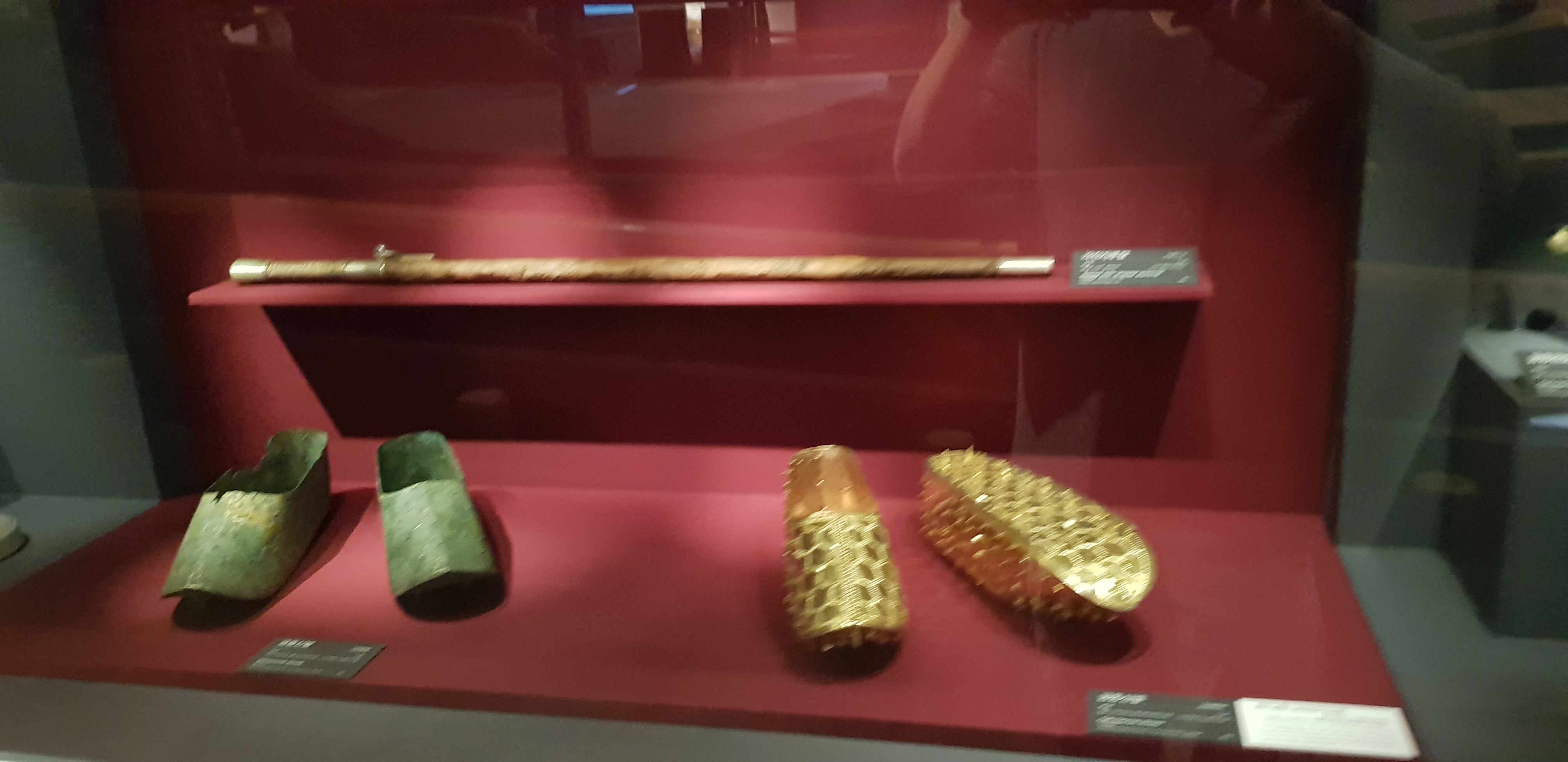
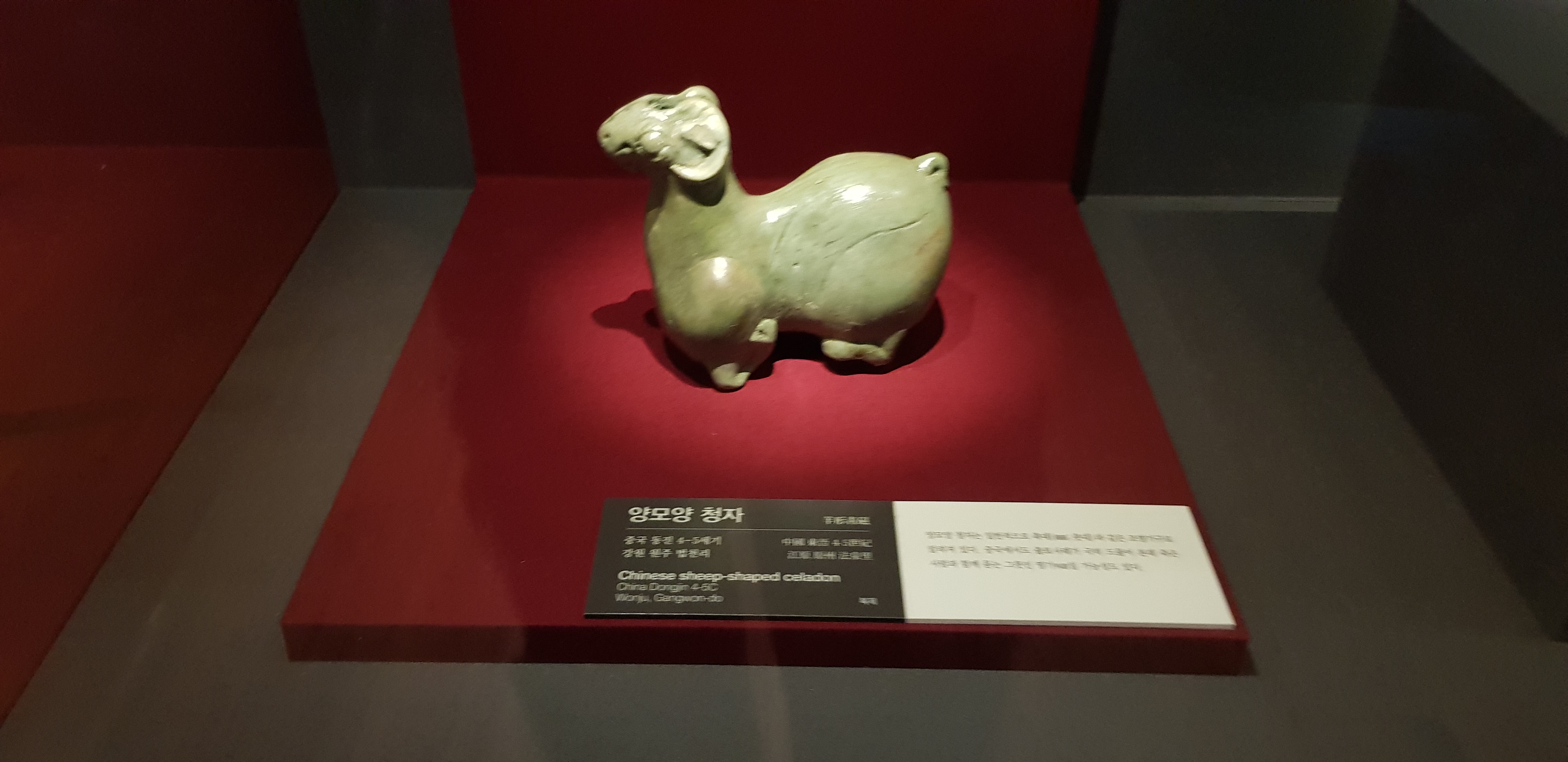
The paintings depict the procession of the envoys who came to a Chinese dynasty at the time and we can see them of Goguryeo, Baekje and Japan. This is a fun historic source to check the face and costume of people in each country. While the others are bowing down, the Goguryeo envoy is leaning back to show confidence. It seems to be related to national power at the time, and the Chinese dynasty may did not like the Goguryeo. It makes me laugh when I think about what the Goguryeo envoy would say to the Chinese emperor with that figure.
당시 어느 중국 왕조에 조공을 온 사신의 행렬을 묘사한 그림들인데 고구려, 백제, 왜국사신의 모습도 있다. 각국 사람들의 얼굴 모습과 복식을 확인할 수 있는 재미있는 자료이다. 다른 사신들은 고개를 조아리는 모습인 데 반해 고구려 사신은 고개를 한 껏 뒤로 젖혀 자신감 있는 모습을 보여주고 있다. 당시 국력과 관계가 있는 모양인데 중국 왕조에서는 고구려 사신을 별로 좋아하지 않았을 것 같다. 저 모습으로 고구려 사신은 중국 황제에게 어떤 말을 했을 지 생각하니 웃음이 나온다.
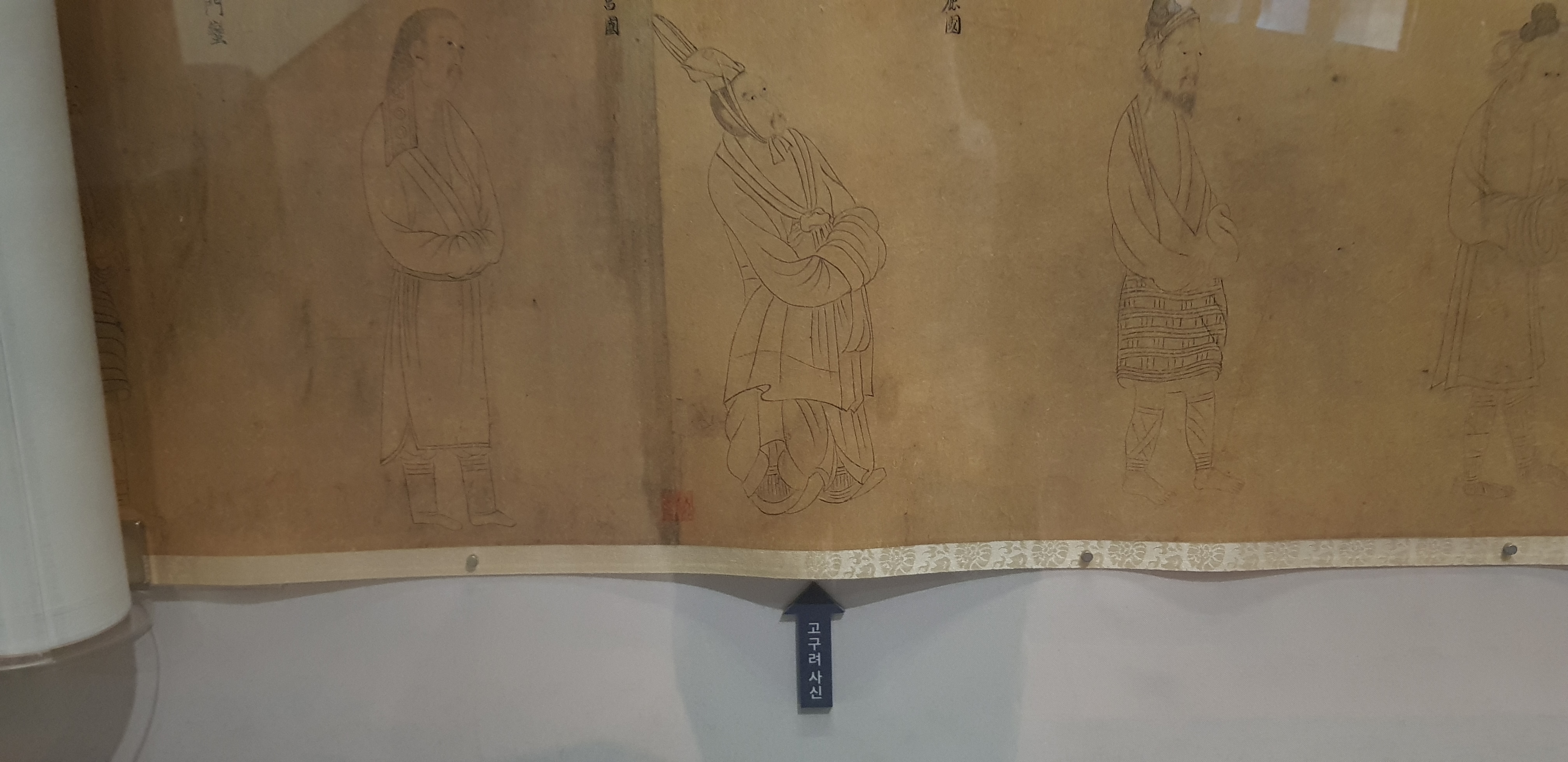
Baekje's envoy is depicted more neatly (2nd from the right side of the photo below). It seems that the relationship with the other party was very important for Baekje which was good at trade and diplomacy.
백제의 사신은 좀 더 단정한 모습으로 그려져 있다.(아래 사진 우측 두번째) 무역과 외교에 능했던 국가의 사신답게 상대방과의 관계를 매우 중요시했던 것으로 보여진다.

The Baekje envoy shown here also shows a neat and calm figure. (The 2nd from the right side of below)
여기 보이는 백제 사신도 단정하고 차분한 모습을 보여준다. (아래사진 우측 두 번째)

Two sculptures show the active exchange between Japan and Baekje. The work below is designated as a national treasure of Japan as a wooden statue of Maitreya in Meditation, and the same piece of Gilt-bronze is designated as a national treasure of Korea.
일본과 백제의 활발한 교류를 보여주는 두 작품이다. 아래는 목조 미륵보살반가사유상으로 일본의 국보로 지정된 작품이고 이와 동일한 모습의 금동으로 된 작품은 한국의 국보로 지정되어 있다.
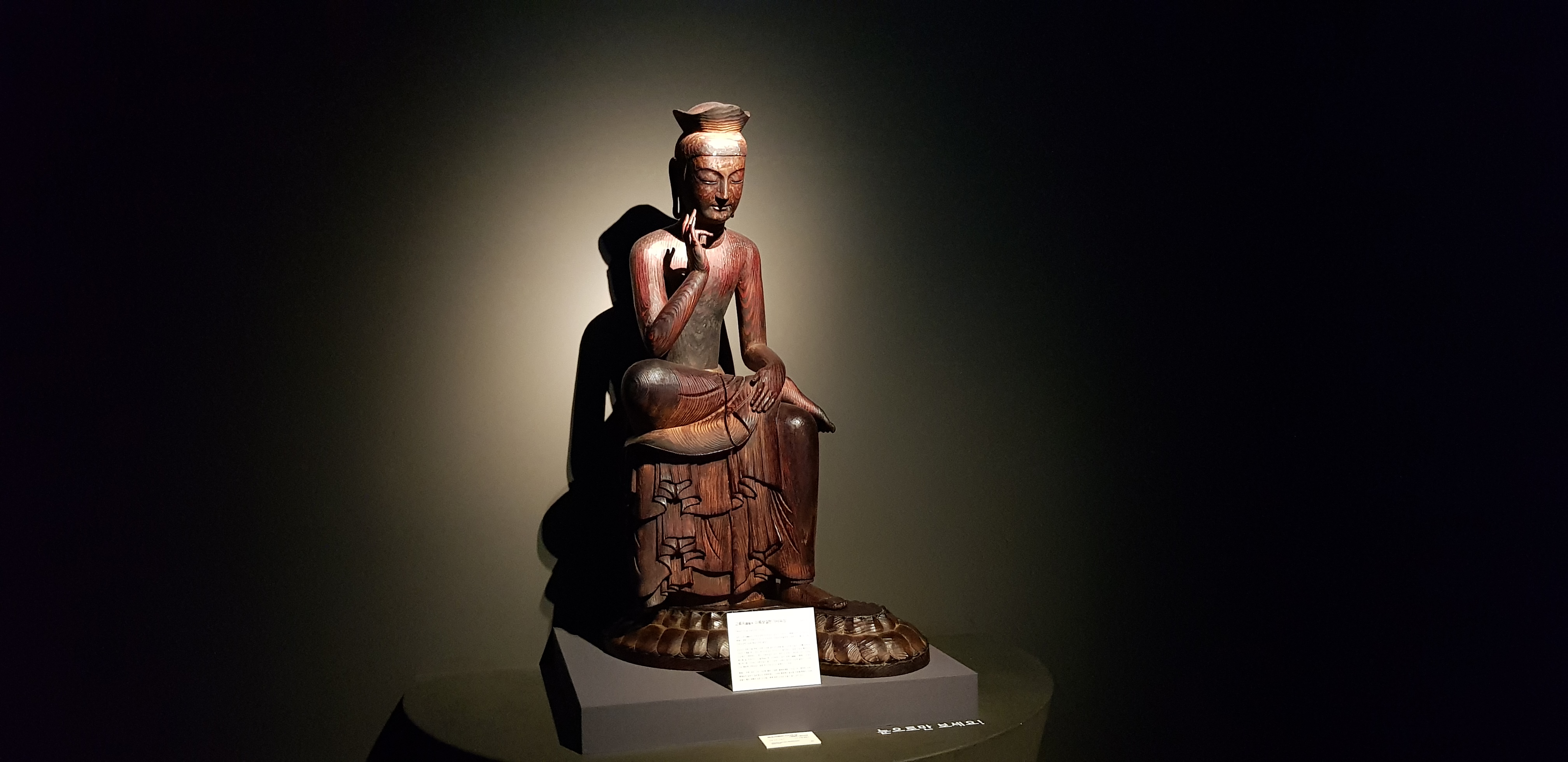

It is a Gilt-bronze Incense Burner showing the essence of Baekje craftsmanship. It is believed to have been used in the royal rituals of the Woongjin Baekje period from 520-534 AD and is a beautiful work that implies the spirit world and artistic capabilities of Baekje people.
백제 공예 기술의 진수를 보여주는 금동대향로이다. 서기 520~534년인 웅진백제 시대에 제작되어 왕실의 의식에 사용되었던 것으로 추정되며 백제인들의 정신세계와 예술적 역량이 함축되어 있는 아름다운 작품이다.

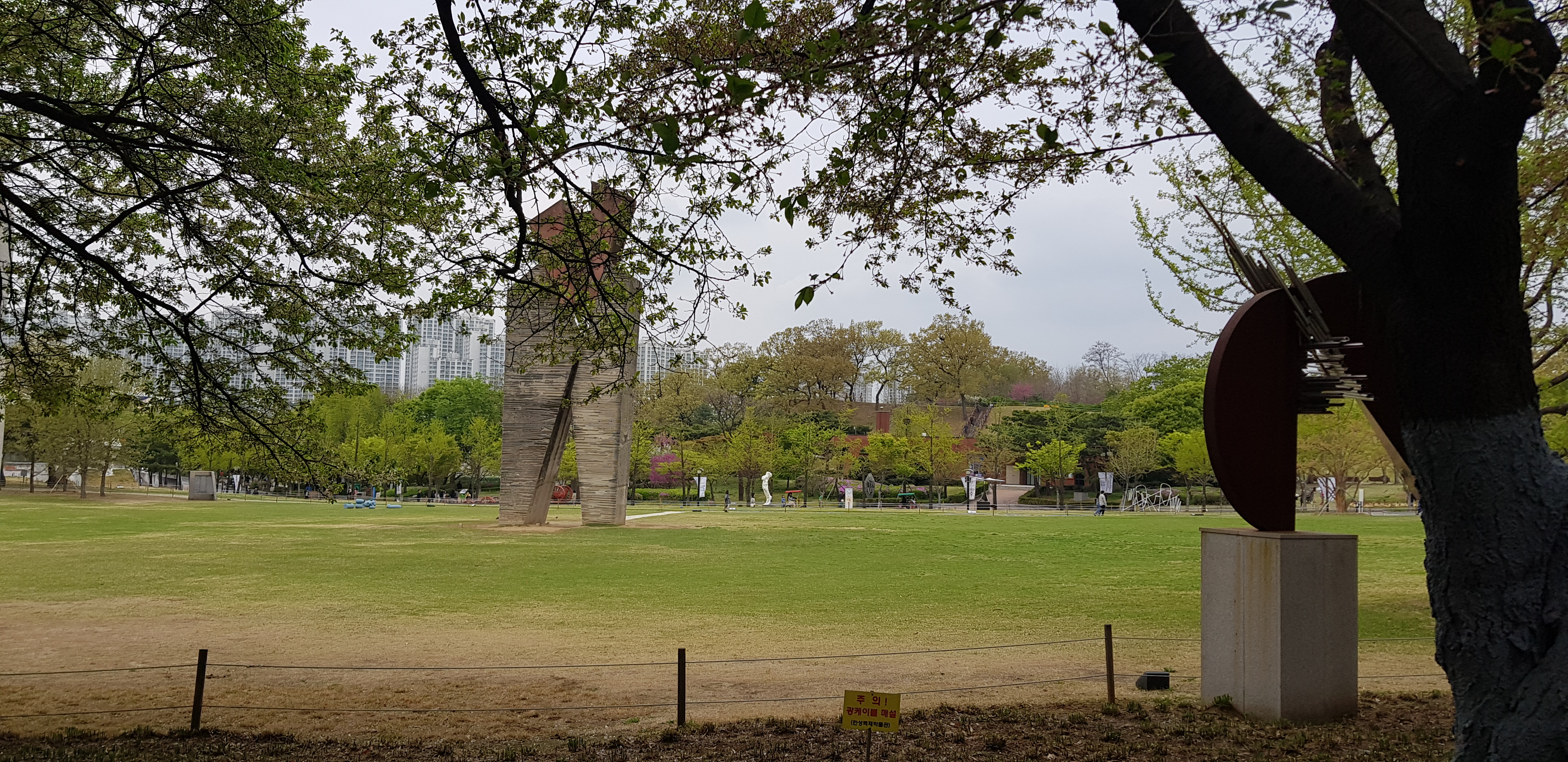



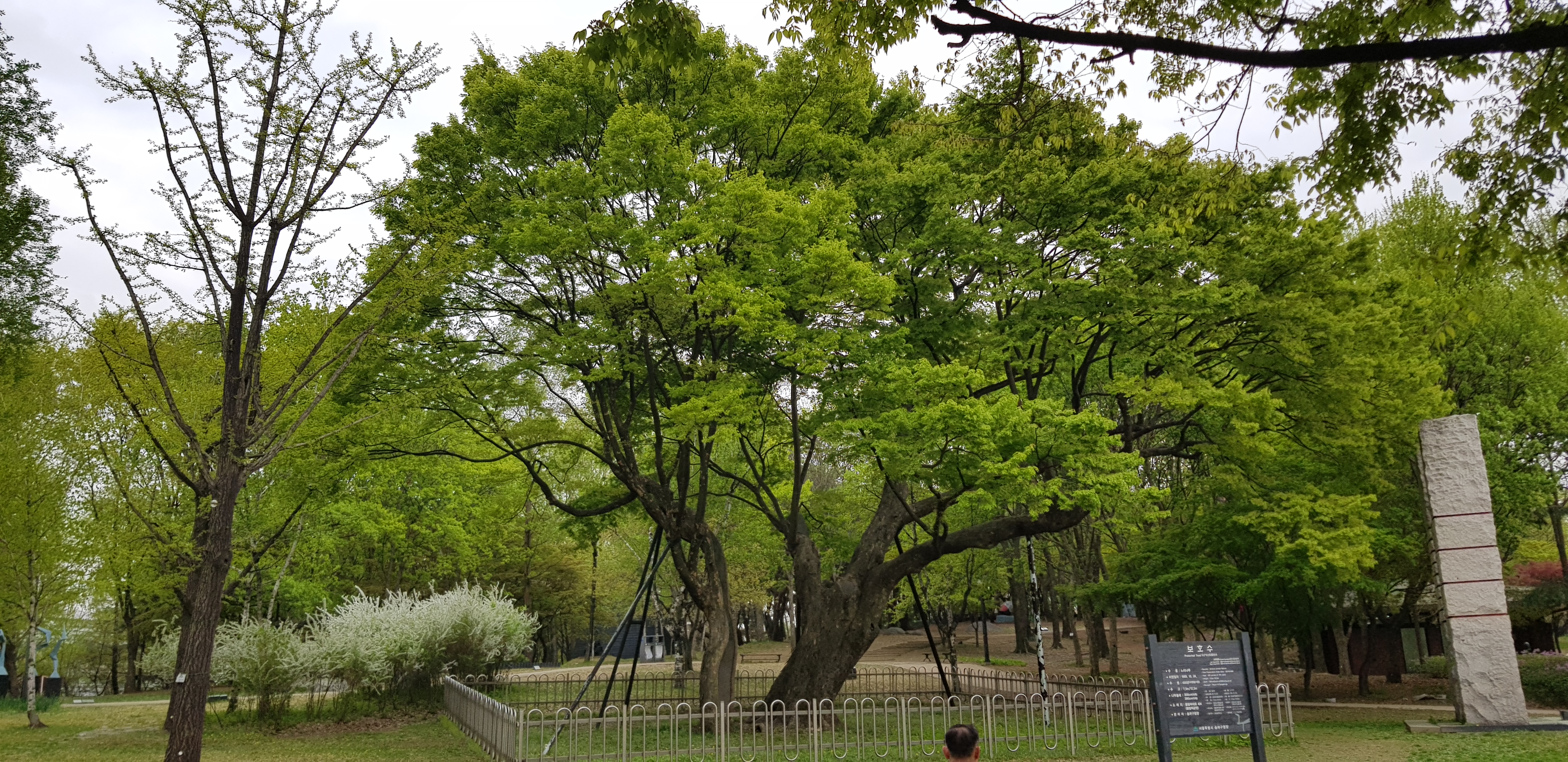
When you walk along the road after leaving from the museum, following milestones can be seen. I made my way towards Mongchontoseong.
박물관을 나와 길을 따라 걷다 보면 아래와 같은 이정표가 있는데, 우리는 몽촌토성 방향으로 길을 잡았다.


From here, the Mongchontoseong trail comes out. Finally, we walk on Fortress of Baekje which was built 1700 years ago.
여기서부터 몽촌토성 산책로가 나온다. 드디어 1700년전에 만들어진 백제의 토성 위를 걷게 된다.
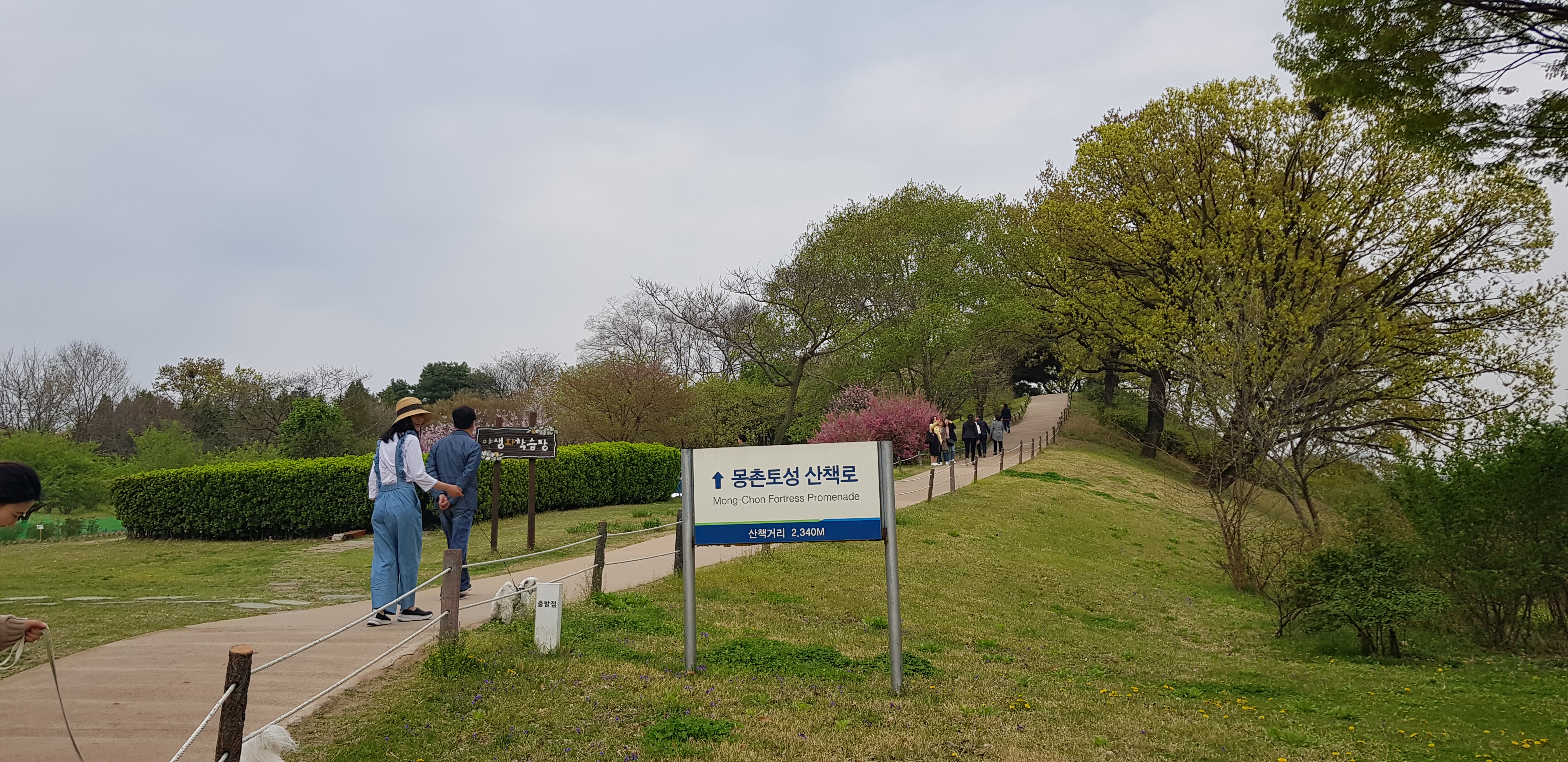
It is assimilated with nature according to many years that passed, so the present look is not enough for us to distinguish if it is man-made earthen ramparts or naturally-made hills.
세월이 흘러 사람이 만든 토성인지 자연적으로 만들어진 언덕인지 구분이 안 갈 정도로 자연과 동화되어 있다.

Since the thick trees are growing on the hills, people seemed to walked along here with understanding it as a hill until it turned out to be Mongchontoseong.
제법 굵은 나무들이 언덕위에 자라고 있어 몽촌토성이라고 밝혀 지기 전까지 사람들은 동네 야산으로 알고 산책을 했을 것 같다.

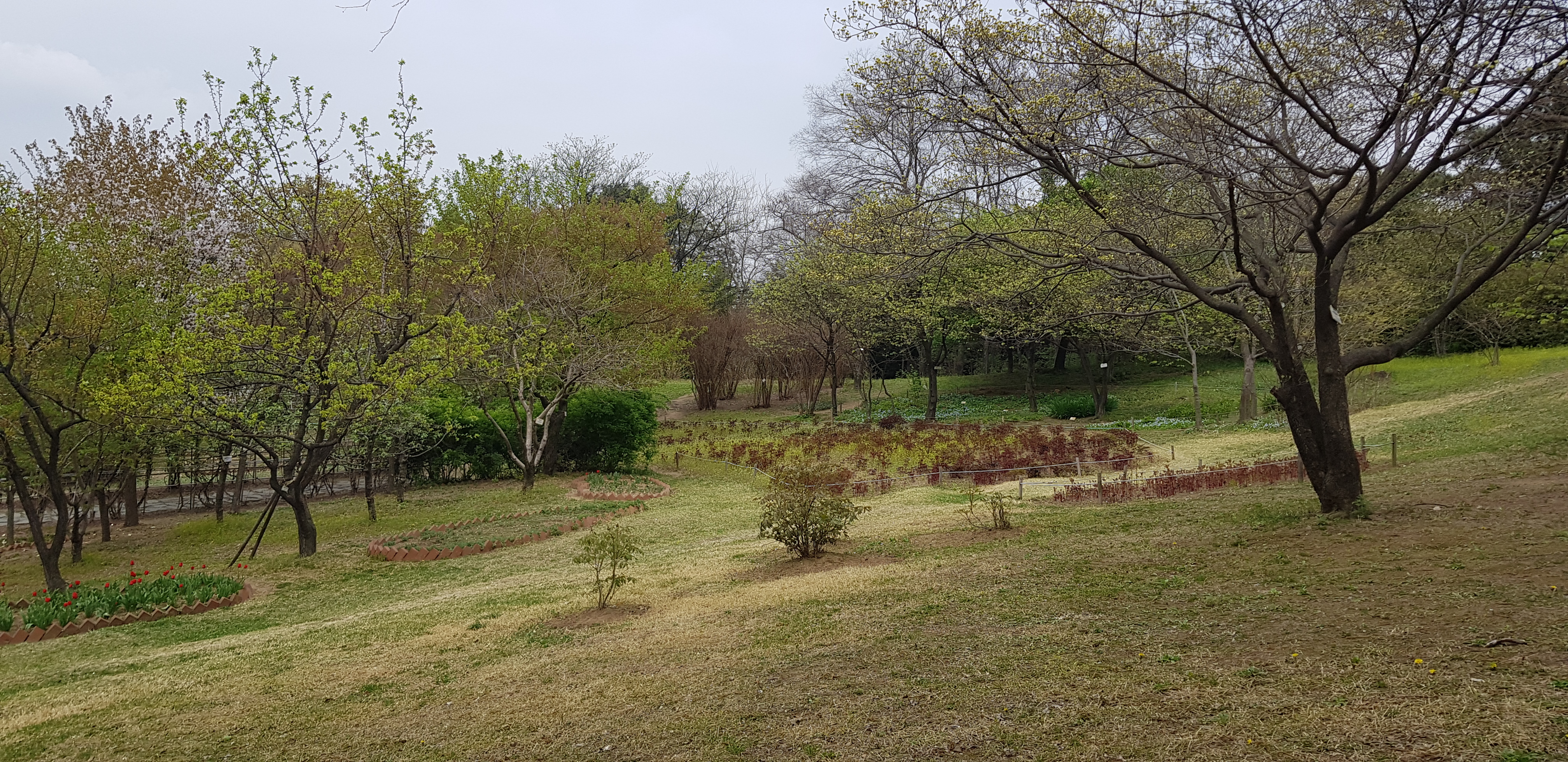

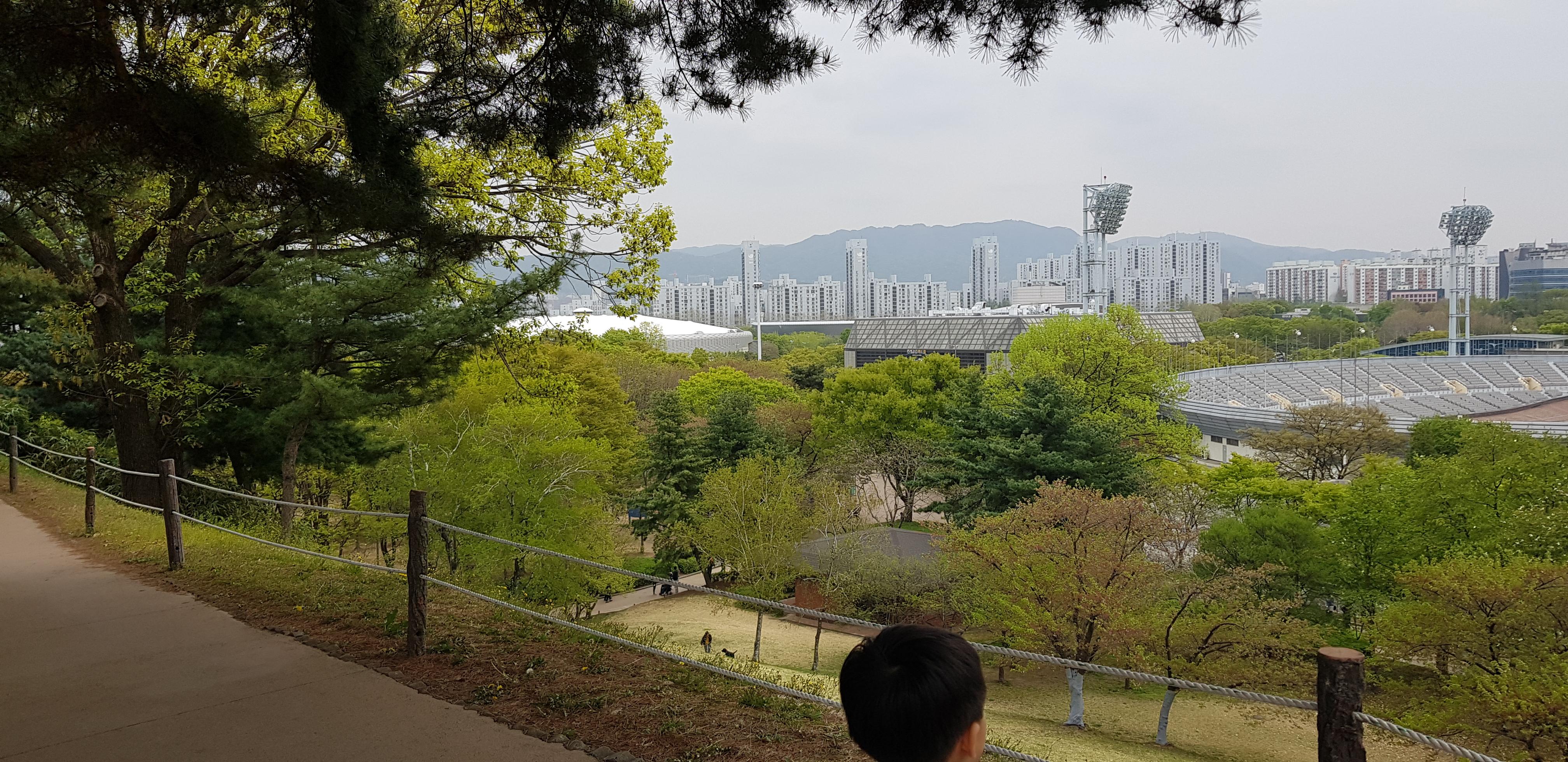



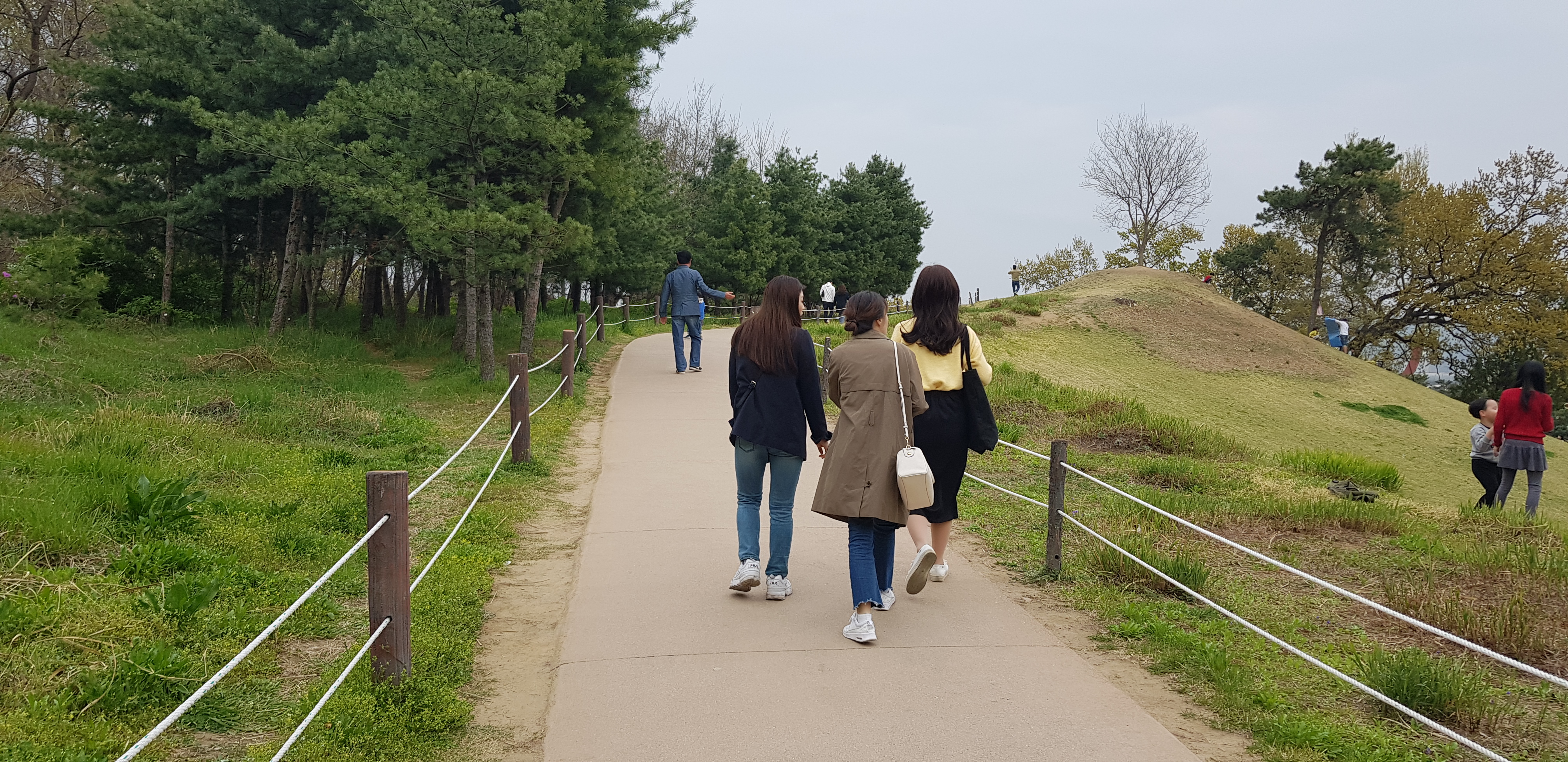


An exhibition hall that preserves Baekje's residence is located between Fortress Road.
백제의 주거지를 보존해 놓은 전시관이 토성길 사이에 마련되어 있다.
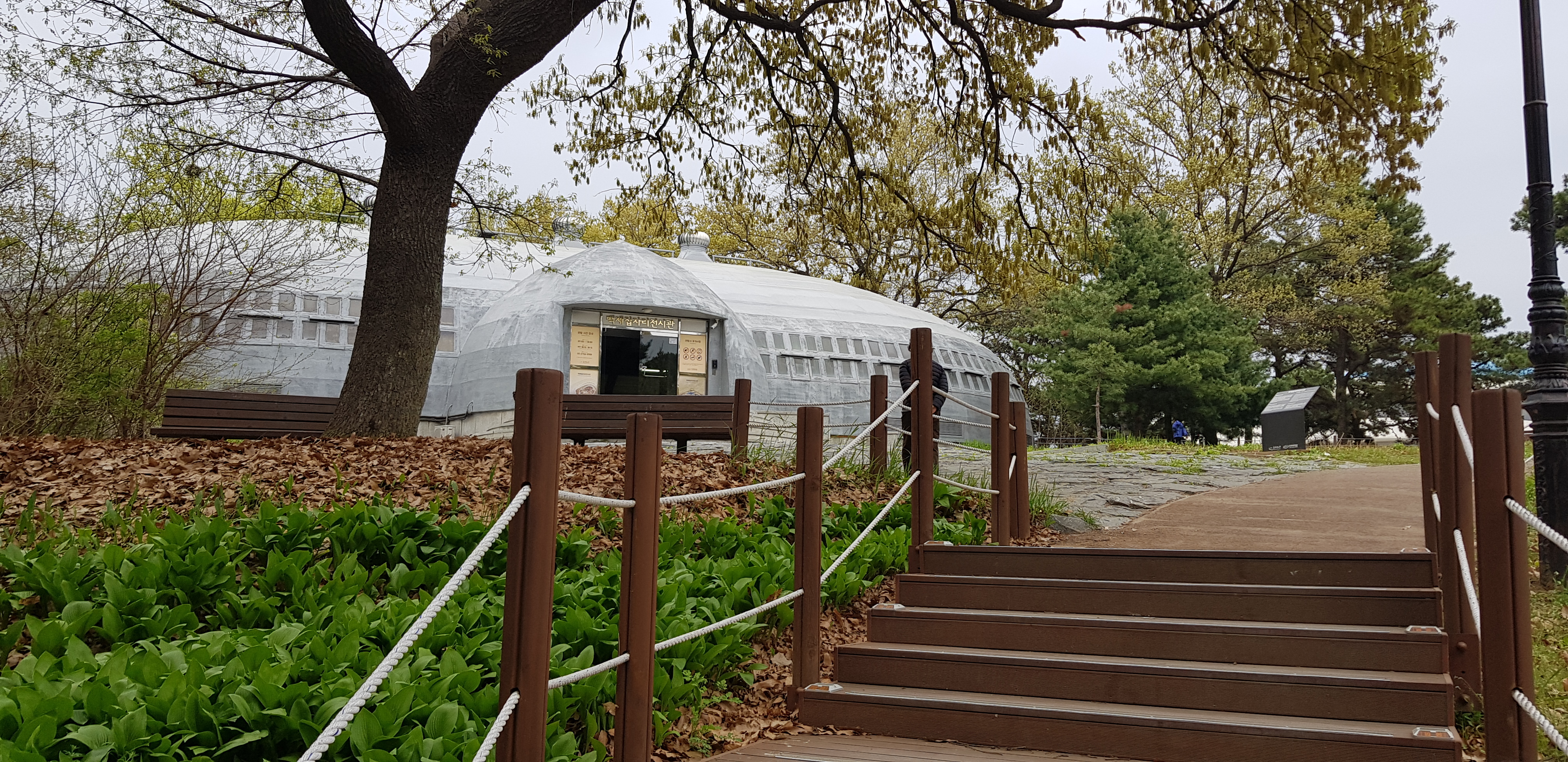
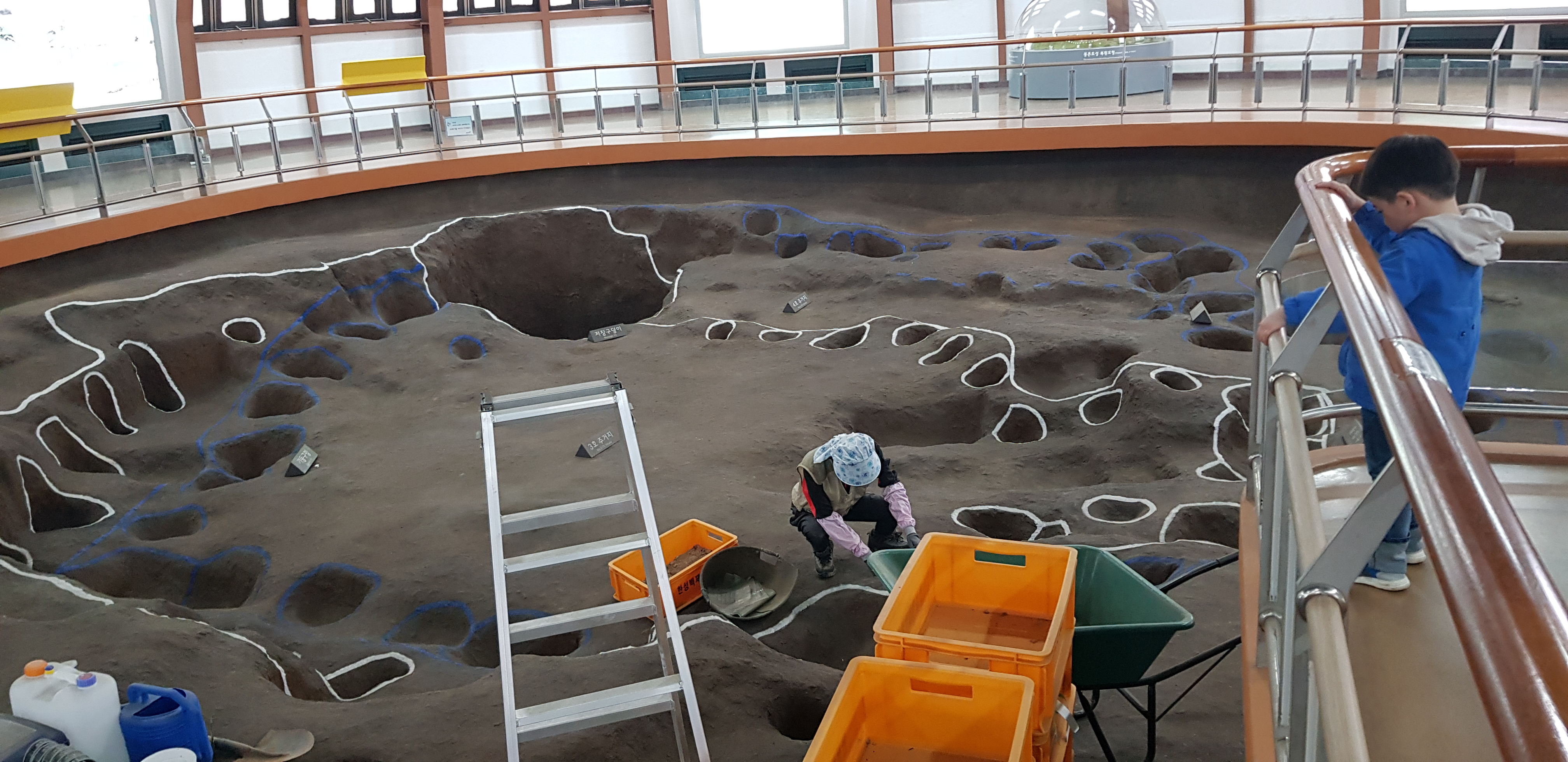

The height of Fortress is about 6.7m, and you may be wondering if this wall can protect from enemy. However, we need to consider that the land where the Baekje people lived should be dug about 3 ~ 4M from the current height. In other words, the wall at that time was much higher than it is now.
토성의 높이가 약 6.7m 정도라고 하는데 이 정도의 성벽이 방어를 할 수 있을까라는 의심이 들겠지만 백제시대 사람들이 살던 땅은 현재의 높이에서 3~4M정도 파내려가야 한다. 즉 당시의 성벽은 현재 보시는 것보다 훨씬 높았다.
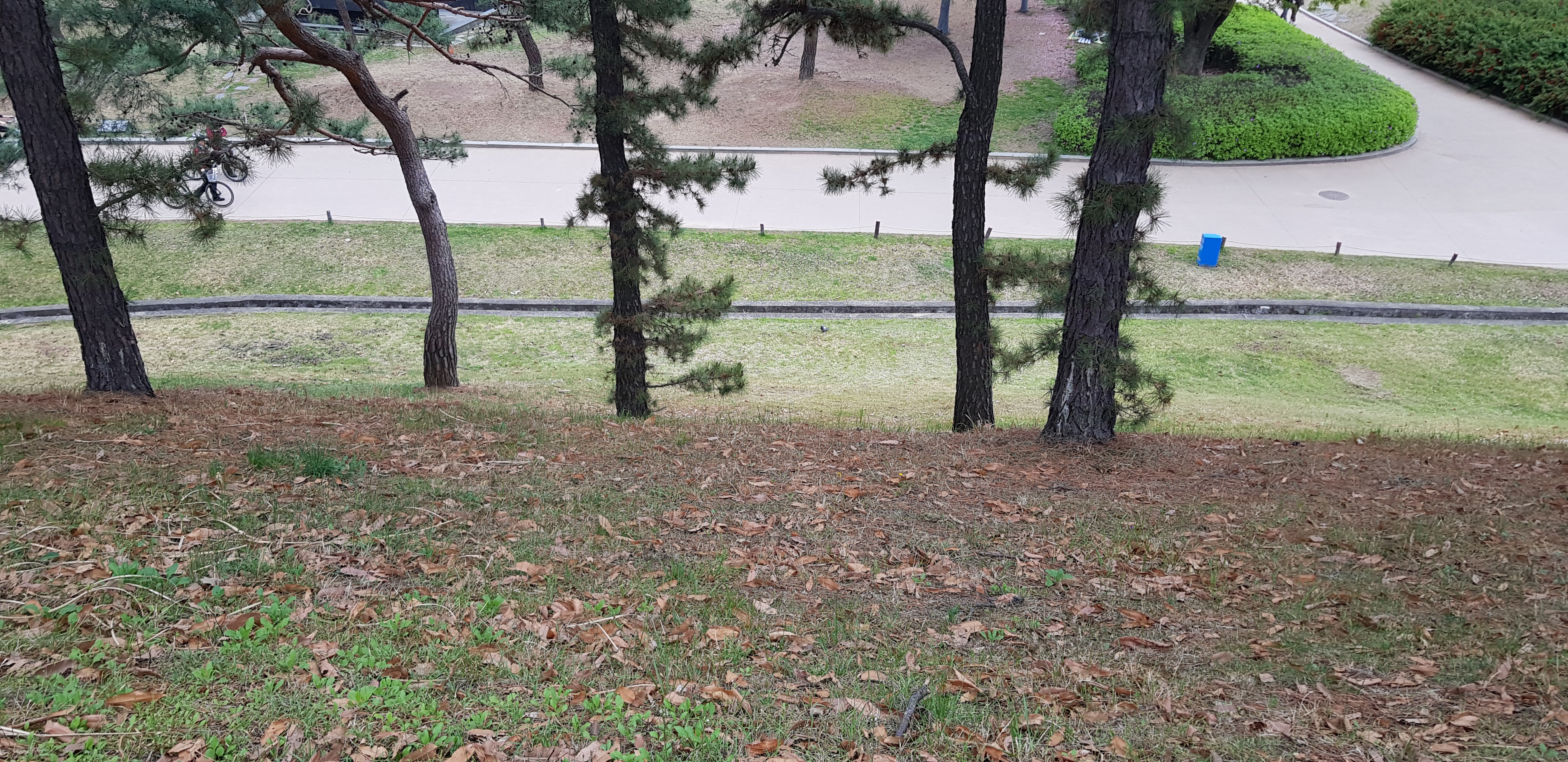
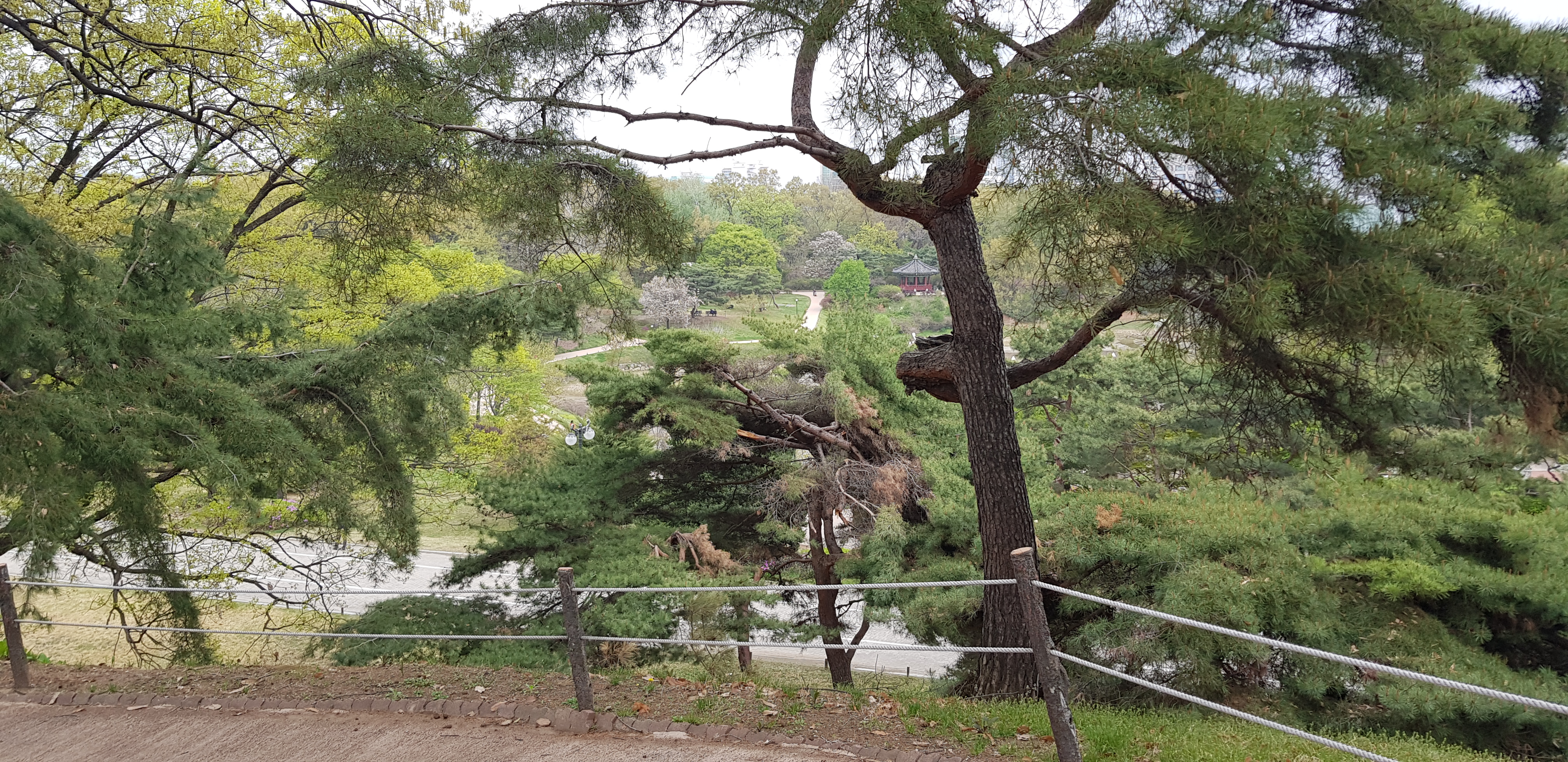
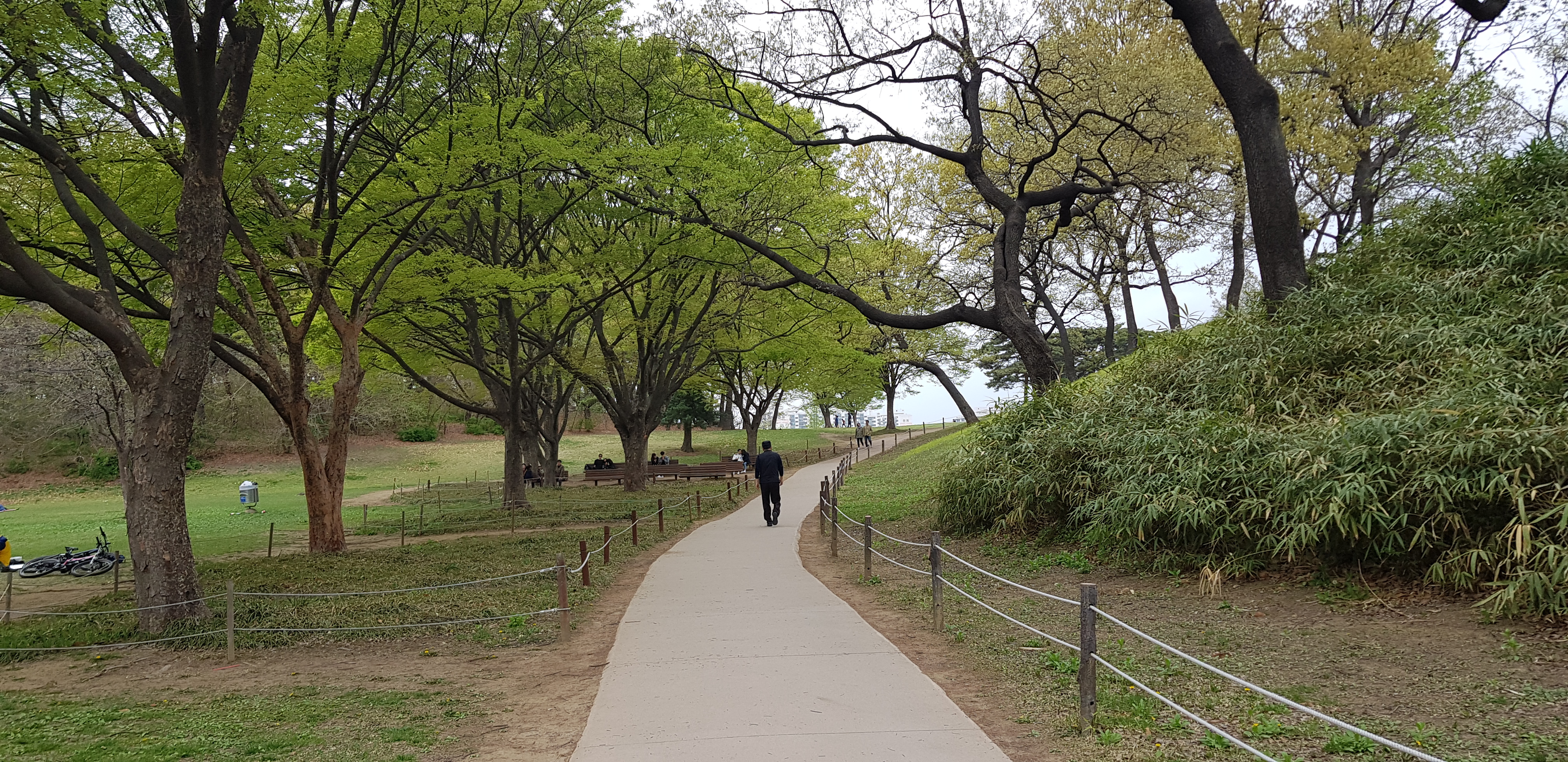
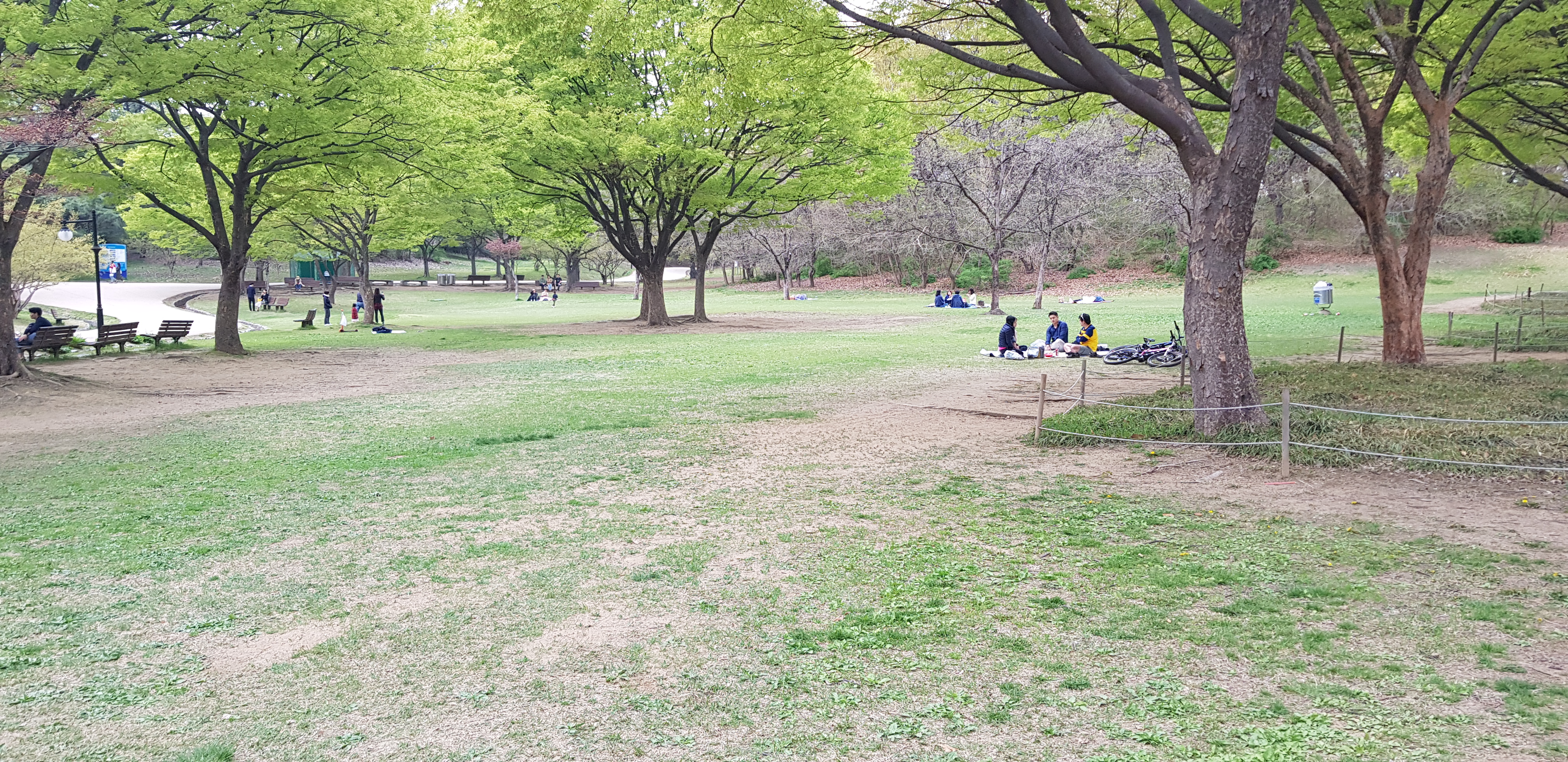
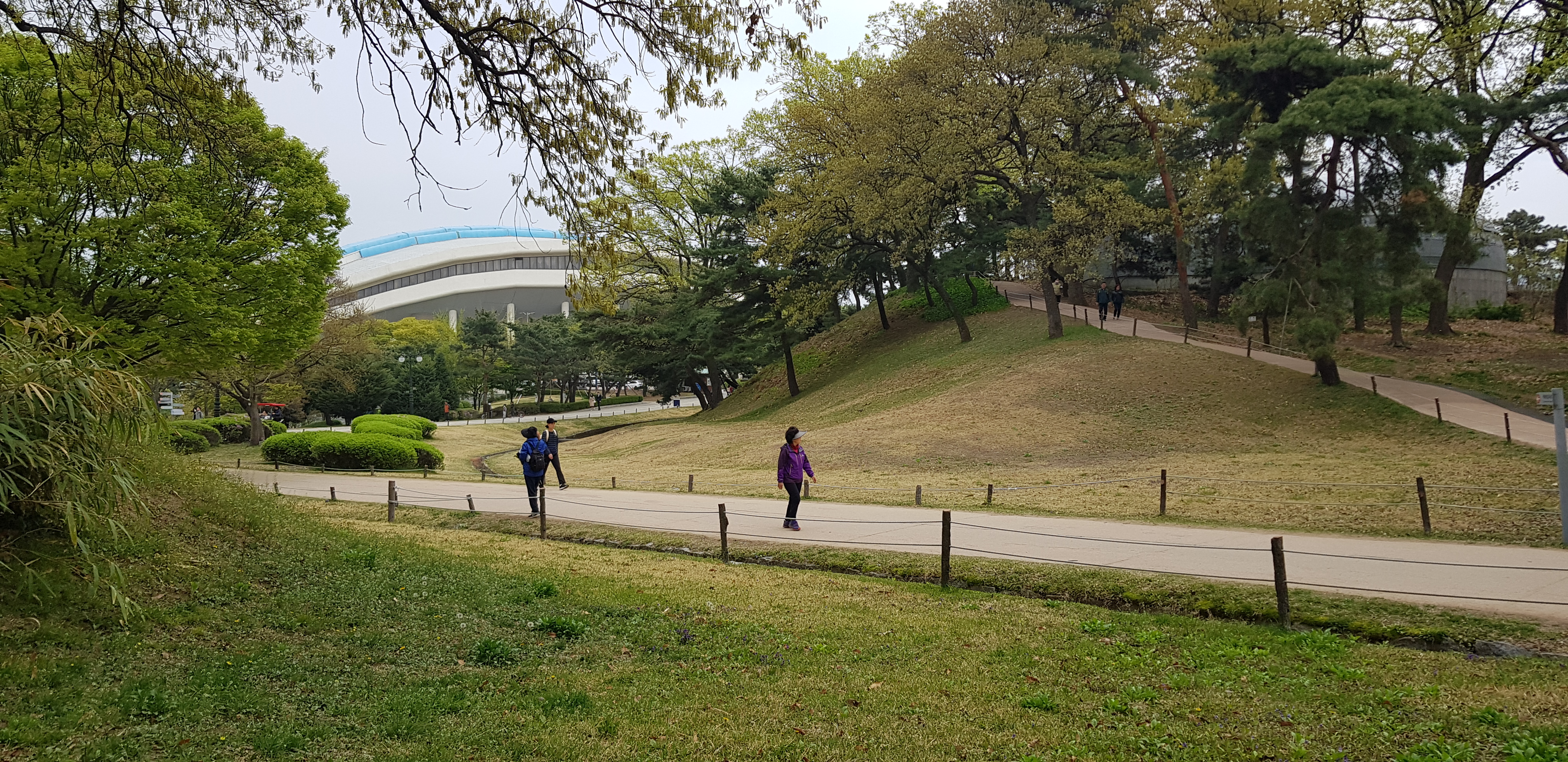
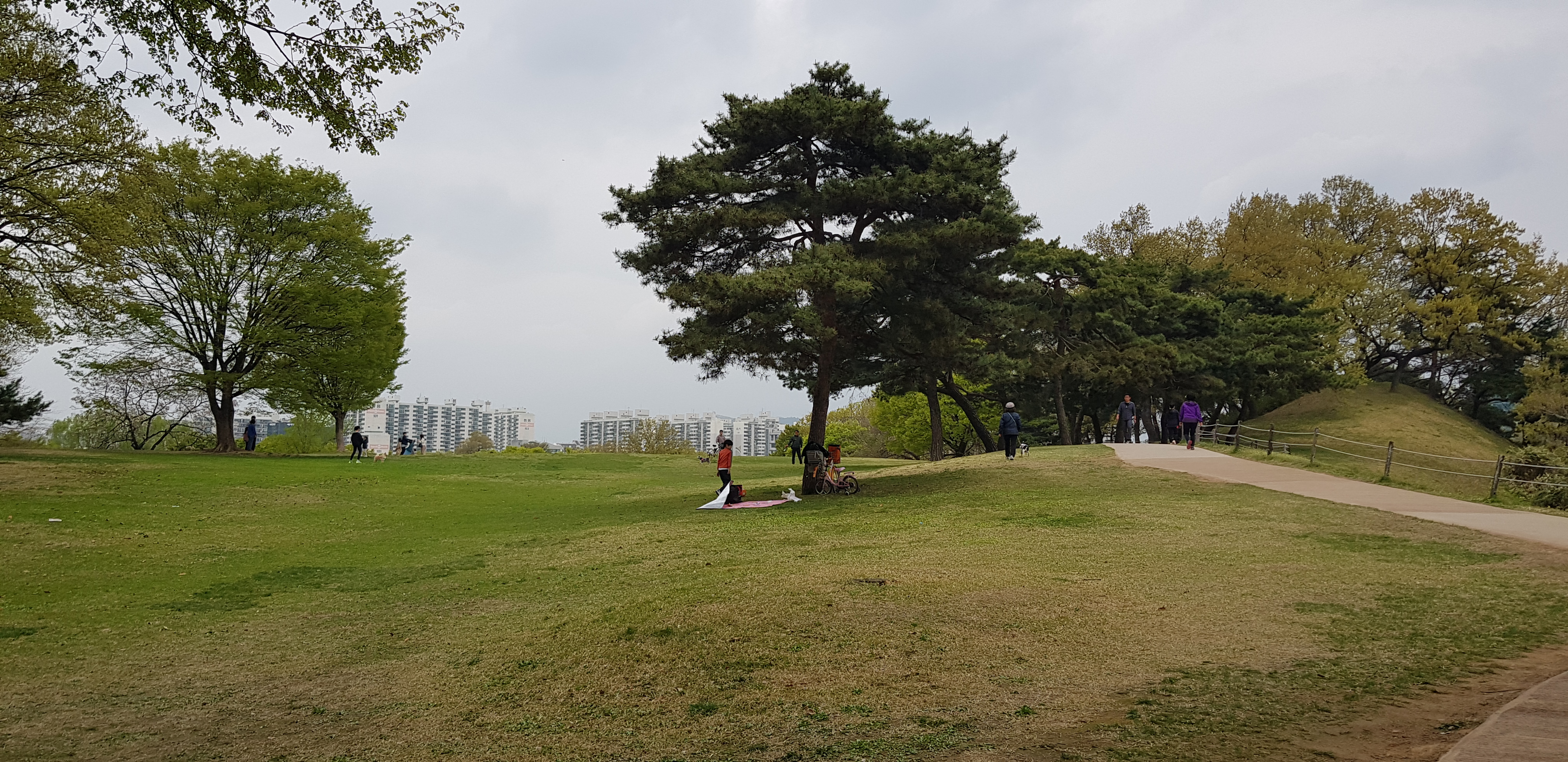
Perhaps the following barriers were installed around the walls. Also, Fortress, now visible, has a gentle slope as the soil has been flowing down for many years, and it is estimated that the slope at that time was much steeper than now.
성벽 주위로는 아래와 같은 목책도 설치되어 있었을 것이다. 또한 지금 보이는 토성은 오랜 세월동안 토양이 흘러내려 완만한 경사를 이루게 되었고 이전에는 경사가 훨씬 급했을 것으로 추정된다.




On one side of the park there was still under excavation of Mongchontoseong. As it served as the capital of Baekje for 700 years, a huge amount of relics will be asleep in the ground and it will take a long time to dig.
공원 한 편에는 아직도 몽촌토성에 대한 발굴조사가 이루어 지고 있었다. 700년이라는 시간동안 백제의 수도로 기능했던 곳인만큼 엄청난 양의 유물들이 땅속에 잠자고 있을 것이며 발굴하는데 오랜 시간이 걸릴 것이다.

30 years have passed before we know since the establishment of the Olympic Park, and the appearance of the park has matured. The large trees, which stand on a large lawn, offer us relaxation in the crowded city center.
올림픽공원이 조성된 지도 어느 덧 30년의 시간이 흘러 공원의 모습이 완숙하게 자리를 잡았다. 넓은 잔디밭에 간간이 서 있는 커다란 나무들이 복잡한 도심속에서 우리들에게 여유로움을 선사한다.
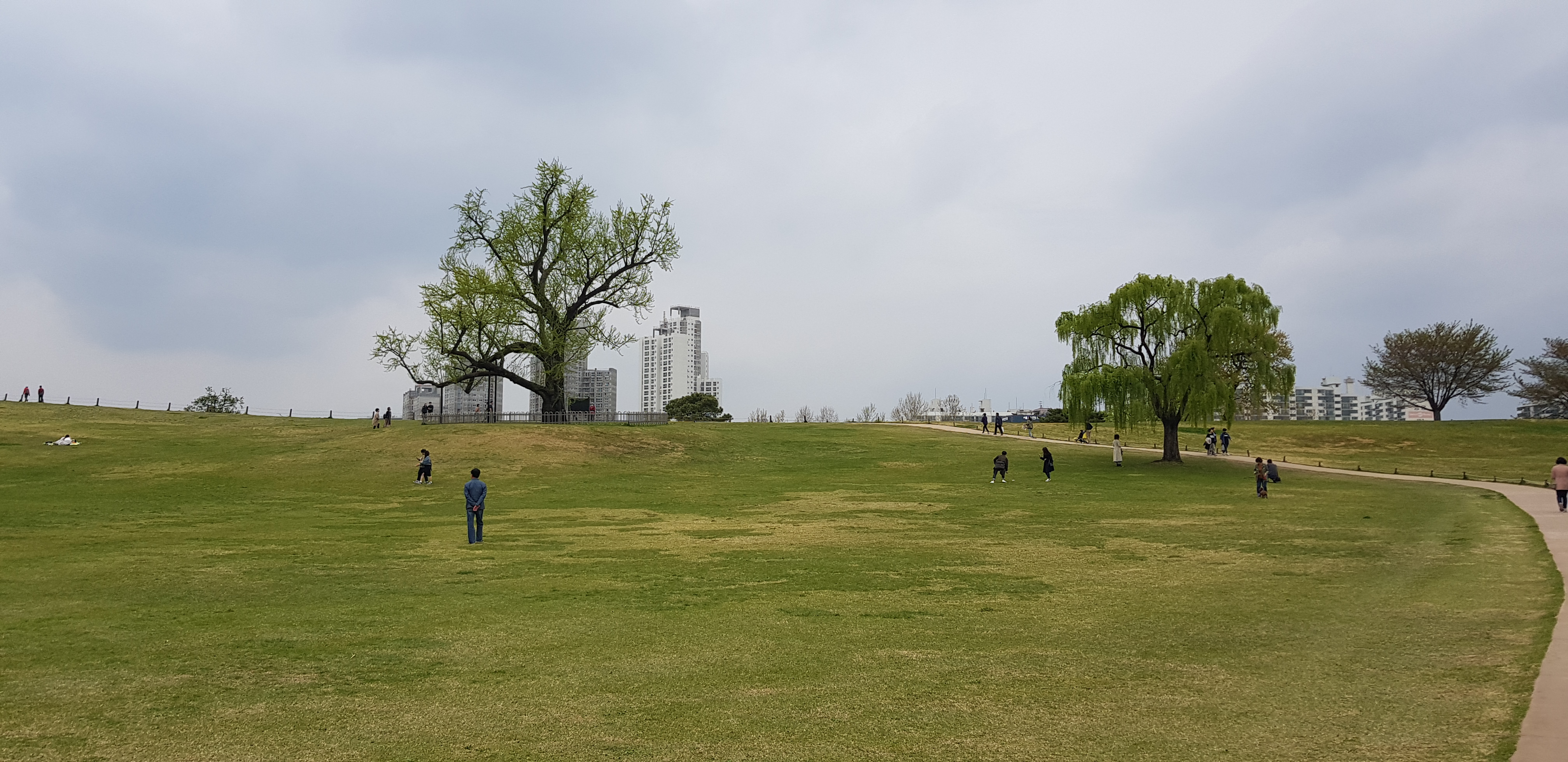
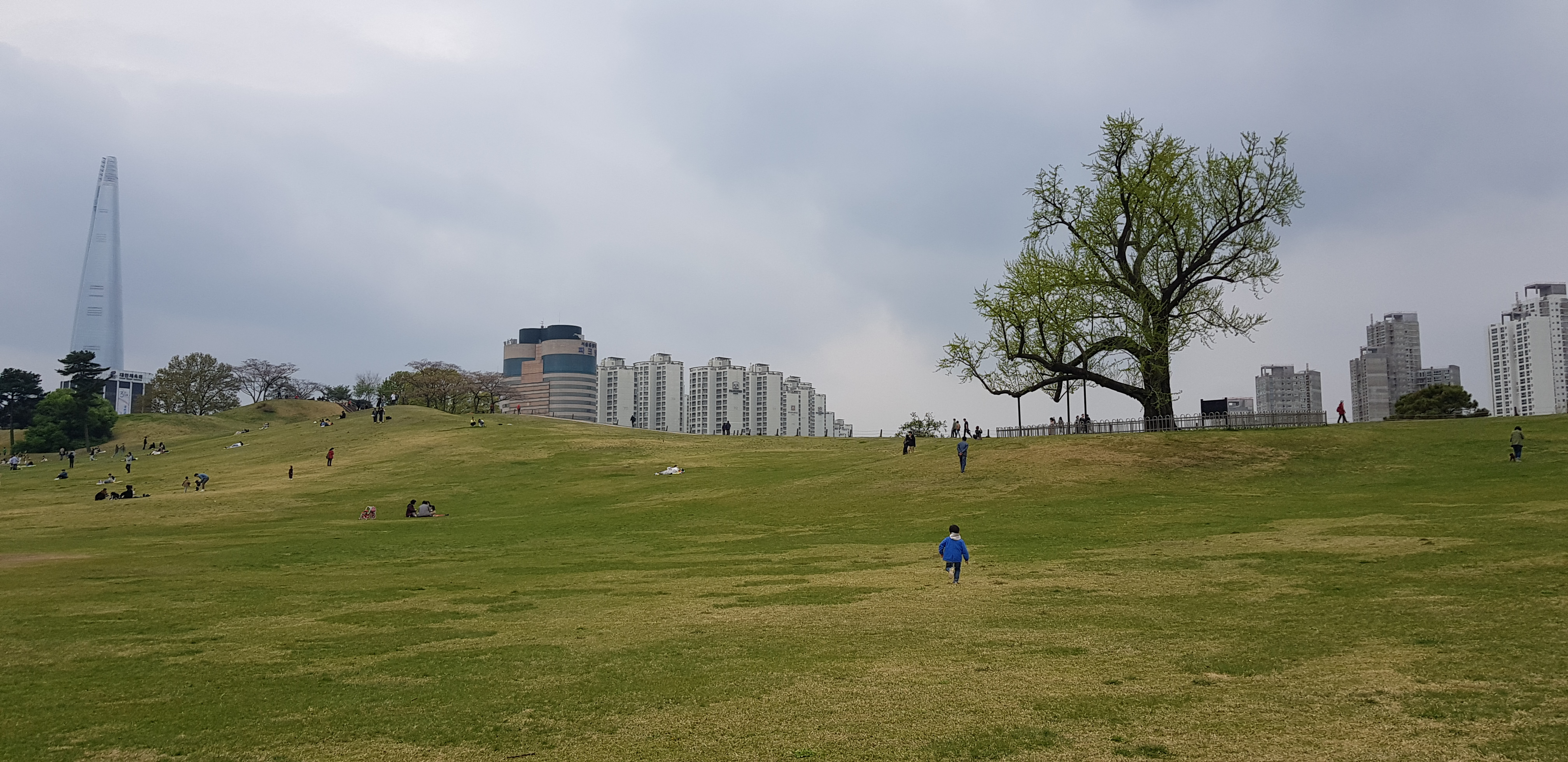
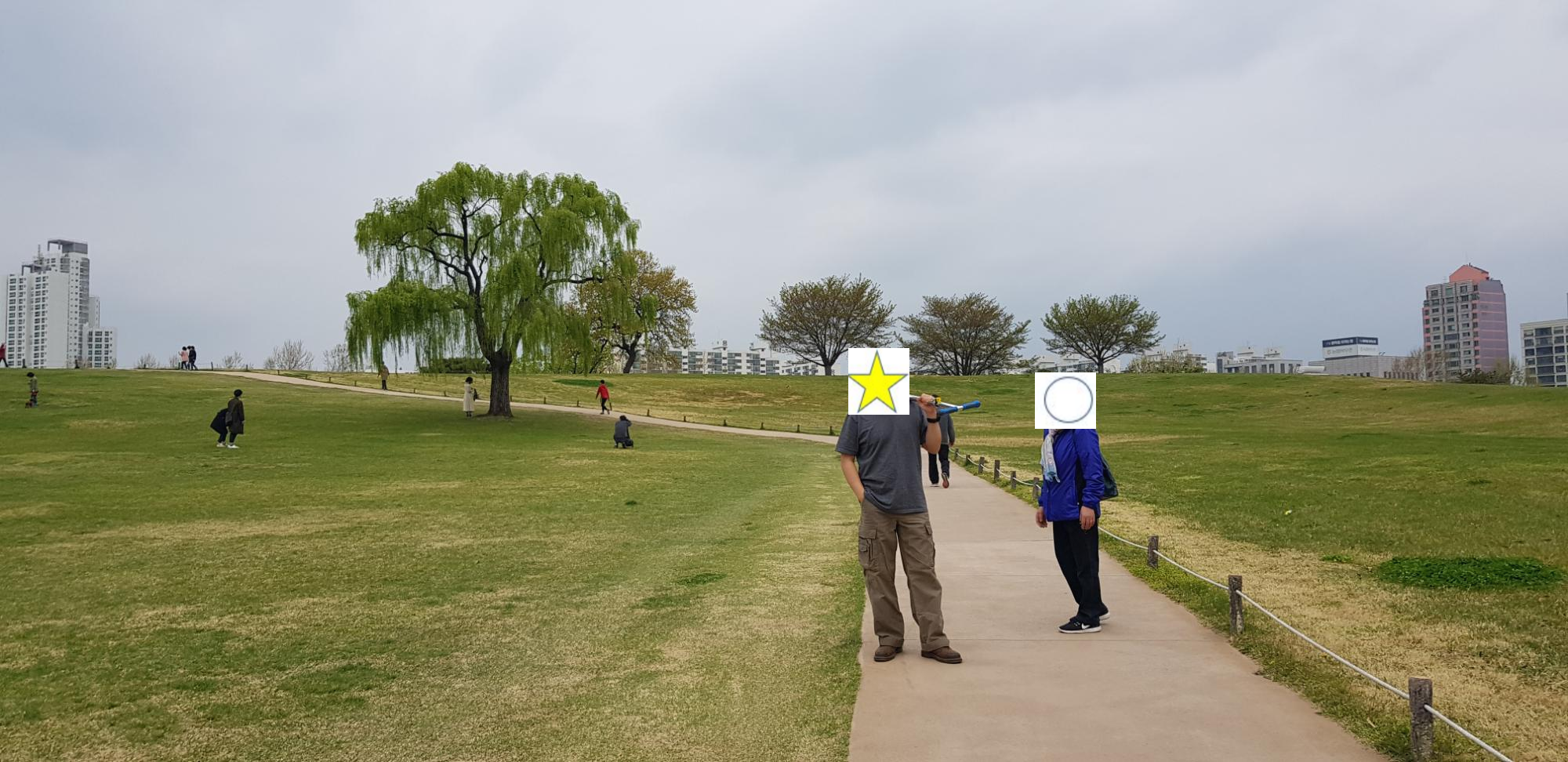
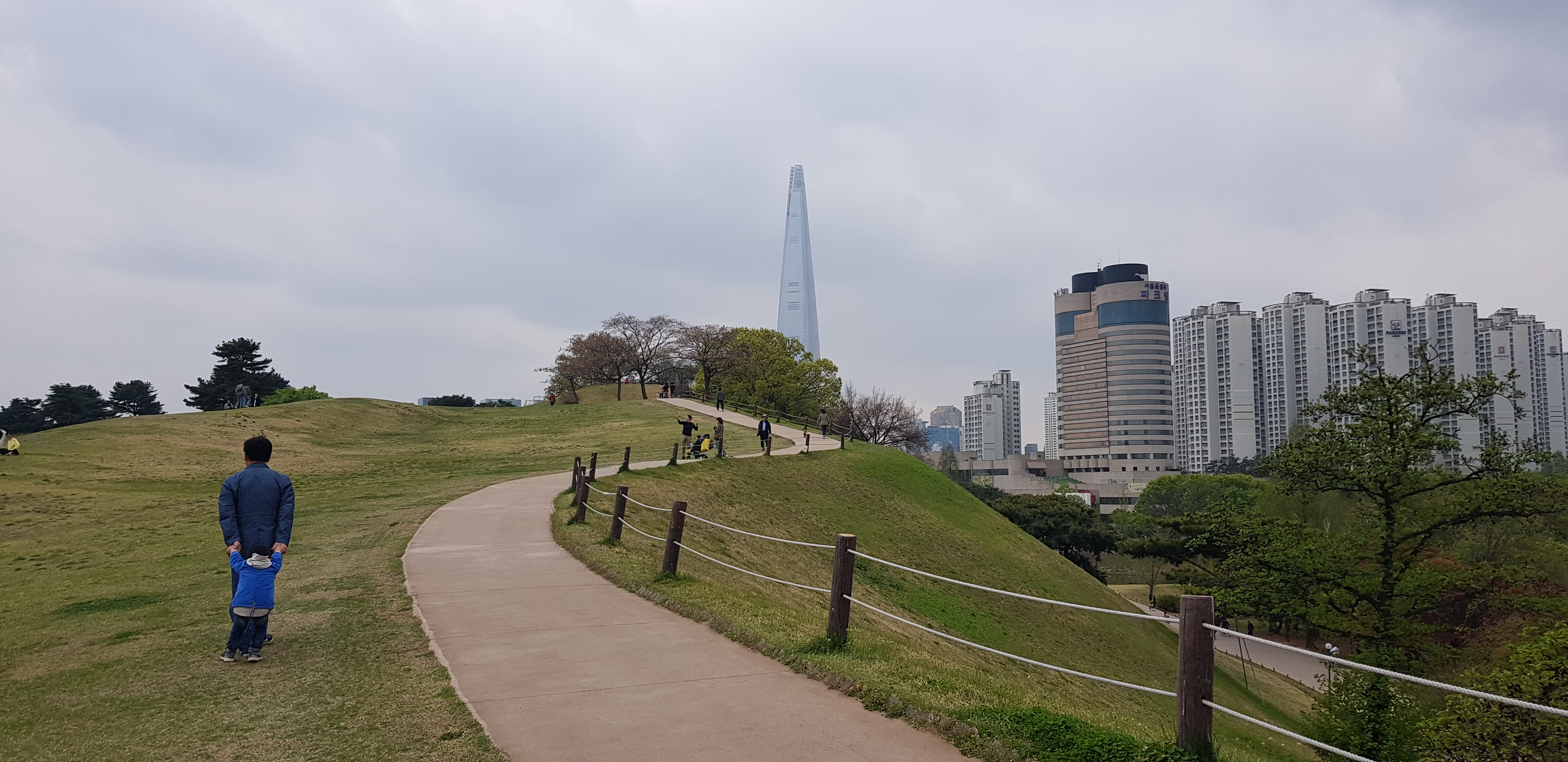

Citizens enjoy a relaxing weekend afternoon on the lawn.
시민들이 잔디밭에서 여유로운 주말 오후를 즐기고 있다.
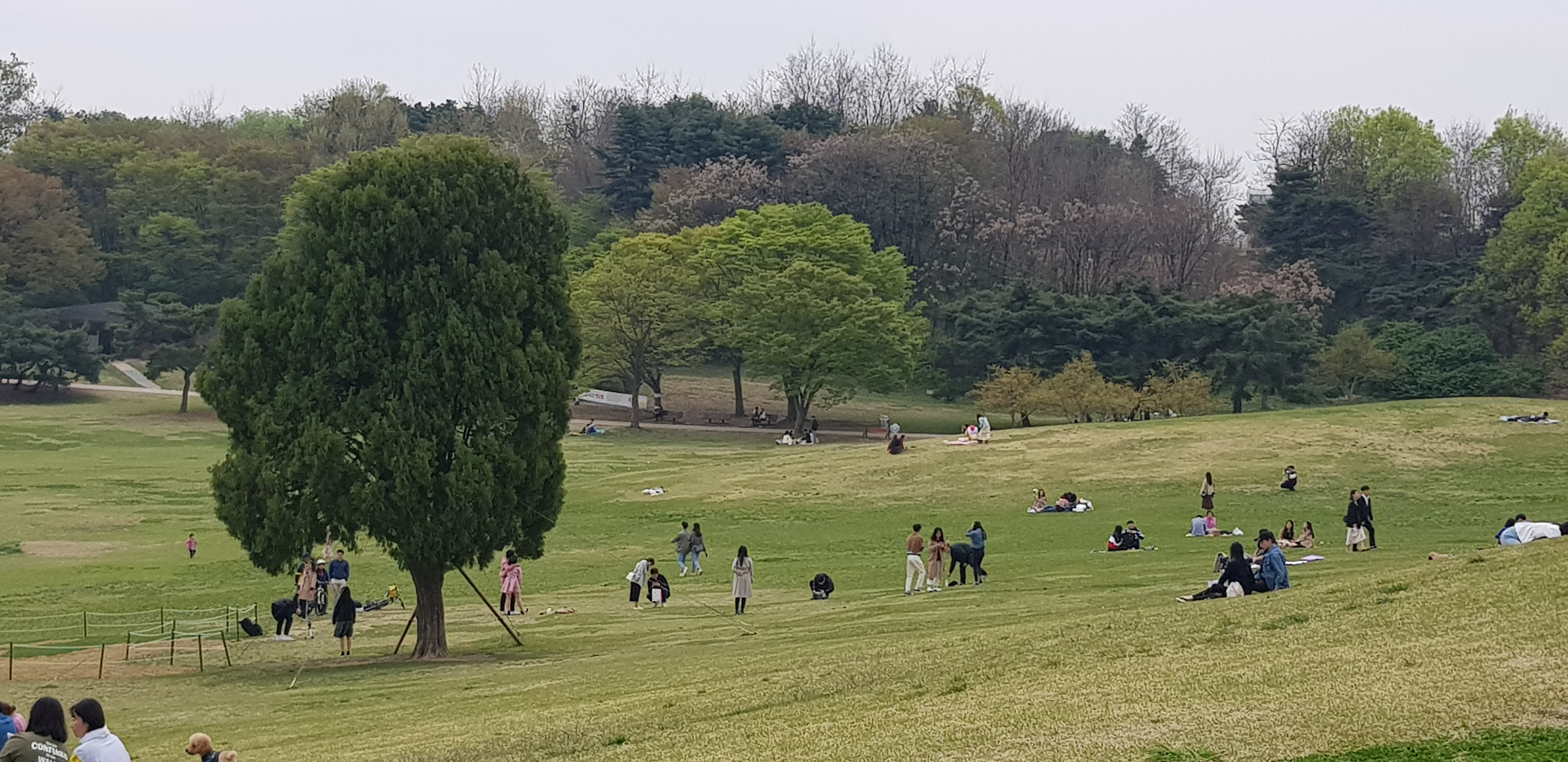

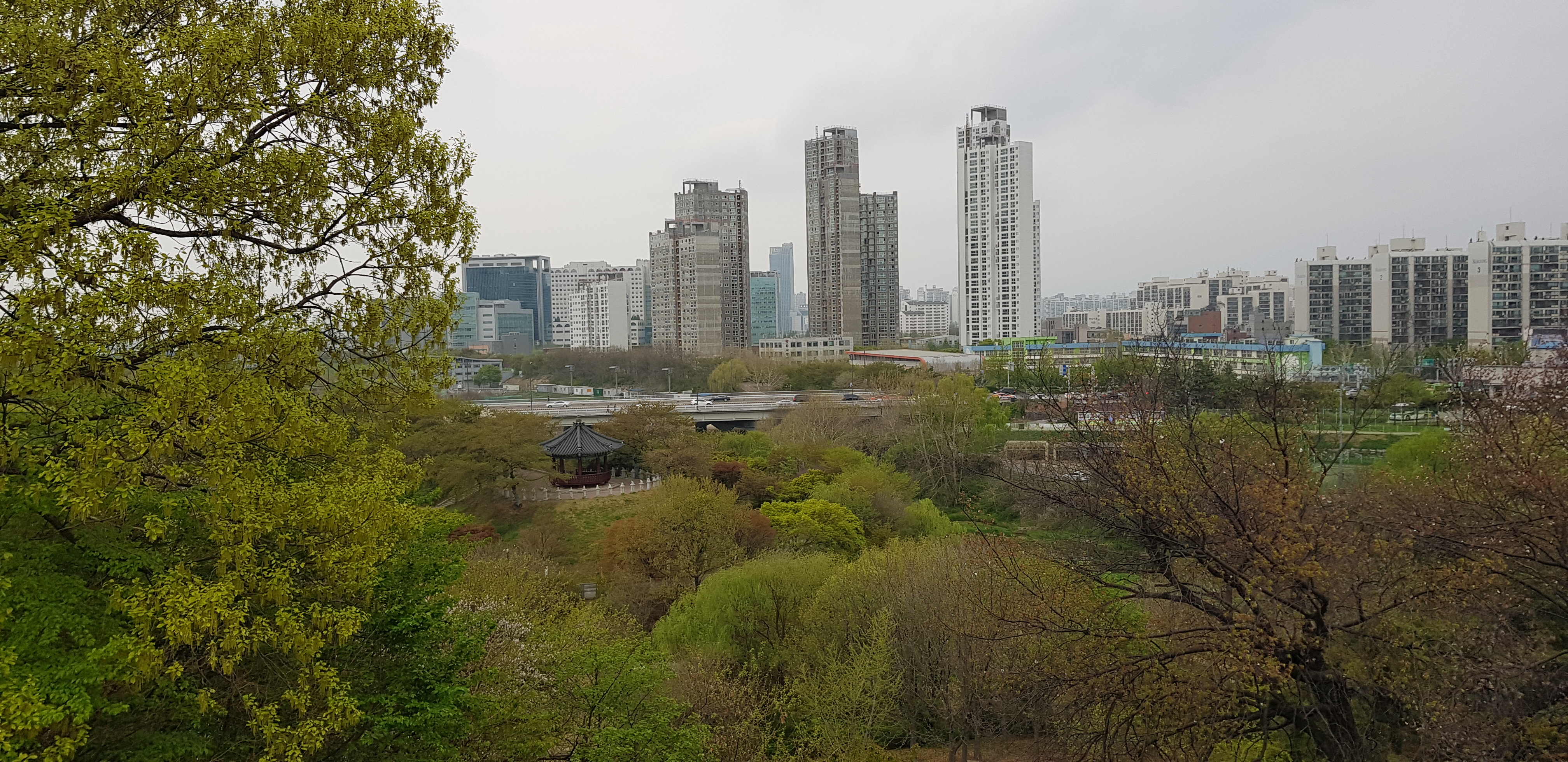
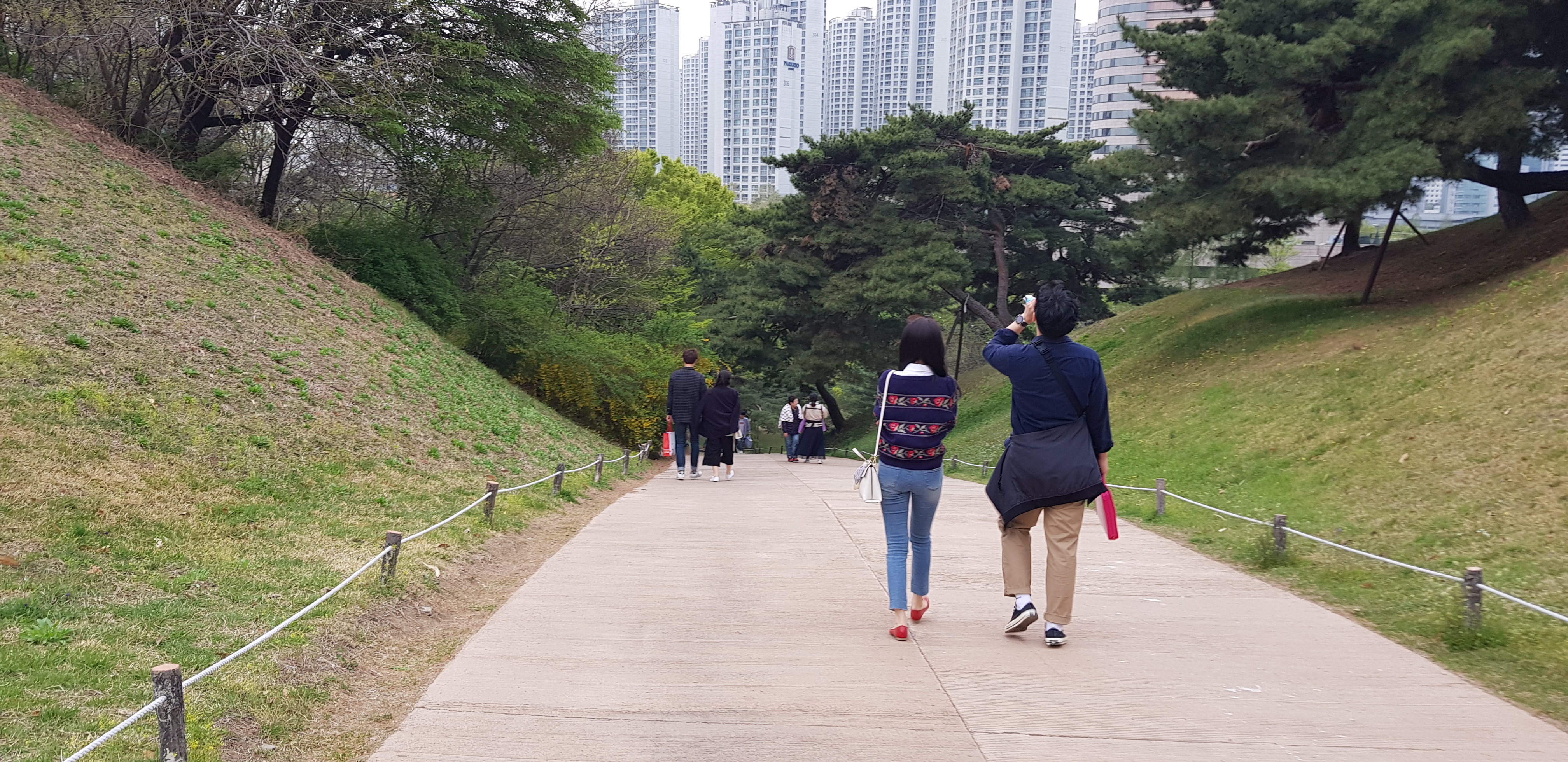
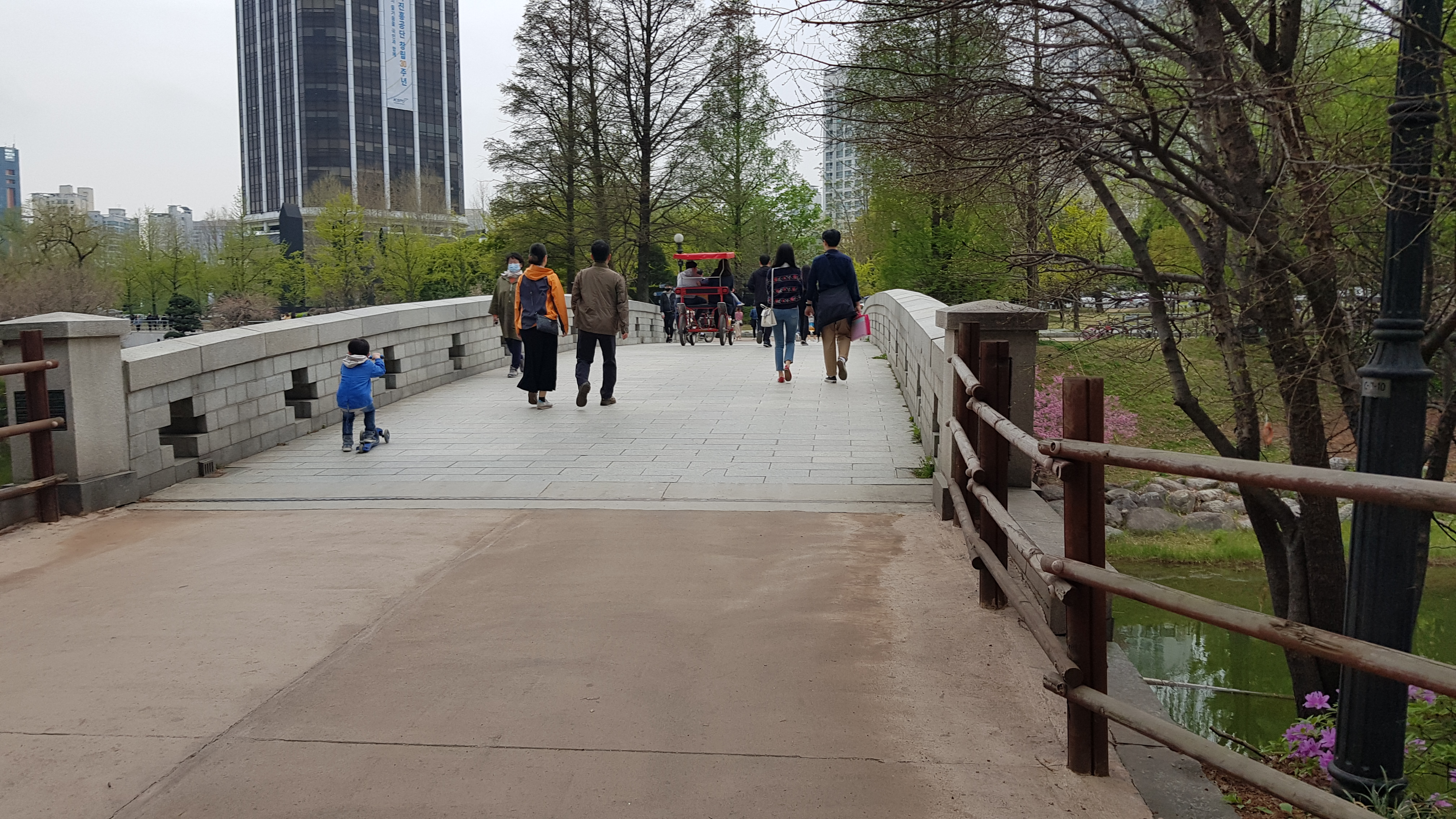
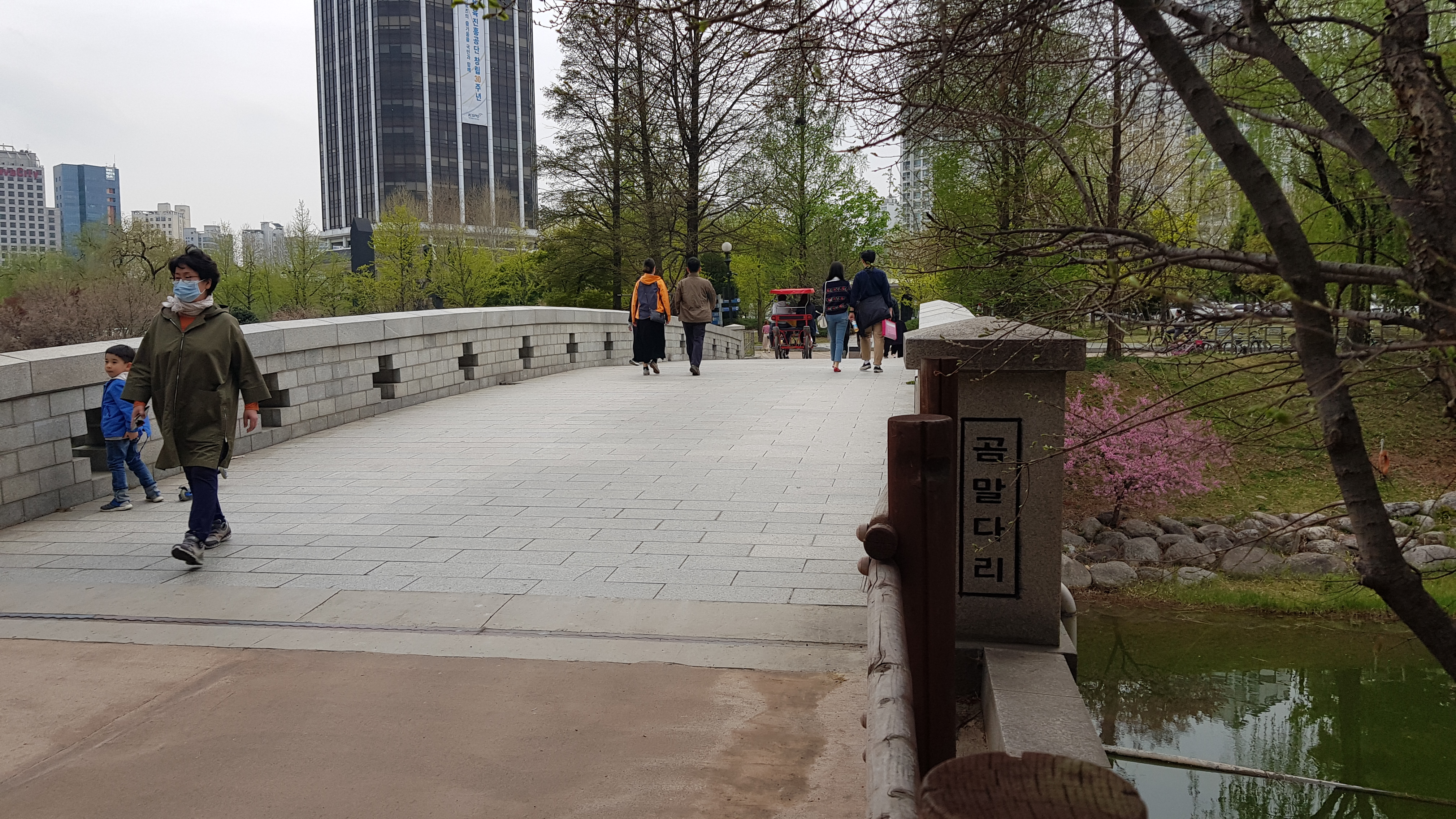

It is a fountain that was presented in Turkey to pray for the success of the 88 Seoul Olympics. Turkey and Korea have the lasting relationship with each other as brothers. Turkey dispatched the world's 4th largest troops during the Korean War and gave the most active help at the forefront.
터키에서 88서울올림픽의 성공을 기원하면서 선물한 분수대이다. 터키와 한국은 서로를 형제의 나라로 부르면서 끈끈한 관계에 있다. 터키는 6.25 전쟁당시 세계 4위 규모의 병력을 파병했으며 최전선에서 가장 적극적으로 도움을 주었다.
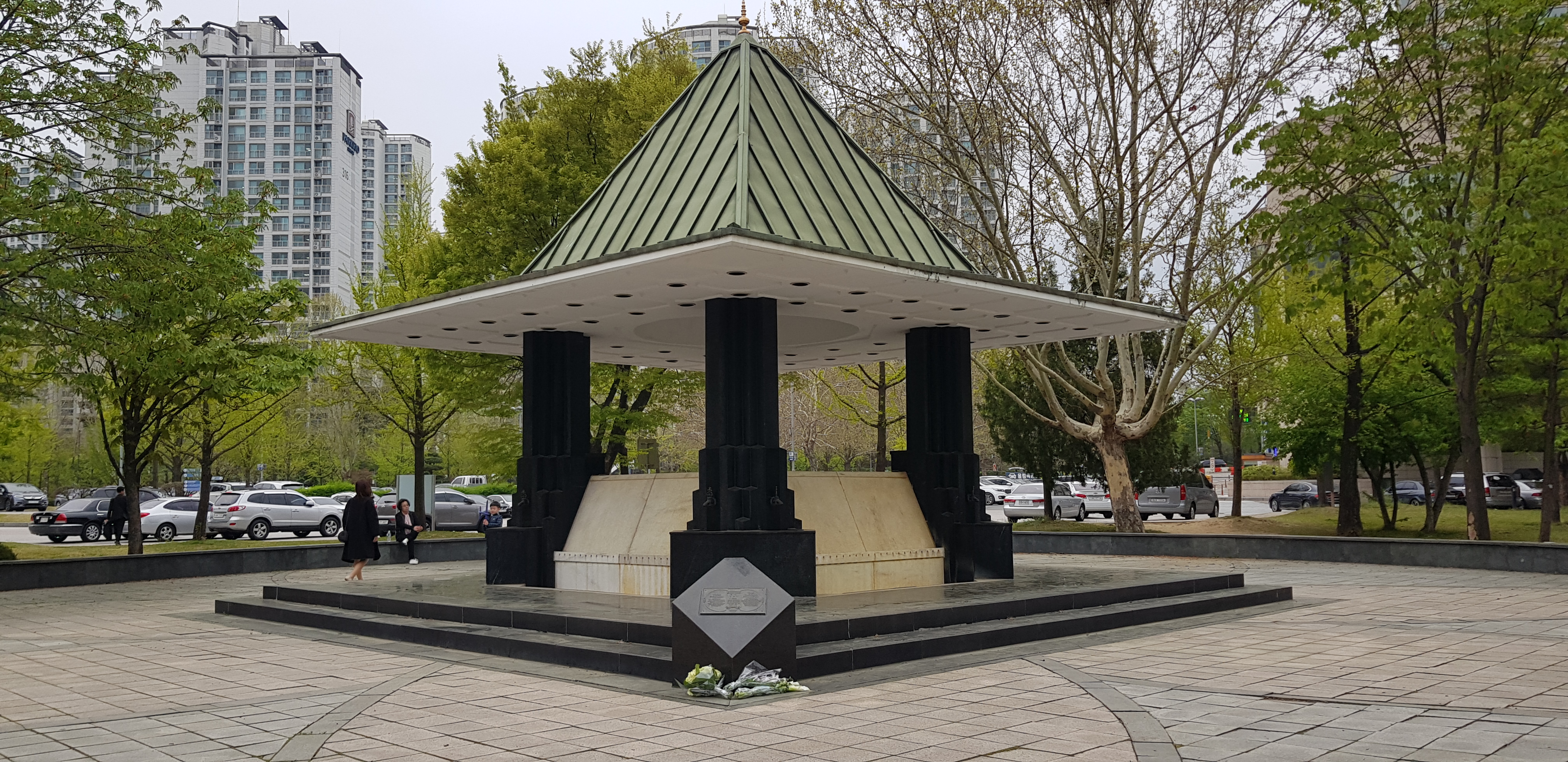
When Korea met with Turkey in the third-place match during 2002 Korea- Japan World Cup, it spread the Korean and Turkish flags together, and created a warm atmosphere to support Turkey. It is said that it gave a lot of favor to the Turkish people. I hope this good relationship will last for a long time.
한국은 2002년 월드컵 당시 터키와 3,4위전에서 만났을 때 한국과 터키 국기를 동시에 펼치고 터키도 함께 응원하는 훈훈한 분위기를 연출하여 터키 국민들에게 많은 호감을 주었다고 한다. 이런 좋은 관계가 오래도록 지속되었으면 하는 바람이다.
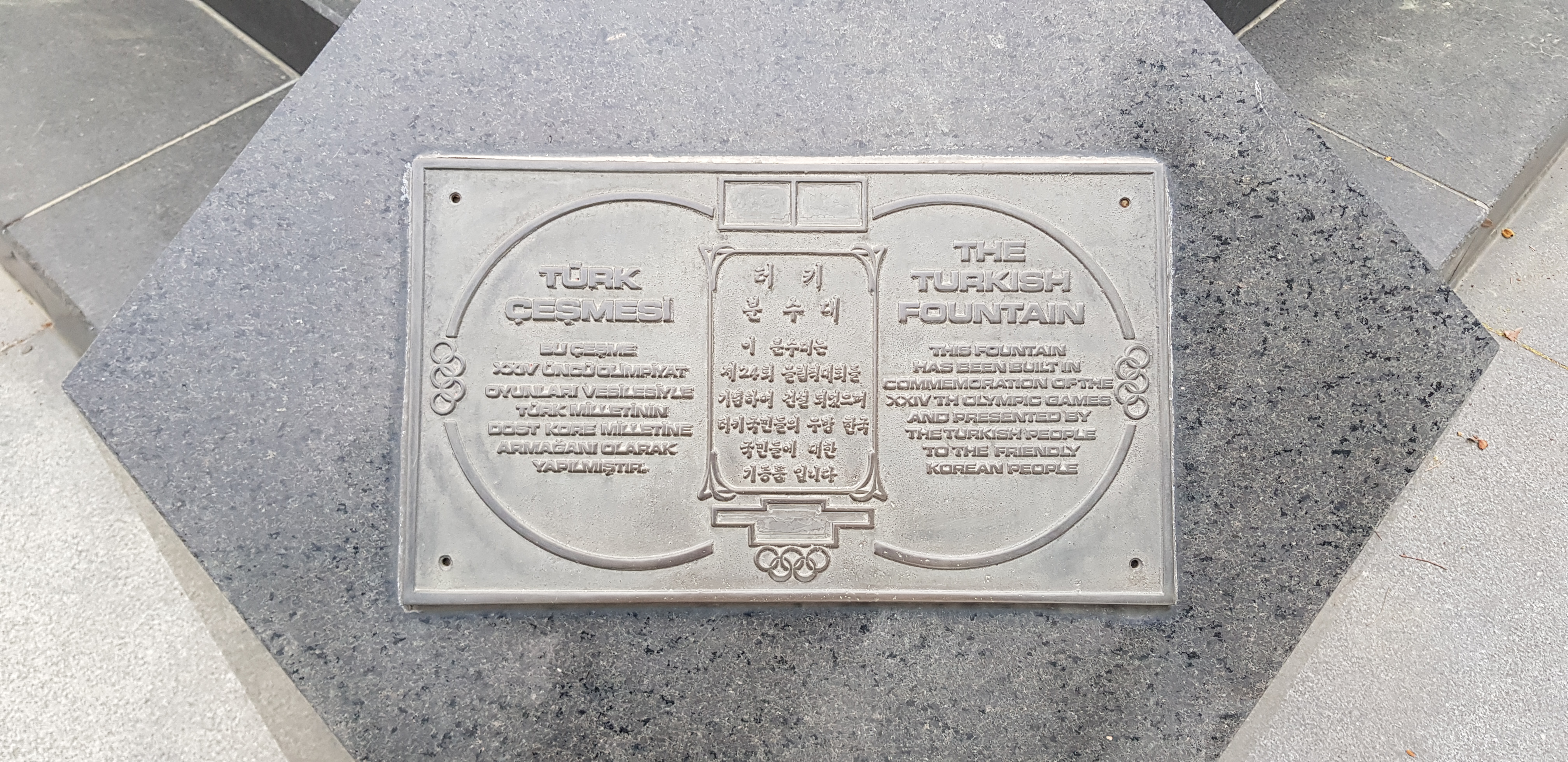

Enjoy a relaxing time in the Olympic Park which serves as a rest space in the city and a treasure house for relic of Baekje 1700 years ago.
도심속의 휴식공간과 1700년 전 백제의 유물창고로서의 역할을 하고 있는 올림픽공원에서 여유로운 시간을 보내보시길.

